TERRA LOO JAKARTA, INDONESIA

ALMA KOBER SØRENSEN IN COLLABORATION WITH BENJAMIN MEULENGRACHT

2022
PAGE OF CONTENT 1 2 3 4 5 RESEARCH & HYPOTHESIS THE PROTOTYPE FIELDWORK RESULTS REFLECTIONS AND POTENTIALS 4 16 31 39 44
This project was done in collaboration with Benjamin Meulengracht. The toilet was designed and built together. The testing was however done individually.

RESEARCH AND HYPOTHESIS
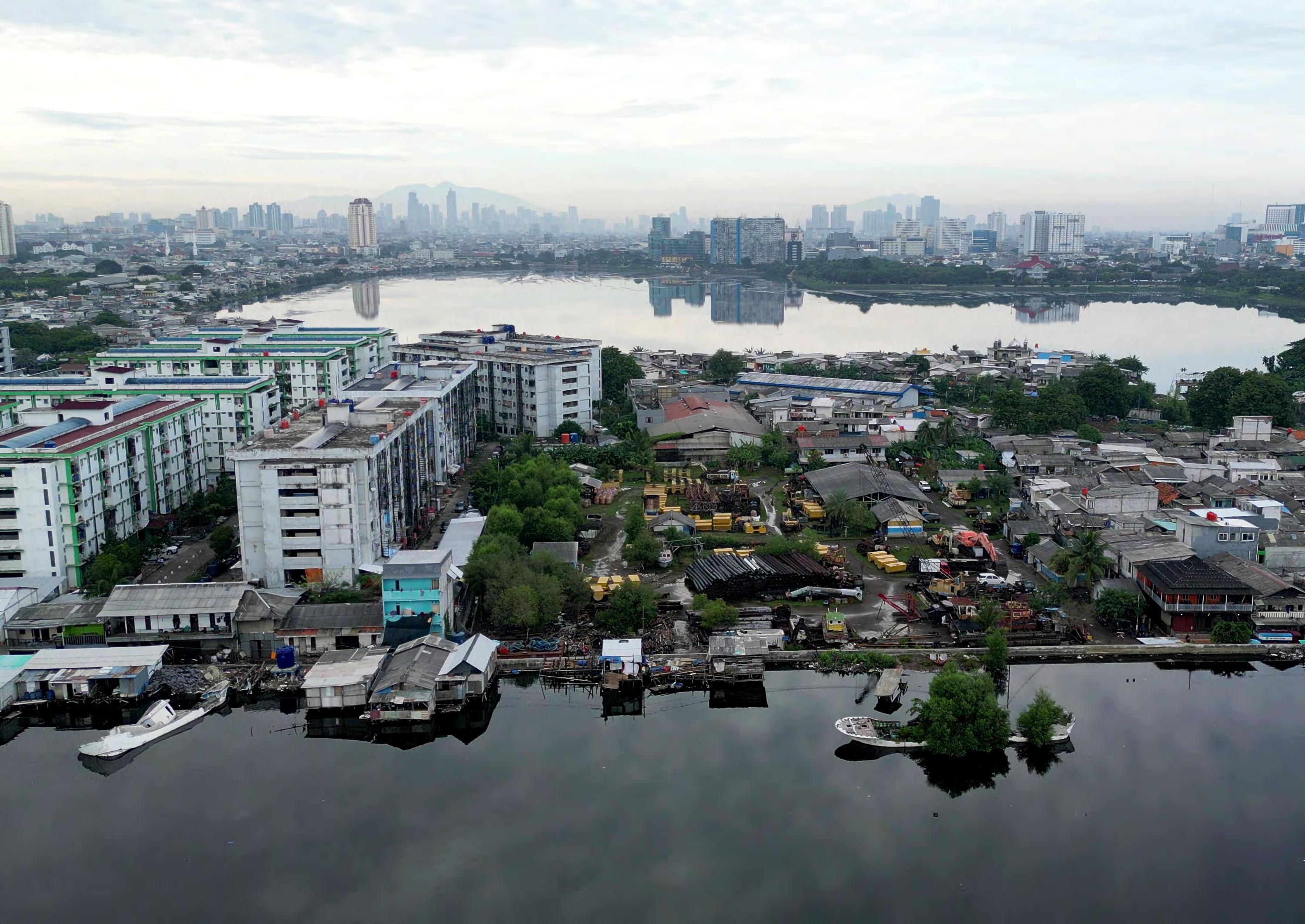
CITY: JAKARTA, CAPITAL OF INDONESIA
INHABITANTS: 10.56 MILLION (2020, REGISTERED)
DENSITY: 15,906.5/km2
AREA: 661,5 km²
ISLAND: JAVA
COORDINATED: 6°12´S 106°49´E Jakarta experiences flooding from 4 different directions.
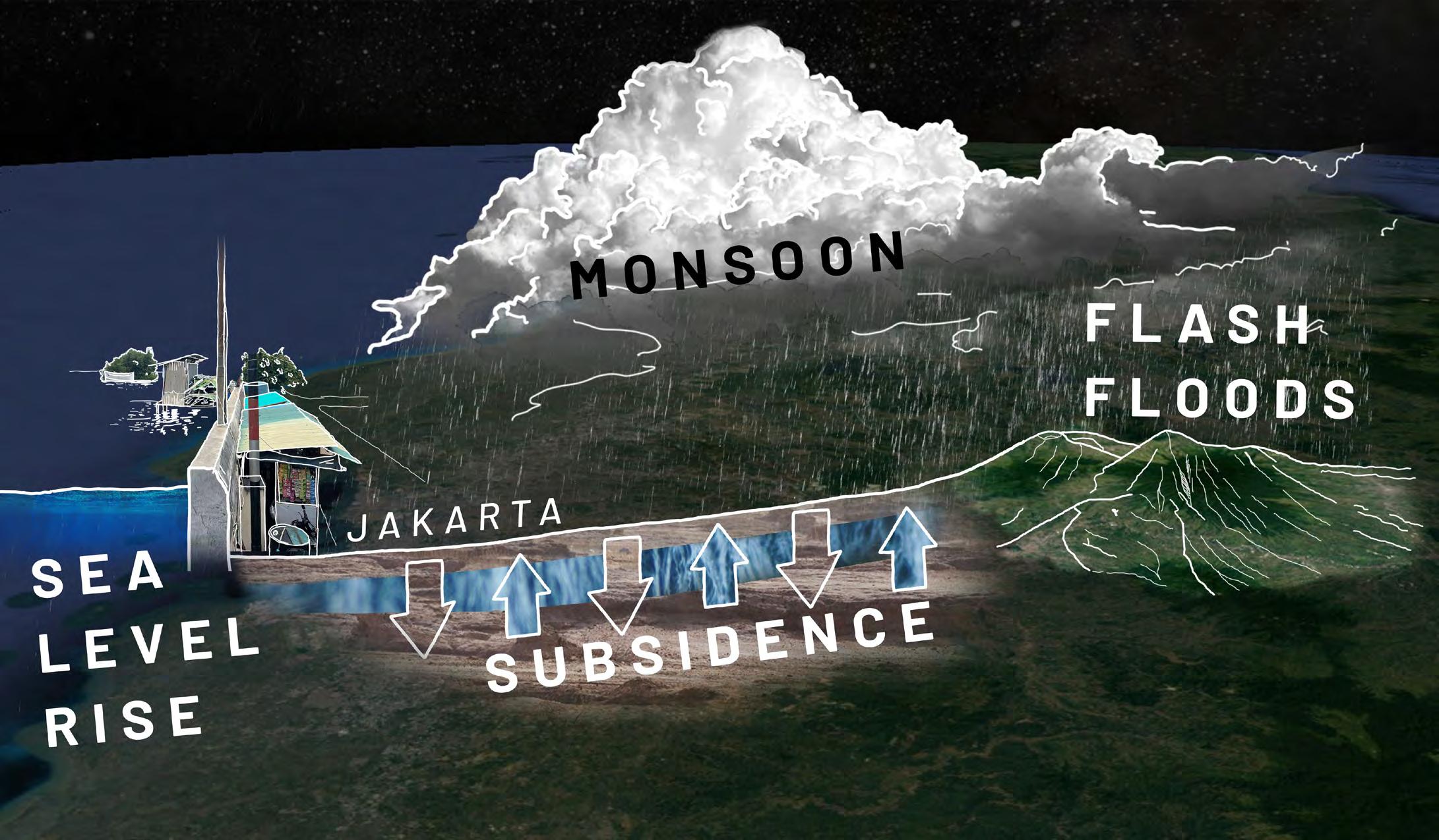
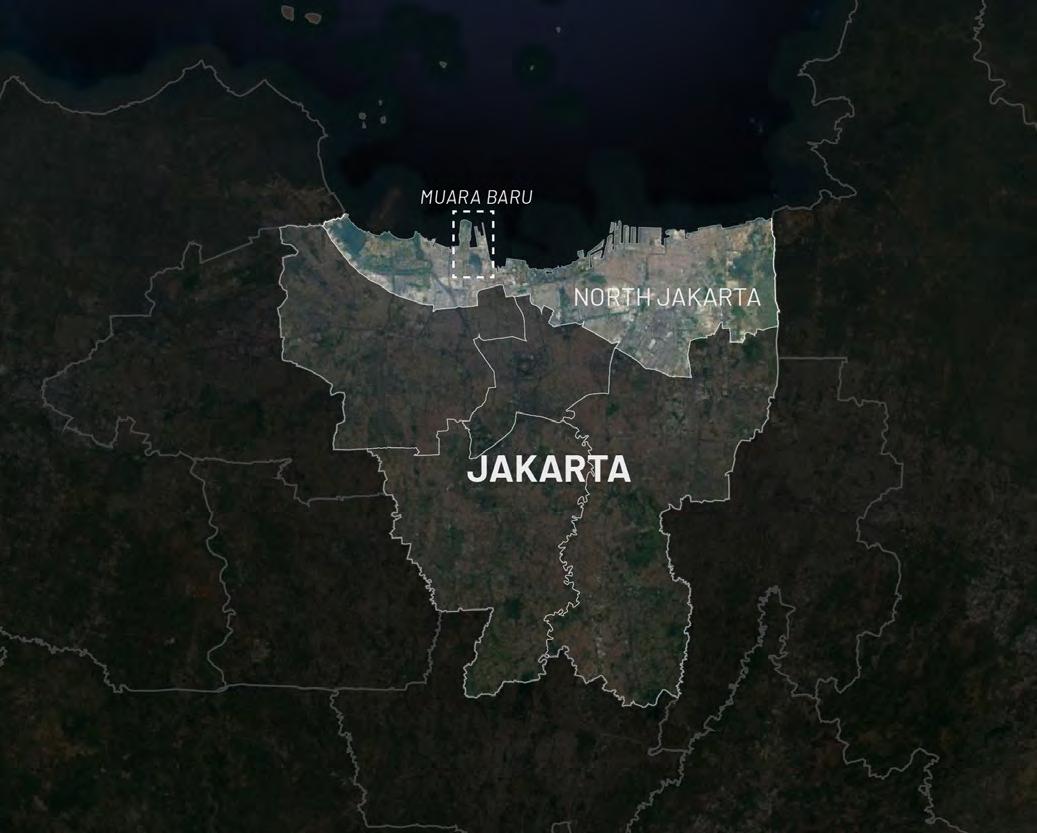
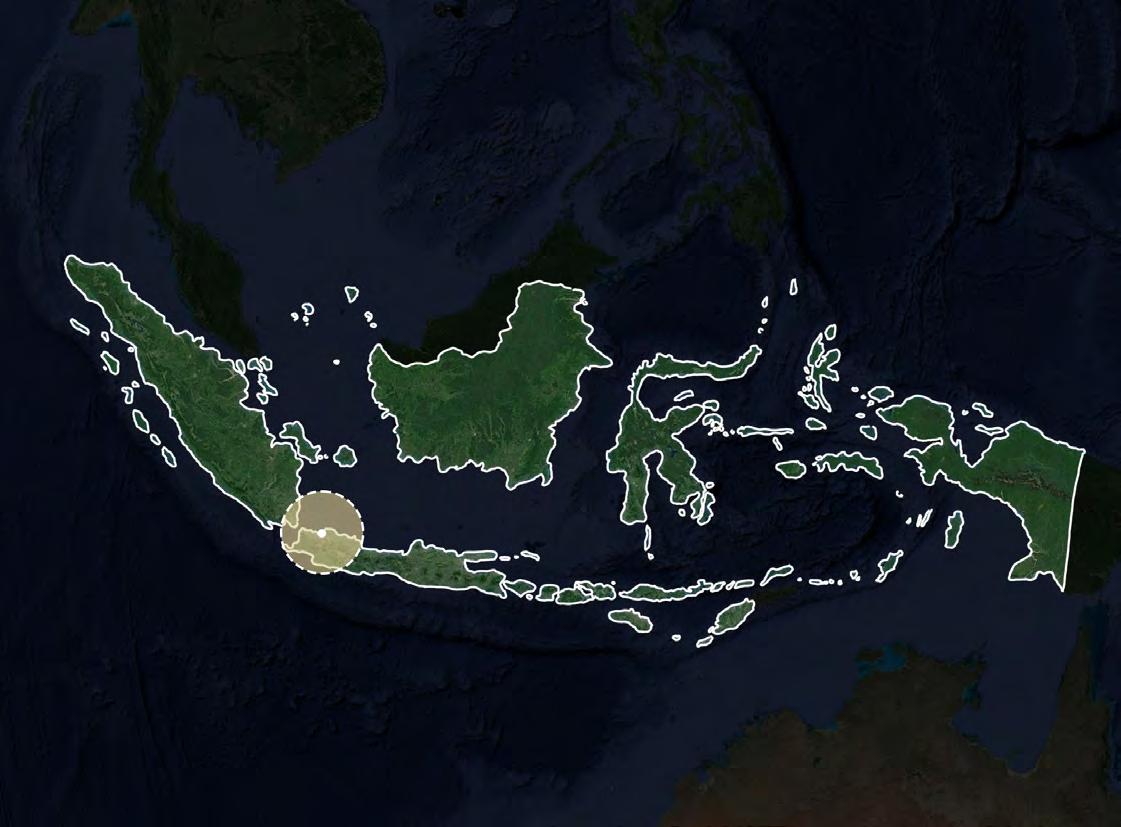
1.MONSOONS: Climate is divided in a dry season (April - October) and a wet season (November - March). Heavy monsoons hit Jakarta in the wet season, filling rivers and flooding parts of the city, forcing people out of their homes.
2. FLASH FLOODS: Jakarta is also affected by floods from the mountains/volcanoes. At the foot of Mount Pangrango rainwater and springs collect in smaller rivers, forming bigger rivers, running through Jakarta. Unfortunately, big parts of the forest surrounding the volcano have been turned into city area. The concrete landscape does not absorb the water as well, creating flash floods running down the volcano.
3. SUBSIDENCE: Only around 1 million households in Jakarta get their water from a piped system. The rest pumps water from the aquifers under the city. With the massive groundwater extraction, as well as lack of green areas to absorb rainwater, the city experiences significant subsidence, up to 27 cm in the north of Jakarta.
4. SEA LEVEL RISE: With climate change comes sea level rise, which is a big threat to Jakarta. 40% of the city is below sea level. A 2-meter-tall sea wall was built in the Jakarta Bay in 2002. In 2007 the wall could not stand the forces of the sea and burst. The flood took 80 lives.
- Wikipedia. (2022). Jakarta. Retrieved from Wikipedia: https://simple.wikipedia.org/wiki/Jakarta
- Monsoon: TWC India Edit Team. (2021, February 21st). Monsoon Floods Inundate Indonesian Capital Jakarta; More Than 1,000 People Forced to Evacuate. Retrieved from The Weather Channel: https://weather.com/en-IN/ india/news/news/2021-02-21-monsoon-floods-inundate-indonesian-capitaljakarta-more-than-1000-people
- Flash floods: Rayda, N. (2021, February 6th). IN FOCUS: The fight against Jakarta’s devastating yearly floods. Retrieved from channelnewsasia: https:// www.channelnewsasia.com/asia/jakarta-flooding-relocation-giant-seawall-anies-baswedan-1883006
- Subsidence: RENALDI, A. (2022, July 29th). Indonesia’s giant capital city is sinking. Can the government’s plan save it? Retrieved from National Geographics: https://www.nationalgeographic.com/environment/article/indonesias-giant-capital-city-is-sinking-can-the-governments-plan-save-it - Satilite picture from google earth in the collage
ALMA KOBER SØRENSEN KADK 5 ARCHITECTURE AND EXTREME ENVIRONMENTS
Jakarta SITE | INDONESIA
Indonesia, Jakarta
Diagram flooding from 4 directions
Jakarta’s five municipalities, North Jakarta, Muara Baru
RESEARCH | INFORMATION GRAPHICS













































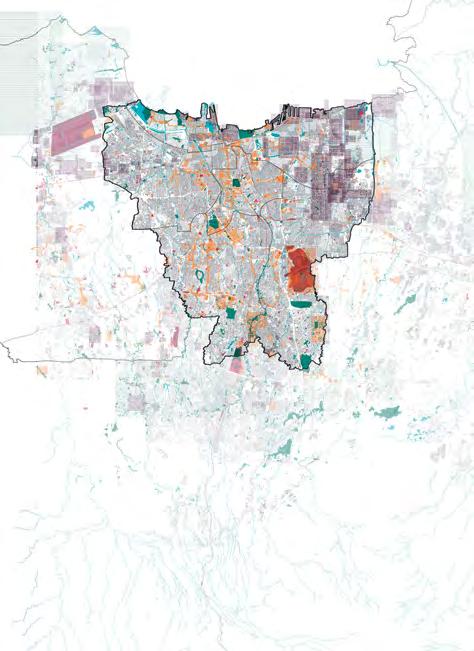



























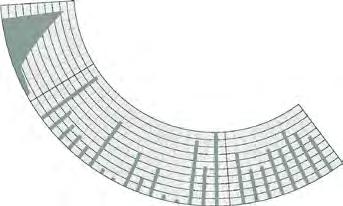






























































Gathering information about Indonesia














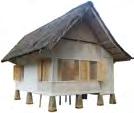


















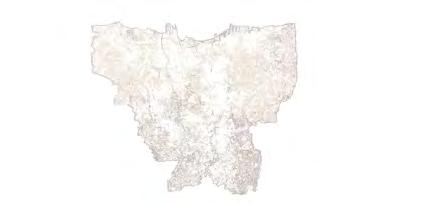























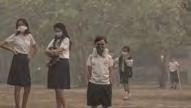
In the beginning of the semester every student was researching one aspect of Indonesia. The topics where randomly distributed. The information was shared amongst the students to create a collective knowledge on the country. This approach allows every student to learn something about the visited country that does not necessarily have anything to do with architecture, allowing for a greater collective knowledge than normally.
I was researching about health. This topic seemed random in the beginning, but it ended up having a big influence on the project. (Infographic on health on the next page)
The 9 examples from the class cover the following topics, from top left to right:





Industry Trade and Tourism, Sea-level Rise, Subsidence and Flooding, History of Politics and Conflicts from 1500 CT. to Present, Transport Infrastructure - National and International, Flora, Transport Infrastructure - Urban Jakarta, Urban Development of Jakarta, Health and Traditional Indonesian Building Typologies.









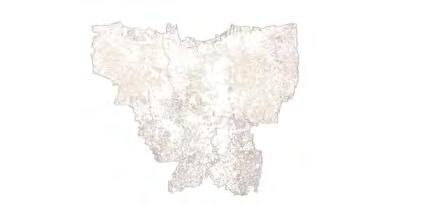



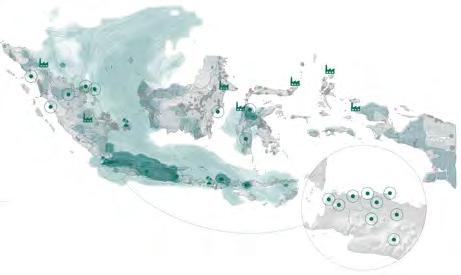

ALMA KOBER SØRENSEN KADK 6 ARCHITECTURE AND EXTREME ENVIRONMENTS
mosquito. Mosquito nets mosquito controlling 0,45 HEALTH DEMOGRAPHY, HISTORY, CULTURE AND POLITICS The Indonesian healthcare system ranked 92nd world. The system however improving. 2014 universal healthcare system (JKN) was introduced, which was planned raise coverage from 56% 100%. Critics JKN badly planned, since struggels cover remote places taking over charity services, that worked well for the impoverished. W T FLOODING RELATED DISEASES: MALARIA DENGUE FEVER CHOLERA Salmonella Typhi. 350-810 per 100,000 cases with mortality rate typhoid fever frequent hand washing with soap. caused Hepatovirus (HAV) infected. Children bigger cities less likely Hepatitis because better sanitation, This occur when being emerged flooding water long time. Children and elderly Dengue Fever mosquito borne viral infection Symptoms: drop blood pressure Vomitting jaundice Hallucinations Mentally confused Cardiovascular Diseases andRespiratoryinfections Neonatal disorders 1990 2000 2010 Diabetes and kidney diseases Disorder 2019 Carbon monooxide, black carbon, ozone volatile organic compaounds released into the atmosphere burning nitrogen Acute watery diarrhoea Loss skin elasticity hospitals available patients with special nedds. Ministry health District Health Office Indonesiasn decentralised health care system 438 days lost per person due to pollution in Indonesia Men Live expectancy birth Women Live expectancy birth Life exceptancy biggest Death and disability risk High fasting plasma glucose High body-mass index Air pollution Kidney dysfunction Infant mortality rate 23 20 3 12 Deaths Information graphic by Daniela Kietz Information graphic by Klara Margareta Elmdahl Information graphic by Wing Ki Lai (KT) Information graphic by Marcus Løkke Information graphic by Clara Tian Yu Lie Information graphic by Alma Kober Sørensen Information graphic by Yuxuan Li (Eugene) Information graphic by Uffe Emil Holm Information graphic by Maja Berglund Kruse Andersen the companies and activities involved process producing goods for sale, especially factory special area EMISSION: the sending out gas, heat, light etc. rettes, margarine, soap, cement and ship build the the capital city located. coffee, spices. agricultural sectors contribution GDP has fallen from 45% only years concidered middle income country. Thai bath ceased maintain fixed relationship the dollar. This developed Japan, South Korea and Thailand. well as impacting child development transport, energy and manufacturing Sub quality tends worsen speed. Rain can however, slightly rain pollutes rivers, lakes harms world. Largely fault are the laws made 1967 provide new framework allowing the growth the coal industry ILLEGAL MINING working class. mineral products have unregulated mining techniques without permits. Underwater mining harms aquatic Banten Serang West Java Karawang INDUSTRY, TRADE AND TOURISM 1.84 Mining sites Industrial parks Population indonesia GDP/Capita 12.97% guideline PM 2.5 WORLDWIDE (2020) (million metric tons) EXPORT (2021) China 48% IIIIIIIIIIIIIIIIIIIIIIIIIIIIIIIIIIIIIIIIIIIIIIII Malaysia COAL INDUSTRY 8.98% SEA-LEVEL RISE, SUBSIDENCE AND FLOODING CLIMATE INDONESIA FLOODING 1996, 2002, 2007 southern mountainrange and been deposited the suntha shelf, the underground of the delta that Jakarta remarkably pourous and rich natural water ssources expressed the POPULATION WATER RESOURCES throughout seasons. Rains falling northwestern slopes Pangrango what supplies Due topographic features like ridges and ravines, rivers Cisidane and Citarum river systems run parallel, but not mix with waters that innervate Jakarta. The destructive interference zone, where the australian plate Highest drainage potential Highest discharge m m m RAINFALL HYDROGEOLOGY Jakartas rain patterns result of location north the sunda arc mountainrange. Humid from the sea blowing over Jakarta enters high pressure zone the area around Bogor south the capital, where vapor released as percipitations. Bogor one most humid regions the world, with 295.9/365 rainy days year. This area the source the mighty Ciliwung River and the water that discharges throughout year the rivers of Jakarta (see Ciliwung Basin). The urbanization this region has reduced absorbtion capability of soil and making the RIVER SEA LEVEL RISE 2100 Projected impact more than million people the coastal region the Jakarta Metropolitan Area, Jakarta was ranked most vulnerable city climate world 2021 the UK business-risk consultancy Verisk Maplecroft understandt interplay between subsidence and sealevel rise, necessary understandt the local hydrogeological properties Jakarta and surroundings. Most of water that attributes to severe Jakarta sunda arc mountainrange south Jakarta. The worst oods happen when the alluvial ood plane the city located inundated from increased river ow during severe rainfall events January and February. Subsidence and sealevel rise increase the already high watertable the north, making even more vulnerable these seasonal ooding events. m m m m m m m SECTION m PRESIDENT SUKARNO OIL PRODUCTION NATIONALIZED down military force 1965 1966 WESTERN PAPUA GUINEA GIVEN OVER INDONESIA president dissolve party whose ideology inconsistent with the country’s official policy Land reforms implemented the PKI AND OTHER LEFT-WING ORGANIZATIONS MADE ILLEGAL INDONESIA Late 13th cent. 1830 Alternatively, peasants had work governmentfrom the colony more than repaid Netherlands Roads, healthcare school system was expanded. from colonial administration generate 1602 1799 1920 1930 1825 Javanese aristocrazy Holland had decided take over entire country. 1945 VOLKSRAAT (People’s Counsil) ESTABLISHED THE INDONESIAN COMMUNIST PARTI (PKI) ESTABLISHED GABUNGAN POLITIC INDONESIA (GABI) coalition nationalistic organizations demanding 1967 1985 OIL PRODUCTION INTERNATIONALIZED Late 1990’s PKB AND PAN ESTABLISHEDSEPARATIST GROUPS ARMED CONFLICT IRIAN JAYA MOSQUE BOMBED UJUNG PANDANG CHRISTIAN ETNIC CONFLICT BORNEO independence. This lead the military and the militias 2004 SEVERAL PEOPLE KILLED MILITARY ACTION IRIAN JAYA NEW NGO LAW Forbids international support NGOs Forbids NGO’s spread ideas about atheism, communism Maxism-Leninism 2.200 ACTIVISTS ARRESTED FOR DEMONSTRATION AGAINST INDONESIAN WAHID PRESIDENT PEOPLED KILLED BOMB ATTACK BY JEMAAH ISLAMIYA (JI) WAHID REMOVED FROM THE PARLEMENT DUE TO CORRUPTION Political disagreement Irian Jaya Nahdlatul (PKI) 2019 president importer tin, and rubber.racy hampering Indonesia’s development due Sukarno proposed calledpresidency with authoritarian which was unhappysupported this reorientation.and replaced with one was living severe poverty export production interHISTORY OF POLITICS AND CONFLICTS FROM 1500 CT. TO PRESENT DEMOGRAPHY, HISTORY, CULTURE AND POLITICS The political history Indonesia spins around shipping and trading, disagreements regarding landownership well the right independence and autonomy. Indonesia, know today, has only existed years. The political conflicts that the country struggling with present times roots more than 1000 years where multiple kingdoms was ruling over the Indonesian archipelago, followed more than 400 years colonization various nations. 194919% 81% 46% Indonesia highly hazards, mainly related earthquakes lacking and the last major infrastructure damage.hazard situation - Disregard seismic---Both earthquakes oftenresult transport infrastructure damage. Less frequent and tsunamis significantdestruction. Hydrological and meteorological disasters impact transportation sector, vehicle damage, traffic disruption, cancelled flights Public budget will from SOE’s and private 2019, estimated USD including transport sector. disparity among regions, inefficient and economy that reduces the 1997-98 Asian pre-1997 levels Expected financing development plan IDR Transport sector world, handling approximate volume (TEU) Sumatra and peninsular Malaysia leads high logistics BOTTLENECKS CONGESTION DOMESTIC INTERNATIONAL Due Indonesia’s sprawling archipelago, maritime shipping provides essential links between different parts the transportation passenger departures: transportation cargo transportation passenger embarking: ferries transport domestic, numbers passengers well 37.5 mln #9 Domestic Domestic Domestic Domestic Domestic transportation cargo transportation 1,500 PORTS INTERNATIONAL & INTER-ISLAND CONNECTIVITY transportation network, Indonesia has limited railway system. There railways operation trips/capita. comparison, Logistics quality OVERLAND INFRASTRUCTURE: JAVA DEFICIT AND UNDERINVESTED INFRASTRUCTURE DAMAGE FROM NATURAL HAZARDS 0.07 0.55 2019 pre-1997 8% 3.5% 0.46 0.06 MOTORIZED VEHICLE PER CAPITA RAILWAY Road quality and extraordinary long ROADS: TRAVEL TIME Jakarta Semarang Semarang Yogyakarta Makassar Ngurah 11,1 Million Passengers 47.8 Million Passengers DEVELOPMENT transport policies crucial boosting Development Goals, Index, World performance trade Indonesia was ranked PERFORMANCE TRANSPORT INFRASTRUCTURE NATIONAL & INTERNATIONAL ENERGY INFRASTRUCTURE INDONESIA The island nation Indonesia, with scattered archipelago, sees an extensive use sea transportation, and the densely populated island Java accommodates large use motorized vehicles. However, infrastructure, logistic performance and public transportation insufficient and underinvested for the vast demand and rapid growing population. Additionally, due to location the nation largly exposed to various natural hazards that result costly damages transport sector infrastructure. the population keeps growing rapidly and climate change projected increase natural hazards, there References appended Orchidaceae Rubiaceae AcanthaceaeApocynaceaeLauraceae Parasite Hydrophyte Vines Fern Geophyte Graminoid Indramayu Pulau Rambut Pula Baluran Grajagan AngkeMuara Epiphyte Alang Alang Grass (Imperata Cylindrica)Bamboo MangroveHold access water from flooding areas behind them slowly restoring flooded areasCoconut wood for houseposts and rafters, use lashing construction. Coconut coir can also be used crafts, fuel, organic fertilizer, charcoal briquettes, water filter. FLORA FLORA, FAUNA AND NATURAL RESOURCES Indonesia, southeast Asia country, with tropical climate and comprise with around 18000 islands, nation that contain the world second largest biodiversity. Due distribution the Indonesia Archipelago, Indonesia, this country located between two continents, Asia and Oceania. This explains wide biodiversity Indonesia from east west. There are mainly two biodiversity regions one special region Indonesia: Wallacea, Sundaland and Papua. The wallacea middle zone between two diverse regions while the Sundaland mainly influenced Asia. Amorphophallus Titanum Phalaenopsis amabilis Butea Monosperma Pterospermum JavanicumTransmigration Area--Primary Forest plants Species Species Flora mainly included the west surrounding small island. 155 species Diterocarpus designation seperated Wallacea contains mainly plant species, which around flora this region mainly influenced the envirnoments, included plants, more than are Ideal thatching roof materials: has subterranean creeping stem Easy and gather into stiff bundles, which could the roofthatching thatched professinally andstalled correctly, creates 100% waterproof roof Provide flexible and complementvilinear roofs Thermal insulation Ability breathe, release warm whilst keeping the cool inside erosion control due the fast growth rhizomes Potential silvi-pastoralist systems Culm hollow, relatively strong and stiff and can cut and split with simtool Endure storm and earthquake, Bamboo clums used for framing members, joists rafters, purlin and ridge pole, roof tiling,scaffolding These forests absorb the brunt waves’ impact, significantreducing both the height and speed waves reaching shore. And mature mangroves can store nearly 1,000 tons carbon Coconut Shell ash can used for the partialplacement cement. Furthermore, the use this value added material may reduce consumption cement turn lessen the impact CO2 emission. 40% X TRANSPORT INFRASTRUCTURE ROAD (KM) AND RESPONSIBILITY highways networks were general planned urban infrastructure which are often not integrated have become segregated. TANJUNG PRIOK PORT The busiest port Indonesia. handles flow goods into and out Indonesia. The SUNDA KELAPA PORT this harbor have raised above ground 11% 88.89% Koja Kampung Tugu transport infrastructure. The picture CONSEQUENCE OF The consequence subsidence Jakarta which experiencing extreme elevate bridges extra layer The government procedure and estimated price km downtown Jakarta. The government banned MASS CONGESTION Due lack public transportation RAIL NETWORK travel and Jakarta. Traveling MOTORCYCLE 2002 people owning middle-class. Motorcyles way transport became registered Jakarta was motorcycles inhabitant. MOTORCYCLE TAXI One main companies organisation Rame-Rame explained last part trip, between CAR regulate amount cars odd-even days. However BUS BRT Bus Rapid Transit system increasing rise private vehicle has been implemented TRAIN price which equals TRANSPORT INFRASTRUCTUREURBAN JAKARTA ENERGY AND INFRASTRUCTURE INDONESIA AVARAGE CONGESTION LEVEL 2021TRAVEL PATTERN 2021 LIVE CONGESTION COMPARED PREVIOUS YEARS 2022 URBAN DEVELOPMENT OF JAKARTA spaces that shapes the urban fabric the city. References appended JAKARTA URBANISATION TIMELINE JAKARTA LANDUSE MAP Water body Military began during the Dutch colonization Java. With Jakarta as the center the colonial system, residential areas suburban Jakarta were developed 1808 as attempt widen the city. During this period, main infrastructureswhichinclude development canals,road, railway, and tramway were developed. The rst railway lines were completed 1880 north coast ports Jakarta, Semarang, Surabaya. Within the next years, the railway lines became linked network throughout the whole of Java. the Netherland Indies period, between 1877 and 1886, new port, Tanjung Priok was built and included important facilities such dry dock, warehouse, and waterfront industries. economic depression established foreign investors such automobiles, rubber tires, shoes, margarine, biscuits, and batteries took place Jakarta. This shifted the urban center city into an industrial development which was turning point for urban development Jakarta. Rapid urbanisation occurred during this period and had huge impact modern Jakarta. big metropolitan area, activation fringe area, Metropolitan Area (Jakarta, Bogor, Tangerang, Depok, and Bekasi) was recognized and became the center national economic activity with 60% centered Jakarta. The metropolitan area also turned into new central business district with nancial service center, high rise buildingsand hubforworkersandentrepreneurs. wasalsoduringthis period where the industrial area was moved east and residential the west. This was akso the period where Kampung Improvement Project (KIP) was started, which benefited 1.2 million residents. mega urbanisation stage postnancial crisis the period 2000-2010. Former rural areas began changing into urban areas and the MegaUrban Regions Jakarta and Bandung began to merge. The employment structure the city was also converted from manufacturing sector nancial and service sector, where manufacture was moved the outskirts. TRADITIONAL INDONESIAN BUILDING TYPOLOGIES BUILDING TRADITIONS AND TECHNOLOGIES TOBA BATAK PEKON HUJUNG TONGKONAN FOUNDATION MATERIALS ORNAMENT MATERIALS COSMOLOGY VENTILATION HONAI Saddle/canoe roof shape Kolong (“Leg“ part the house) Great upswept roof Rattan Bamboo Upper World The advantages arranging primary space Kolong Tension roof structure Comparison with Toba Batak Only one opening Represents major land and water transport methods. ancient times, way protect from wild animals forest. the tropical area, prevent moisture termites. From secondary spaceTo primary space Tradtionally, the roof constructed with layered bamboo. reflect Toraja people’s hope sky and reside with permanence.- Stiff bundels-- Cover joints- Toughest thatch - Last 100 years - By-products agircultural crops - There 9 specieshouse panels - Tall, straight, hard--Sugar palm leaves Attic and Ceiling---More convenient water from well. Allows larger usable interior space. With growth population,it gradually become primary space, like living Tongkonan higher spiritual status than Toba Batak. mainly place earthquake. Because the relatively high altitude, the temperature Papua night. Therefore, climatic strategy here different than elsewhere. used for roof. Then the bamboos are arranged into bed. legs are the outside. This house occupied people. Rice storage humans, nature, and their communication with god. Rice fields can heavily affected rainfall, which Horizontally, they the kitchen which produces dirty the front part, and the bedroom which The high roof creates large space under the rooftop. With the gradually rising ceiling, heat can WEST JAVA CENTRAL AND EAST JAVA With broad land covering and hundreds ethnic groups, traditional buildings diverse different places Indonesia. DIFFERENCE From the comparison traditional building Being influenced the frequent changes rulers, hardly delicate carvings which represent part - Bamboo can also ridge pole.- Full silica (blunts tools quickly)Masonry - Secondary buildingtools quickly) - Durability increased
INDONESIA
HEALTH DEMOGRAPHY, HISTORY, CULTURE AND POLITICS
RESEARCH | INFORMATION GRAPHICS
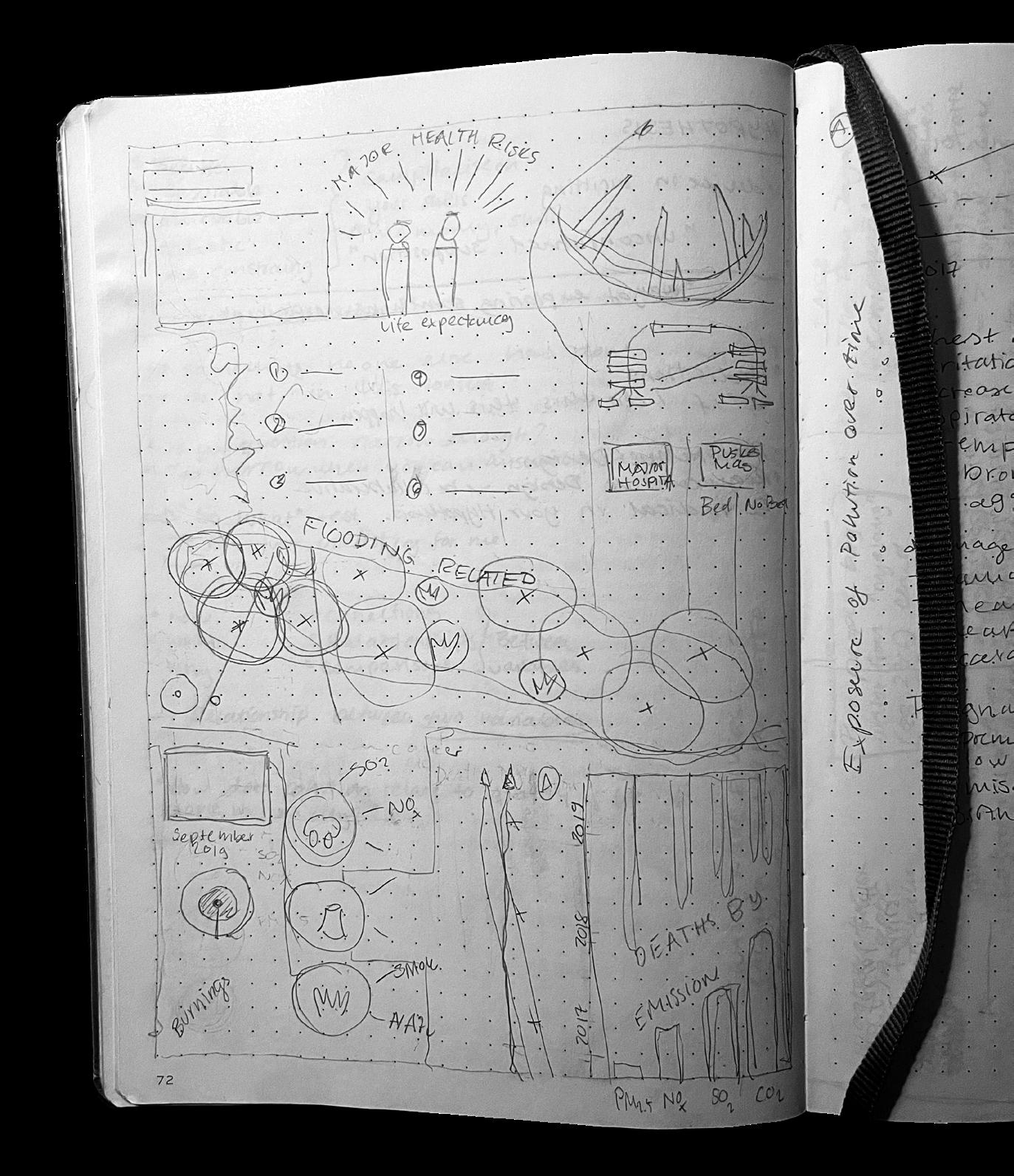
A demographic shift has happened in the Indonesian population; the working class is increasing in relation to the rest. The life expectancy has been rising with 8 years from 1990 to 2012. Indonesia has seen a big drop in communicable diseases (infectious diseases) over the last 30 years. Non-communicable diseases (non infectious diseases, often life style related) however remain high, being some of the biggest killers in Indonesia. The Indonesian healthcare system is ranked 92nd in the world. The system is however improving. In 2014 a universal healthcare system (JKN) was introduced, which was planned to raise the coverage from 56% to 100%. Critics say the JKN is badly planned, since it struggels to cover remote places and it is taking over charity services, that worked well for the impoverished.
Infographic on Health
TYPHOID FEVER
DNDONESIA ENMA R K 3 0 2 % 187%
FLOODING RELATED DISEASES:
CHOLERA
2215 Deaths by Ischemic heart disease
Percentage of population who smoke everyday 2012
Cholera is an acute infectious diarrheal disease caused by the bacterium Vibrio cholerae In Indonesia there is an incidence rate of 0,45 per 1000 and an estimated annual number of cases of 2298 The fatality rate in indonesia is at 1% Clean water and effective sanitation lowers the risk of cholera.
MALARIA
Malaria is a lifethreatening infectious disease caused by Plasmodium parasites, which are transmitted by the bite of the female Anopheles mosquito. In 2019 250.628 cases of malaria have been recorded in Indonesia.
438 days lost per person due to pollution in Indonesia Men Live expectancy at birth Indonesia: 65.5 Denmark: 79.5
Mosquito nets and other mosquito controlling measures as well as draining standing water can help prevent Malaria.
DENGUE FEVER
HEPATITIS A
in Jakarta, Bandung and Burnings of waste as well as burn farming practices are a big health risk contributed smoke Smoke from burning peatland contains up to 90 different gasses, some of which are formaldehyde, acrolein, benzene, carbon CO O3 VOC Symptoms fever tiredness vomitting headaches severe cases: yellow skin seizures coma
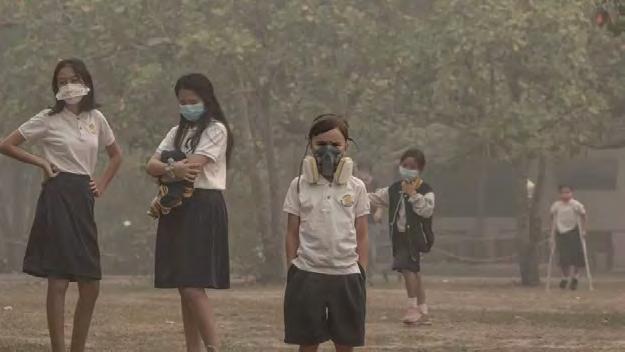
Major international hospitals Hospitals
of Carbon monooxide, black carbon, ozone and volatile organic compaounds are released into the atmosphere by burning coal and fossil fuels.

between 10 and 14 nitrogen
1234 5 6789 10
Dengue Fever is a mosquito borne viral infection caused by Dengue virus One gets infected by the bite of Aedes Aegypti mosquito Dengue fever is the leading cause of severe illness/death in some Asian countries. A preventative measure is insect repellent and wearing clothes that cover the skin Concentration of coal power plants
INDONESIAN HEALTHCARE SYSTEM
Women Live expectancy at birth Indonesia: 69.7 Denmark: 83.3 Life exceptancy & biggest Death and disability risk
HYPOTHERMIA
have been Symptoms prolonged fever fatigue headaches nauseua abdominal pain constipation diarrhea Symptoms Acute watery diarrhoea vomitting dehydration Rapid heart rate Loss of skin elasticity Low blood pressure Thirst HOSPITALS
A because of better sanitation, however there are more outbreaks in the bigger cities. Central Governmental and national Parlament Ministry of health Provincial Government and Parlament District Government and Parlament Provincial Health Office District Health Office Provincial Hospitals District Hospitals Private Hospitals Private Clinics/Practices Indonesiasn decentralised health care system
References appended
23 20 3 4 3
in bigger cities are less likely to get PUSKESMAS The big hospitals in the cities are clean and have modern equiptment The staff often speaks english and there are short waiting times Specialists are available for patients with special nedds.
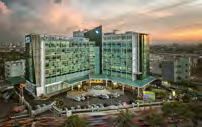

is caused by the rapid drop of body heat This can occur when being emerged in flooding water for a long time. Children and elderly are more at risk. Preventative measures are getting warm and dry clothes. 100km radius from power plants
Malnutrition Dietary risks High fasting plasma glucose Tobacco High body-mass index High blood pressure Air pollution High LDL Kidney dysfunction Occupational risks Child survival Deaths per 1000 live births Under five mortality rate Infant mortality rate Neonatal mortality rate
(HAV) Cancer Diabetes and kidney diseases Mental Disorder 2019
345 Deaths by lung cancer 226 Deaths by COPD 4272 Deaths by strokes There are 9700 puskesmas around Indonesia, which are clinics that work on a subdistrict level. You distingue between puskesmas with beds for urgent treatment and puskesmas without beds for non urgent treatment. The latter is often under pressure sending ill people home. First sketch of the setup of my Info Graphic on Health Information Graphic on Health by Alma Kober Sørensen
12
by Cardiovascular Diseases Respiratory infections and TB Neonatal disorders 1990 2000 2010
ALMA KOBER SØRENSEN KADK 7 ARCHITECTURE AND EXTREME ENVIRONMENTS
Alma Kober Sørensen
POWER P L STNA
An effective measure to reduce the incidences of typhoid fever is frequent hand washing with soap. Effective hygine and sanitation is primary factor in keeping the incidences of typhoid fever down as well as getting the typhoid vaccine. Hepatitis A is a highly contagious liver infection caused
Hepatovirus A
Around 45-60%
children
years
Makassa
infected. Children
Hepatitis
Hypothermia
Typhoid fever is a bacterial infection caused by Salmonella Typhi. In Indonesia there is an estimate of 350-810 per 100,000 cases with mortality rate between 0,6-5%. Symptoms: high fever drop in blood pressure Headache Muscle and bone pain Nausea Vomitting Pain behind the eyes Swollen glands Rash Symptoms: fever malaise loss of appetite diarrhea nausea abdominal discomfort dark coloured urin as jaundice Symptoms: Shivering Low blood pressure Paradoxical undressing Lack of reflexes Cold inflammed skin Fixed dilated pupils Hallucinations Mentally confused Slurred speech
RESEARCH | WICKED PROBLEMS
Groundwork for Hypothesis
To find a relevant and well research hypothesis, the root cause analysis can be used.

Many students of the class experienced being overwhelmed with information. With all the information gathered during the production of the information graphics, finding one specific problem to work with was overwhelming.
The Root cause Analysis was introduced to us by teaching assistant Otis Sloan Wood. By making a scheme starting with a wicked problem you work your way down to a root cause. Root causes are much more approachable and are grounded on a smaller level.
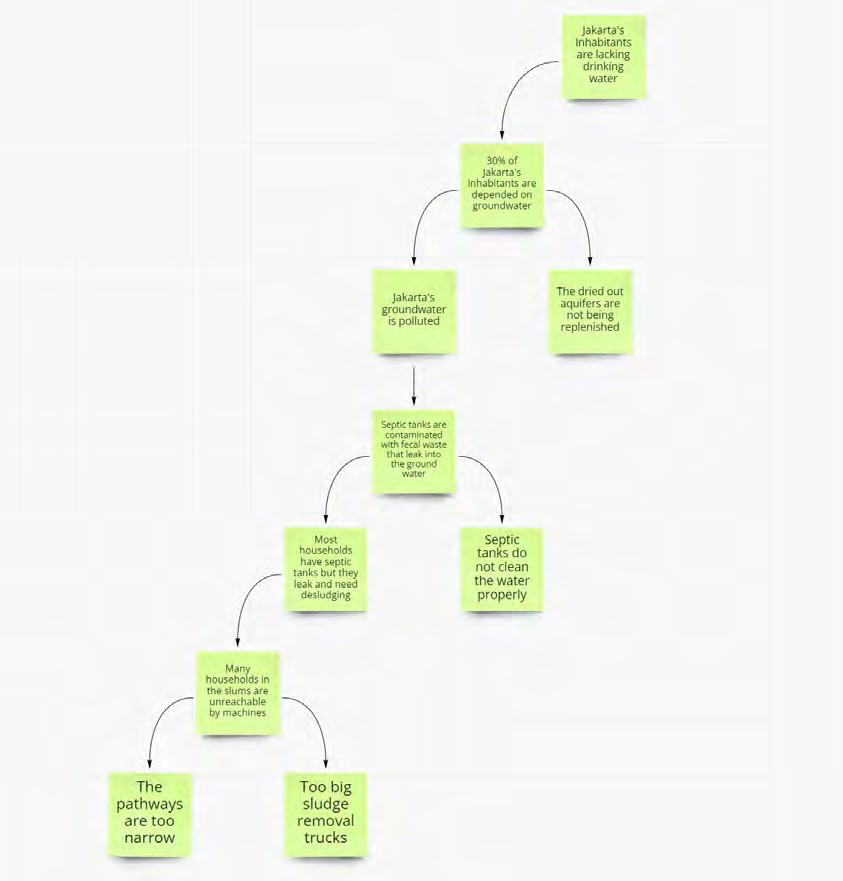
I started with the wicked problem about Jakarta lacking clean drinking water. Firstly, this led me to root causes dealing with sorting trash before they end up polluting the rivers. After redoing the analysis, I eventually I ended with a root cause that I was fascinated by; the sewage system in Jakarta is not working properly, which causes the inhabitants to become ill. And with this the first version of the hypothesis was created:
Jakarta’s inhabitants are lacking clean drinking water
80% of Jakarta’s water is taken from Jatiluhur Dam on the Citarum River which is highly polluted
It is difficult to clean the river
Plastic is hard to sort out because it is mixed with other waste
Inhabitants do not sort their trash at home
Research problem:
In 2020 Jakarta’s households created 8.3 tons of waste daily of which 50,3% was nonoragnic. The waste is either burned or dumped into the rivers.
Research question:
How does household waste relate to clean water access in Jakarta?
Hypothesis:
Sorting and reusing household waste could alleviate the polluted rivers in Jakarta and contribute to cleaner water for the population.
Preventing contaminated water to leak into the groundwater could prevent inhabitants of Jakarta from becoming ill.
Jakarta’s inhabitants are lacking clean drinking water
Jakarta’s groundwater is polluted
Septic tanks are contaminated with fecal waste that leak into the ground water
Septic tanks do not clean the water properly
Research problem:
Research question: Hypothesis:
Many households in Jakarta separate human excreta with septic tanks, which are not cleaning the water and leaking contaminated water into the ground water, which 30% of Jakarta’s inhabitants are served by.
How are the human waste disposal practices related to clean water access in Jakarta? Preventing contaminated water to leak into the groundwater could prevent inhabitants of Jakarta from becoming ill.
ALMA KOBER SØRENSEN KADK 8
Root Cause Analysis wicked problem symptom symptom symptom possible root cause root cause possible root cause possible root cause possible root cause possible root cause possible root cause what might be causing this? what might be causing this? what might be causing this?
A slide form a presentation by teaching assistant Otis Sloan Wood
Root cause analysis on a homepage
called Miro
RESEARCH | GEDUNG POMPA
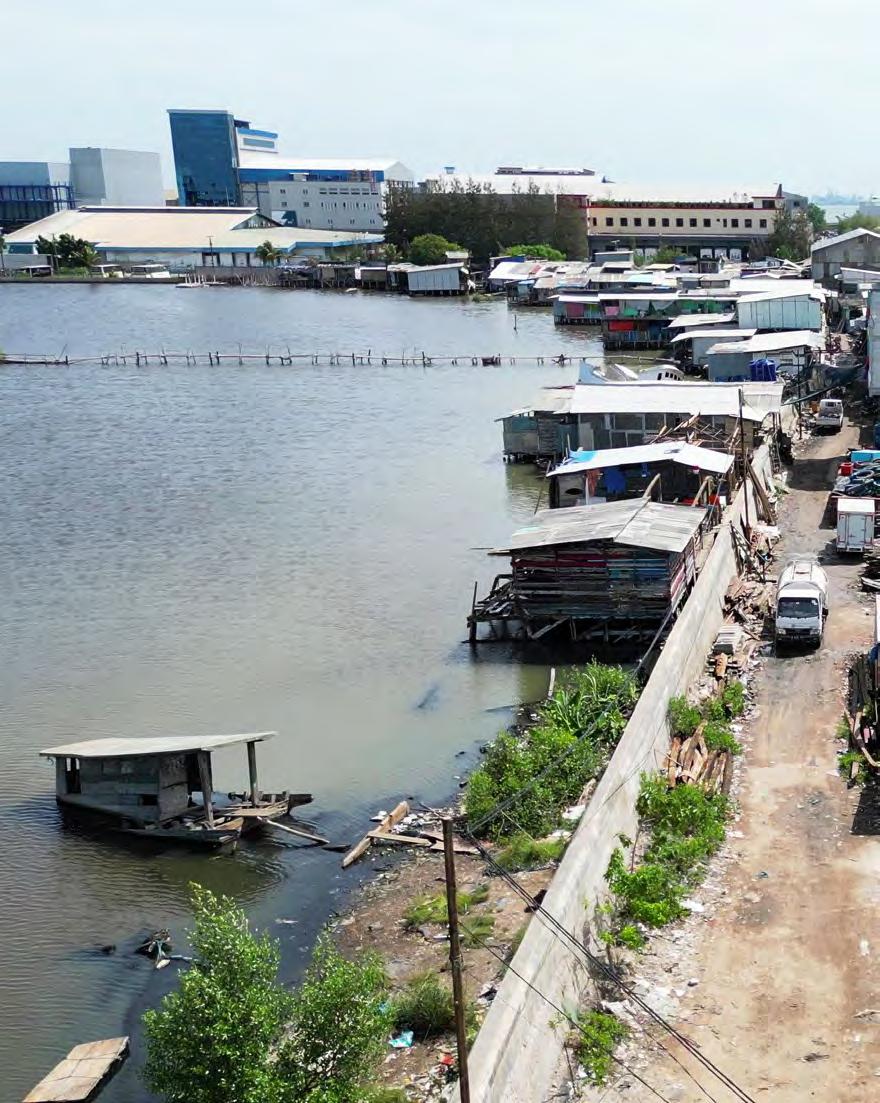
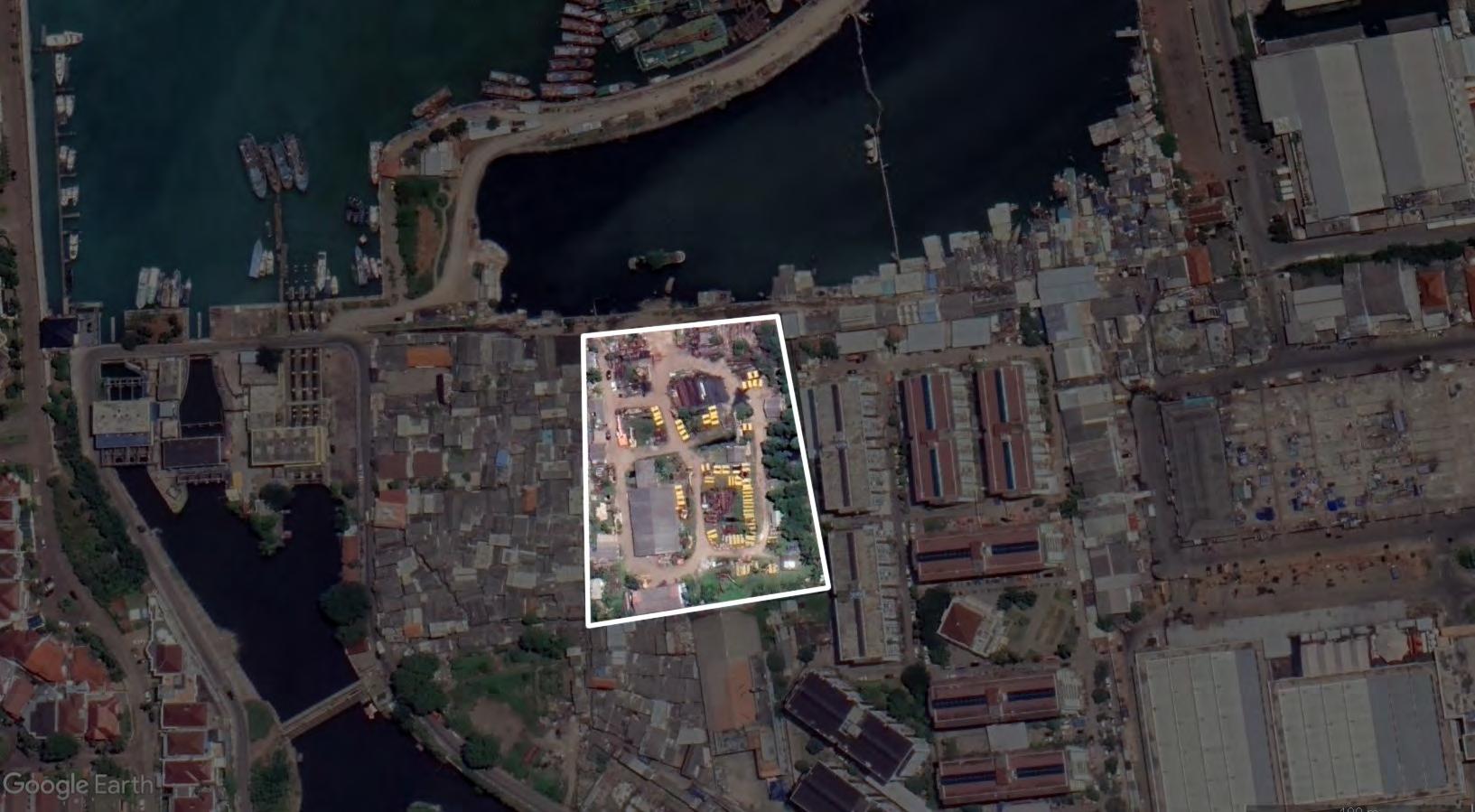
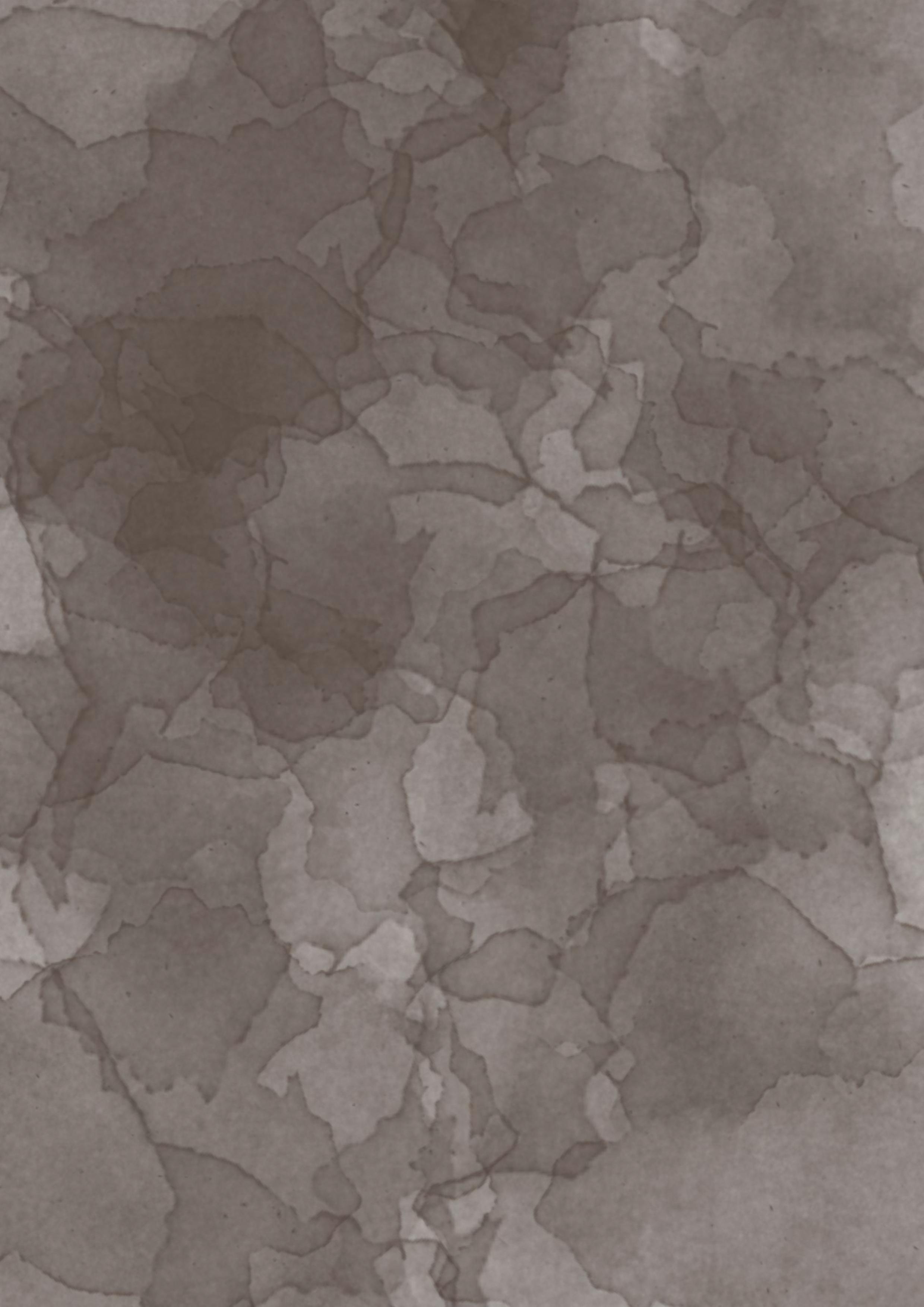




ARCHITECTURE AND EXTREME ENVIRONMENTS
JAKARTA
GEDUNG POMPA
NORTH JAKARTA
The site we worked at in Gedung Pompa
Jakarta’s five municipalities, Gedung Pompa
RESEARCH | LACK OF SEWAGE
Jakarta’s lacking Sewage System
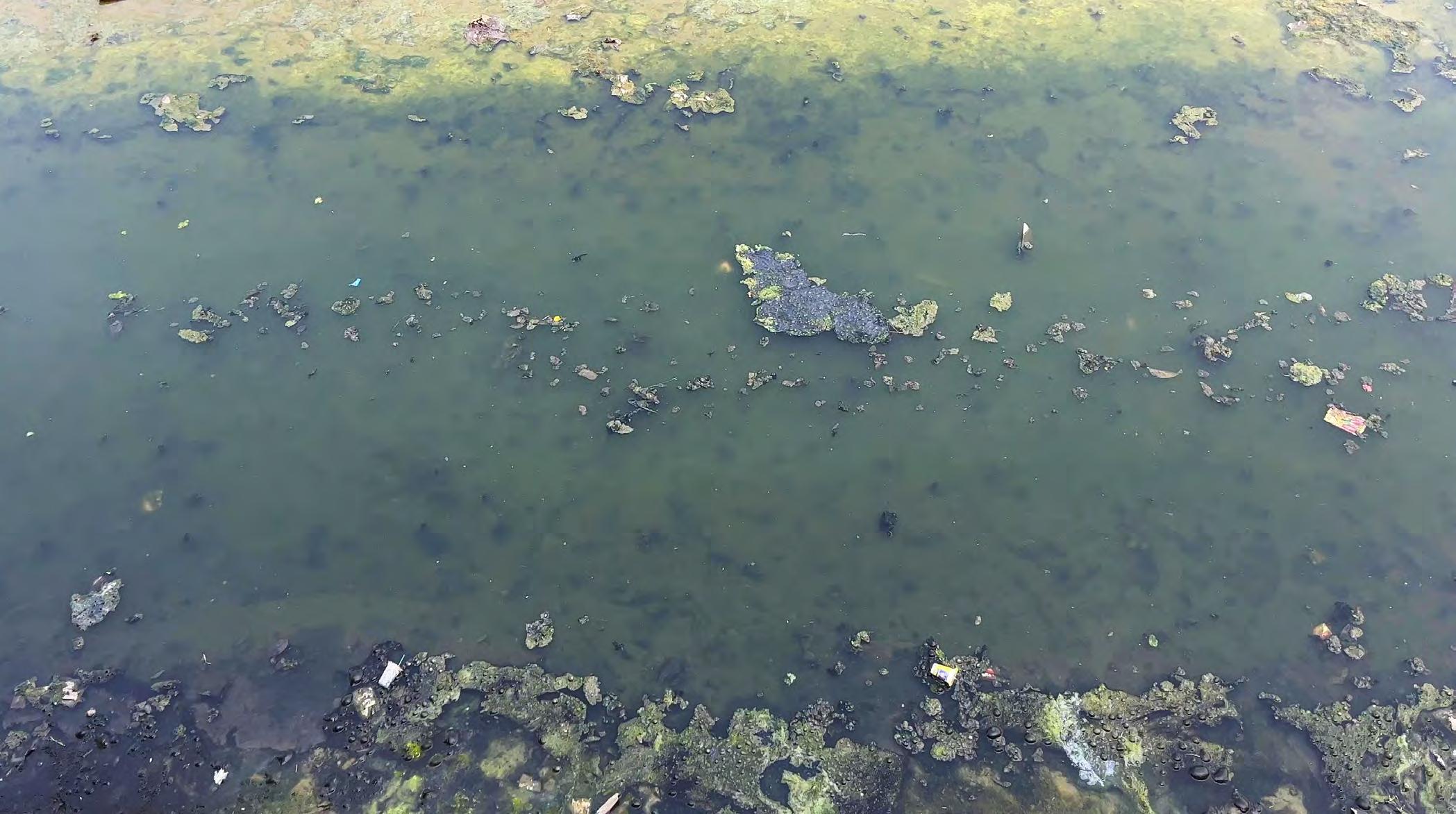
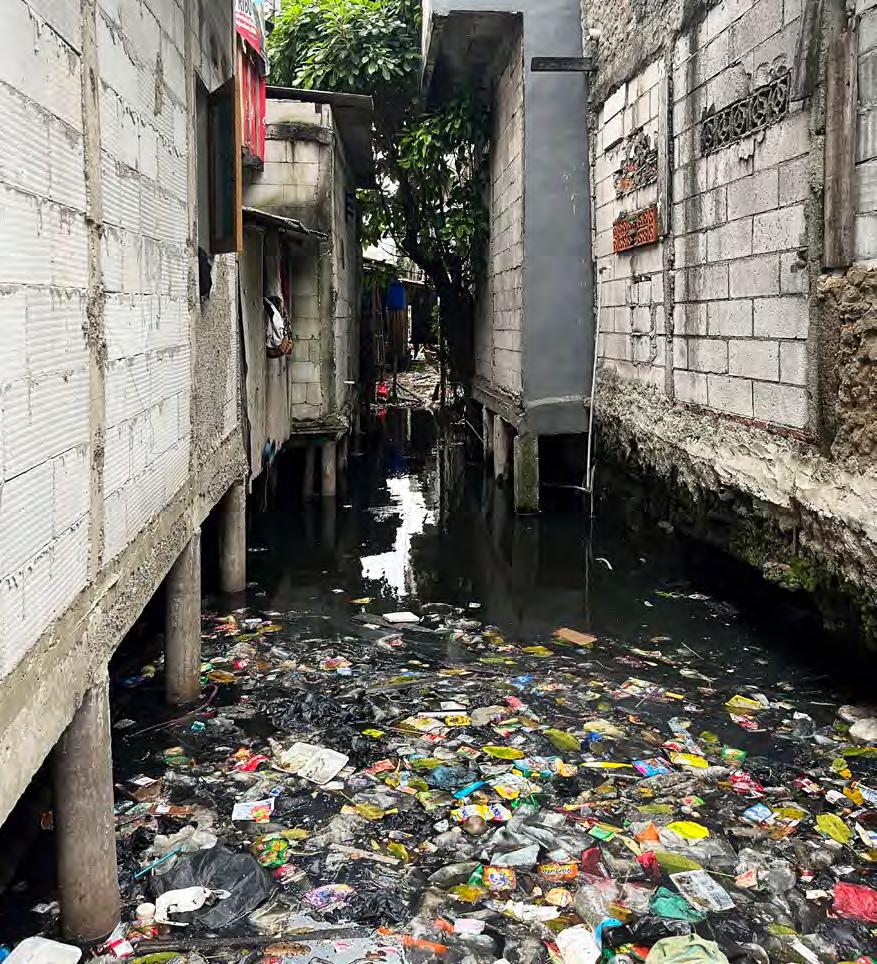
Clean sanitation and access to clean drinking water is not a given in big parts of Indonesia. 94 million citizens of the 14th largest country, live without sanitation access. A top-down sewage system is not prioritized by the Indonesian government and therefore many homemade inadequate solutions can be found around the city. When the annual monsoon season comes, repeated heavy rain floods the city and lets the contaminated water run freely causing a greater risk of the inhabitants of getting fecal-oral transmitted diseases. A study conducted in 2005 investigated the water access, water quality and disposal of human waste in Jatinegara, East Jakarta. Over a period of 3 months 378 randomly selected households where investigated and it was found that 10% used public toilets with direct disposal into rivers, 4% used the riverbank itself and the remaining 86% used private toilets. Of these private toilets 14% lead into rivers and gutters.
PRIVATE TOILETS
Oliver, Stephen. The Christian Science Monitor. 19th. June 2012. https://www. csmonitor.com/World/Making-a-difference/Change-Agent/2012/0619/Threewheeled-carts-better-septic-tanks-help-clean-up-Jakarta.
Study: Vollaard, Albert M, et al. A Survey of the Supply and Bacteriologic Quality of Drinking Water and Sanitation in Jakarta, Indonesia. Jakarta: Southeast Asian J Trop Med Public Health, 2005.



OF WHICH 86% LEAD INTO SEPTIC TANKS
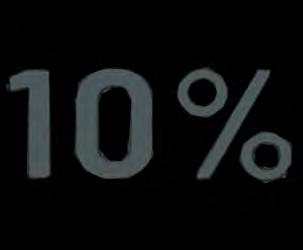
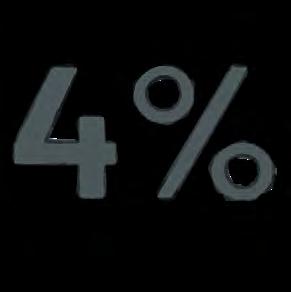

14% LEAD INTO RIVERS AND GUTTERS
RIVERBANKS PUBLIC TOILETS WITH DIRECT DISPOSAL INTO RIVERS
ALMA KOBER SØRENSEN 10 ARCHITECTURE AND EXTREME ENVIRONMENTS
Water from a river in Jakarta
River used for sewage and trash Maura Baru, North Jakarta
RESEARCH | JAMBANS
Latrines leading to sources of Water
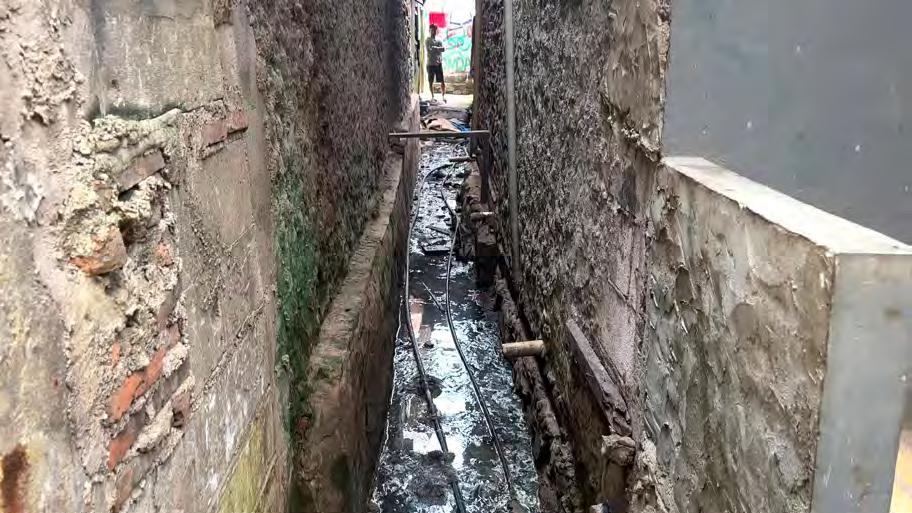
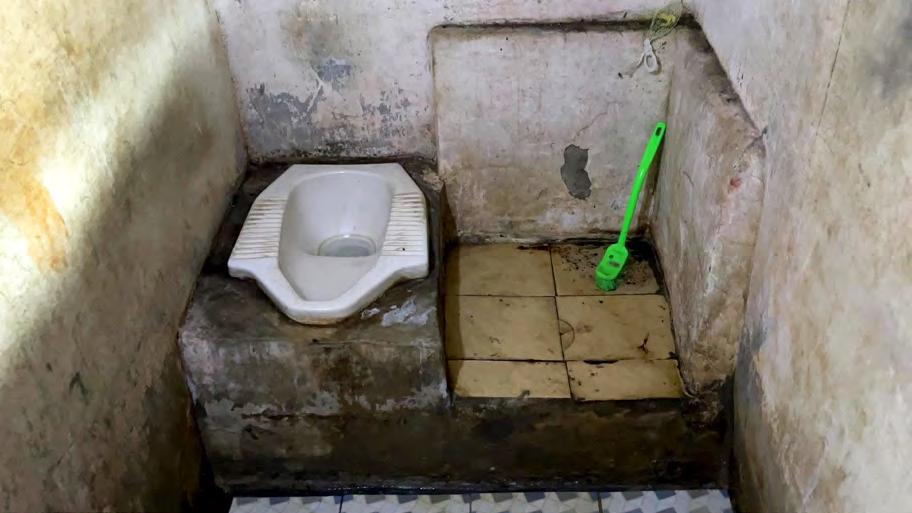

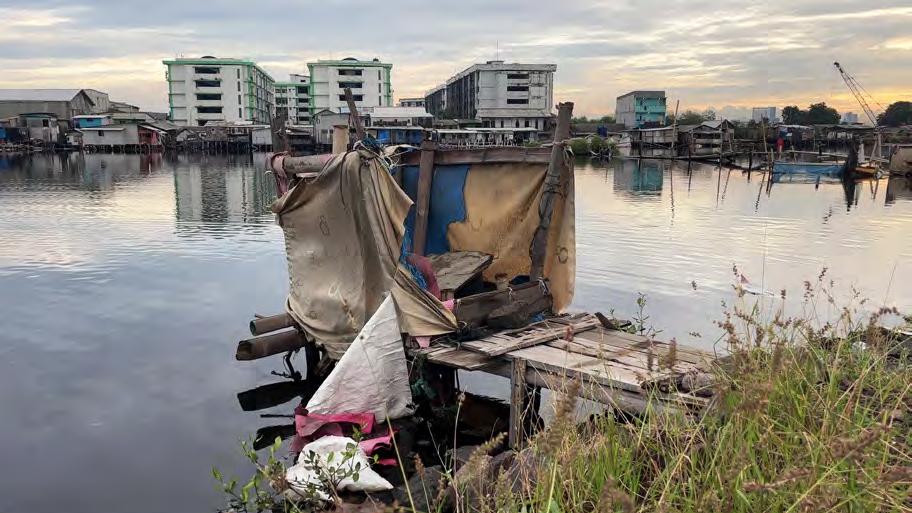
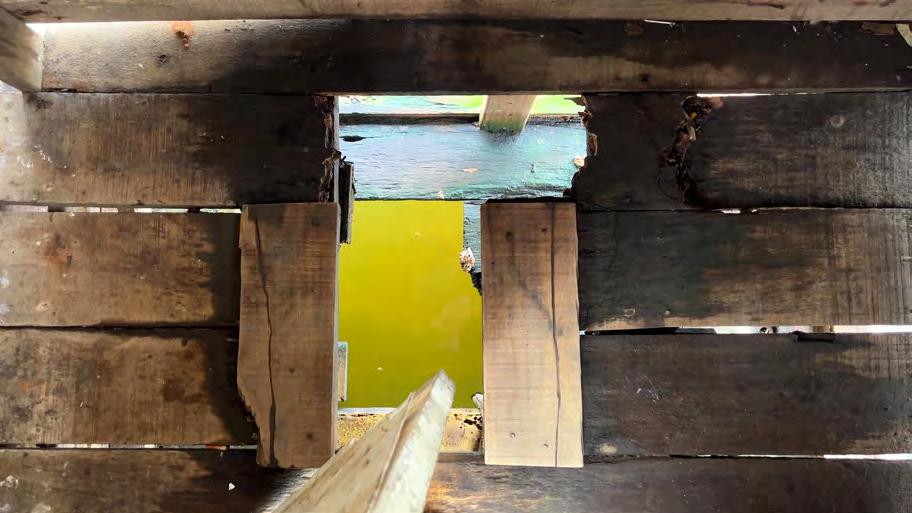

Jamban is the Indonesian word for a latrine. When the locals talk about the Jamban in Gedung Pompa they refer to the public toilet placed on the sea wall (top two pictures). This toilet was built by the locals years ago and can be used by anyone who wishes to do so. The public Jamban in Gedung Pompa is a small hut with two cabins, each having a whole in the floor. You squat down to use them, and everything goes directly into the water. These toilets might work well on an everyday basis, they however pollute the water with pathogens. The local children swim freely around the toilet, and when I asked them about the feces swimming in the water, they say that they simple push it away. A couple of meters to the left of the toilet, a couple of men fish regularly.
The toilet seen in the bottom picture is from a private home on the first floor. When using this toilet, you also bring a bucket of water with you to wash yourself and flush. The sewage runs in pipes between the houses (bottom right picture). Where this ends up is a bit of a mystery.
ALMA KOBER SØRENSEN KADK 11 ARCHITECTURE AND EXTREME ENVIRONMENTS
Next pages source: Agtini, M.D., Soeharno, R., Lesmana, M. et al. The burden of diarrhoea, shigellosis, and cholera in North Jakarta, Indonesia: findings from 24 months surveillance. BMC Infectious Diseases, 2005.
75.9% OF INFANTS HAVE HAD
DIARRHEAL
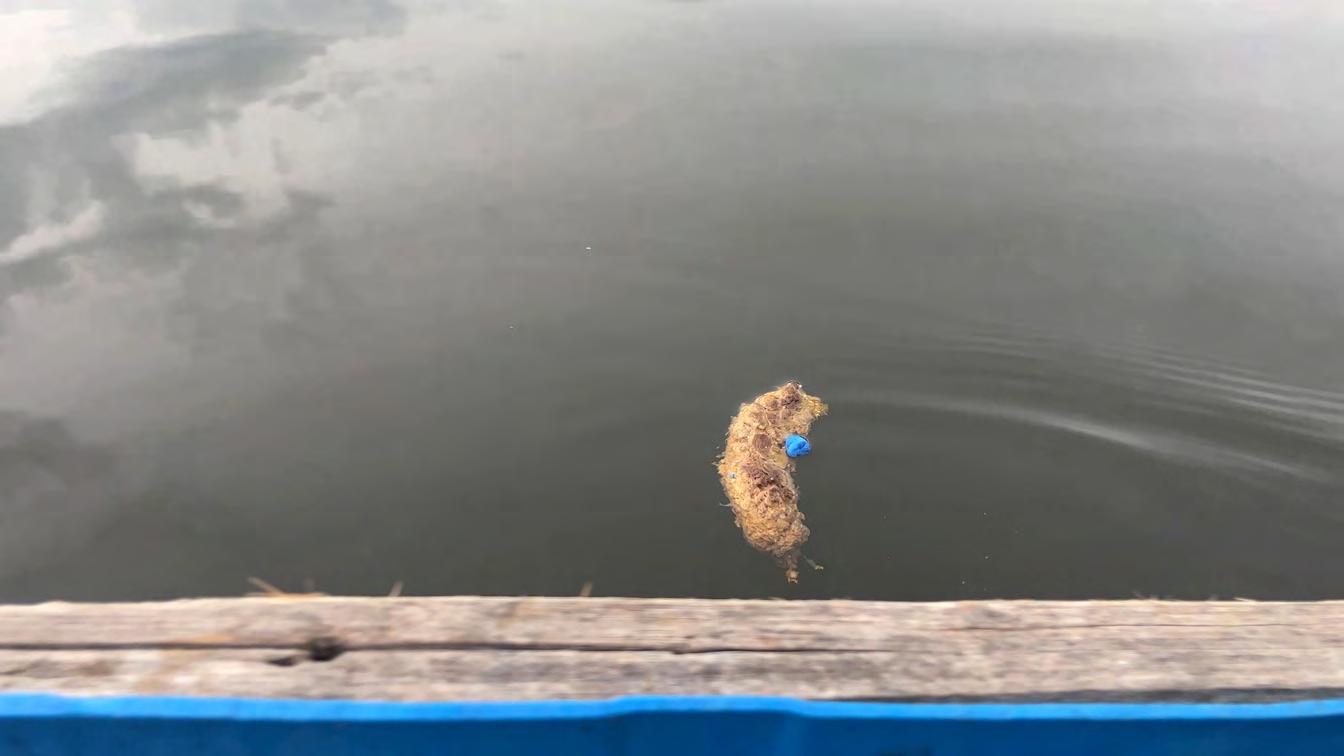
DIARRHEAL DISEASES, WHICH IS THE LEADING CAUSE OF DEATH

75.9% DEATH
AMONG CHILDREN UNDER THE AGE OF 1 YEARS
ALMA KOBER SØRENSEN KADK 12 ARCHITECTURE AND EXTREME ENVIRONMENTS
FIRST IDEAS | MYCILIUM TOILET
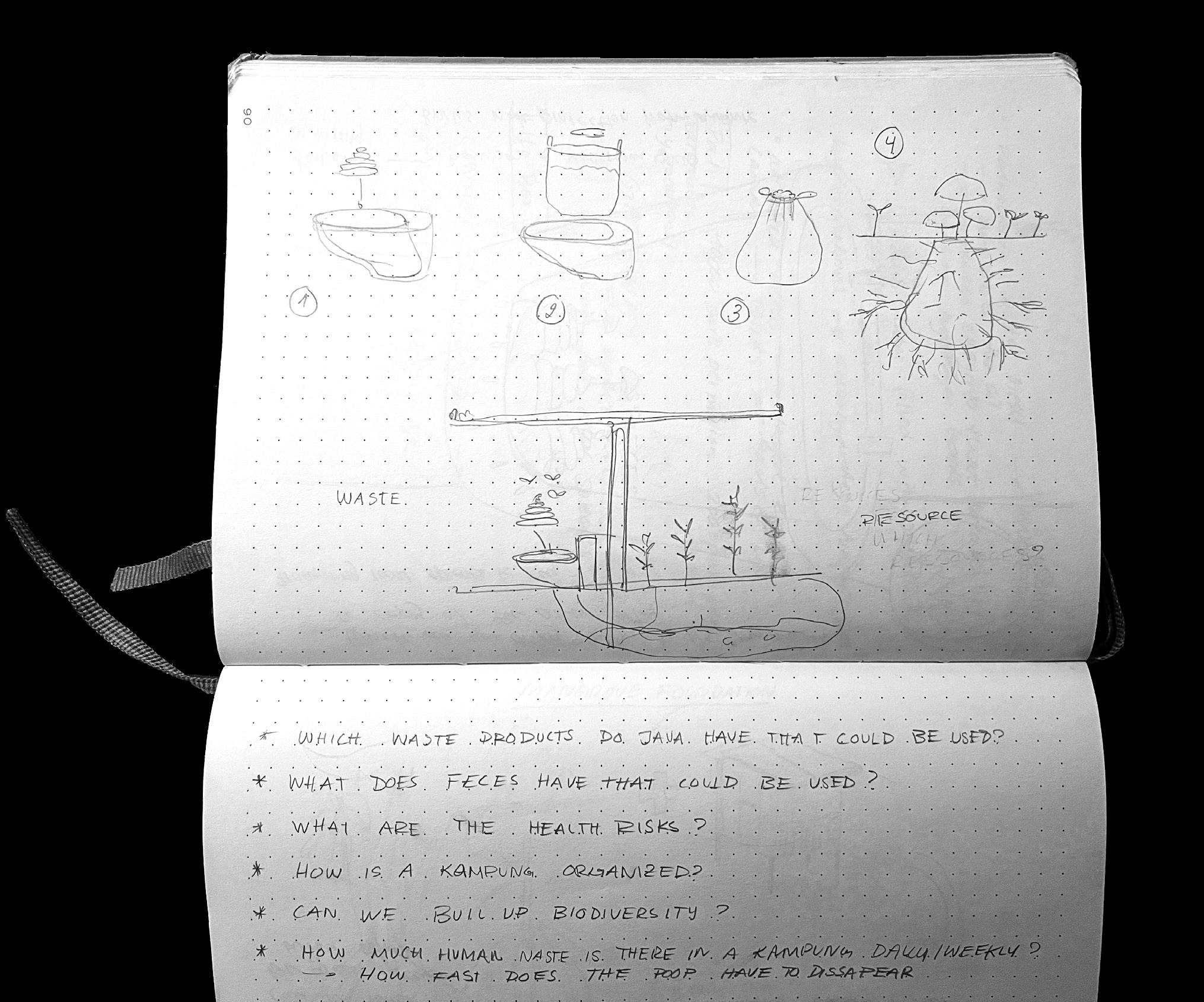
A decomposing Toilet with Mushrooms
The first ideas for the toilet cycled around the ideas of making a mycelium toilet. After watching the TED talk 6 Ways Mushrooms can save the World, I was very inspired by the possibilities of mycelium decomposing different materials. In the TED talk Stamets explains an experiment they made. A pile of petroleum waste was treated with mycelium. Only 6 weeks later the pile was covered in oyster mushrooms. The Mushrooms break down the carbon hydrogen and absorb the oil, being a perfect clean up. Not only did the mushrooms grow on the waste pile, but they also attracted insects, which laid eggs, which attracted birds, which brough seeds, creating a small ecosystem of life on the pile. After going back and forth with the ideas of a mycelium toilet, Benjamin and I decided to contact Jakob Damgaard, who works as a biology teacher at Nørre Gymnasium. Jakob did not believe in the idea of a well working mycelium toilet, since there is not much interesting nutrients for a mushroom in human feces. He did however give us a lot of other ideas and motivation to continue our search for a closed system toilet, amongst others: The Composting Toilet.
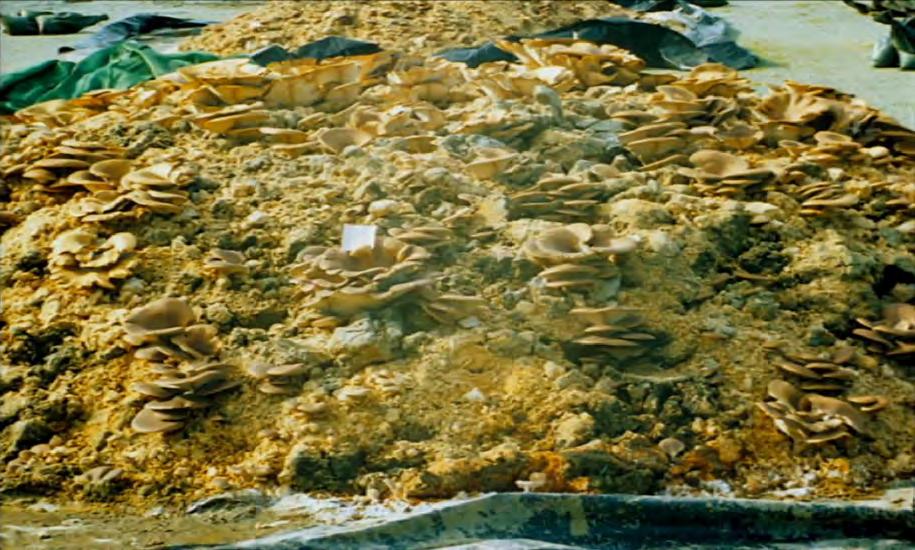
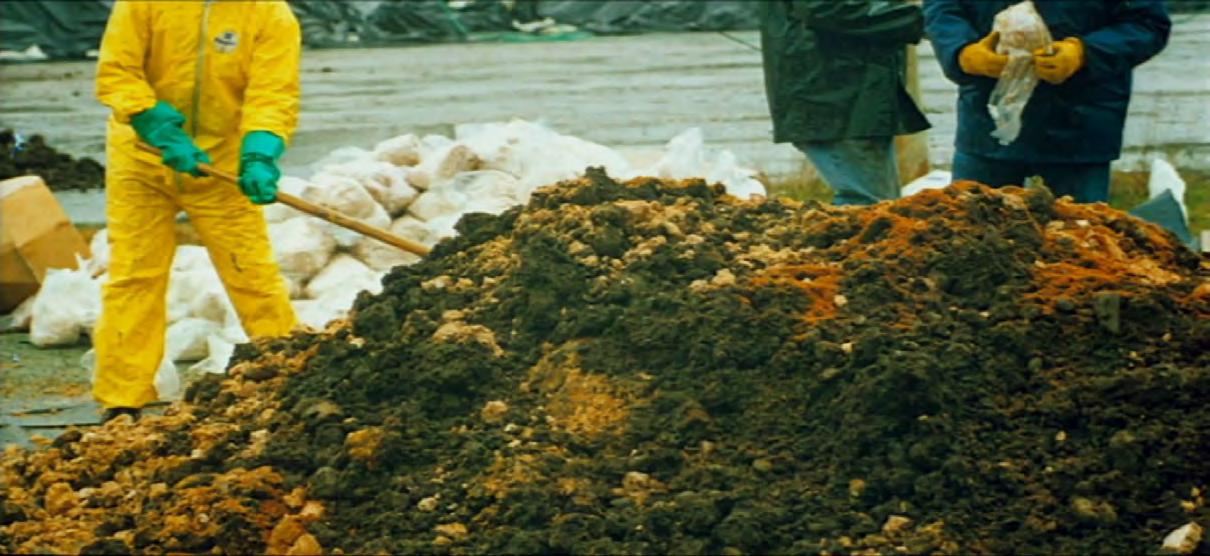
Stamets, P. (2008). 6 ways mushrooms can save the world. Retrieved from TED: https://www.ted.com/talks/paul_stamets_6_ways_mushrooms_can_ save_the_world
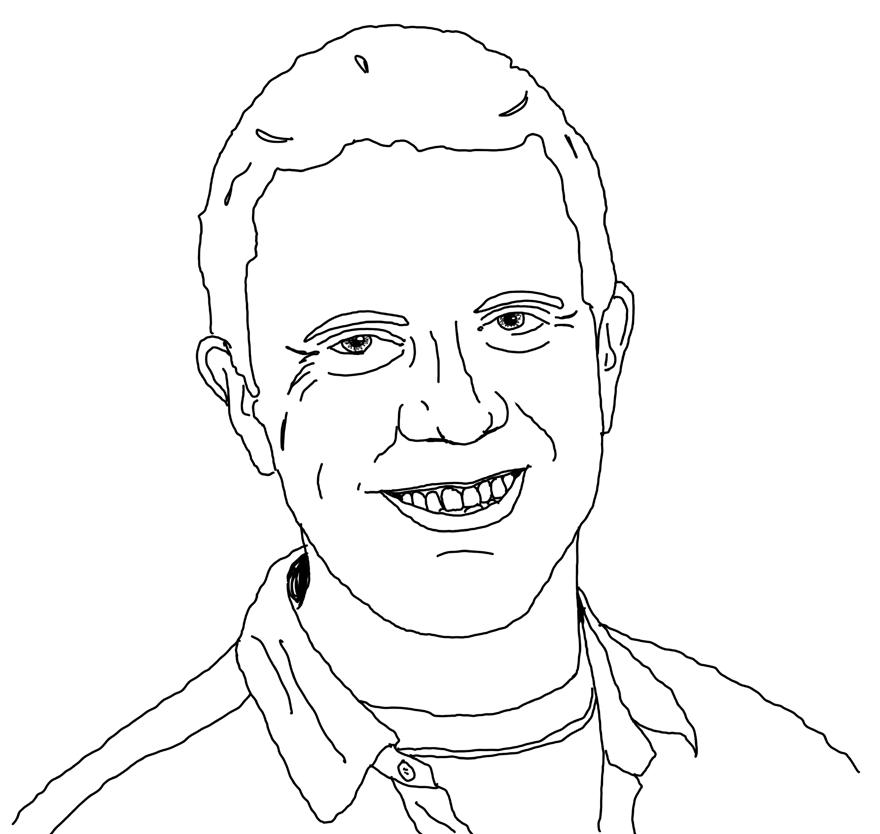
ALMA KOBER SØRENSEN KADK ARCHITECTURE AND EXTREME ENVIRONMENTS
Jakob Damgaard, Biology Teacher
The Patrolium pile with a TED talk with Paul Stamets: 6 Ways Mushrooms can save the World
First sketches of the MyciliumToilet
RESEARCH
|

The problem in Jakarta is that the toilets leak into the groundwater or into sources of water. An improvement to this situation is that the toilet matter is transported out of area where the citizens can get infected with pathogens. This requires a system organized on a governmental level for such a big city. Therefore, an even better solution would be that the toilet matter stays within the city, but the pathogens get eliminated. Or even better, the toilet matter becomes a resource for the locals.
Composting is created by placing organic material into a pile where microbes consume them. Over time the organic matter will turn into soil/hummus. Three factors define compost; firstly, it is made by humans, secondly internal biological heat is created in the process of composting and thirdly the organisms need oxygen.
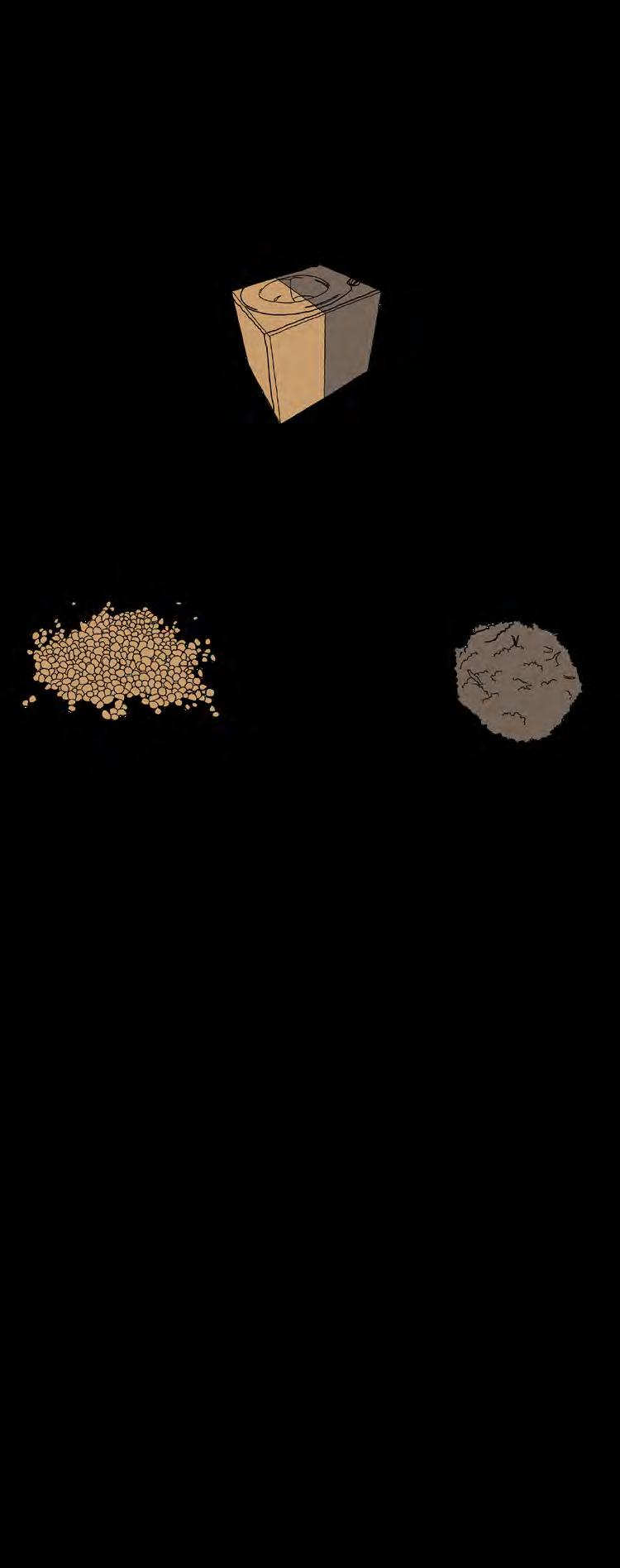
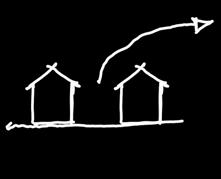
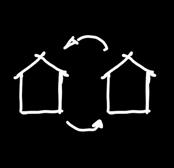
FERTILIZER
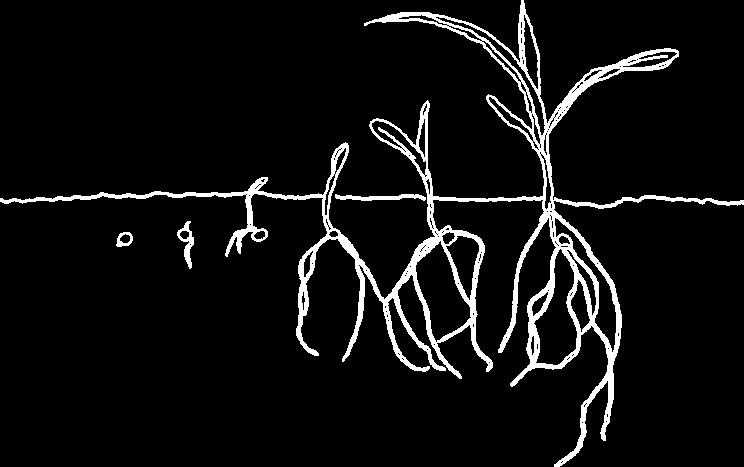
FECES = SOIL

page 69
Right table from The Humanure Handbook page 80
ALMA KOBER SØRENSEN KADK 14 ARCHITECTURE AND EXTREME ENVIRONMENTS
Jenkins, J. C. (2019). The Humanure Handbook, Fourth Edition Shit in a Nutshell. 143 Forest Lane, Grove City, PA 16127 USA: Joseph Jenkins, Inc.
Investigating the potentials of Composting THE
COMPOSTING TOILET
THE COMPOSTING TOILET
URINE =
PLANTS RESOURCES
Diagram of the potentials of a composting toilet in Jakarta
RESEARCH | ARNE BACKLUND

Meeting Arne Backlund was one big pleasure. It is amazing to meet someone who cares so much about toilets. We had a lot of questions prepared for him and who could answer all of them. For me the most important topic was the killing of pathogens in a composting toilet. Arne made me aware that when you want to measure which and how many pathogens there are in a matter, a laboratory test is needed. This can take a long time and it can be hard to get access to a laboratory in Jakarta. Therefore, he advised me to measure the temperature of the matter.
When a matter starts to compost thermophilic bacteria start to develop and heat up the matter. They also happen to kill pathogens and decompose the matter. Therefore, you can assume that the pathogens get killed with measuring a temperature rise in the compost. He advised me to buy a cooking thermometer with a long string and place the measuring part as deep into the matter as possible, to measure the core temperature. With the help of a graph from the book
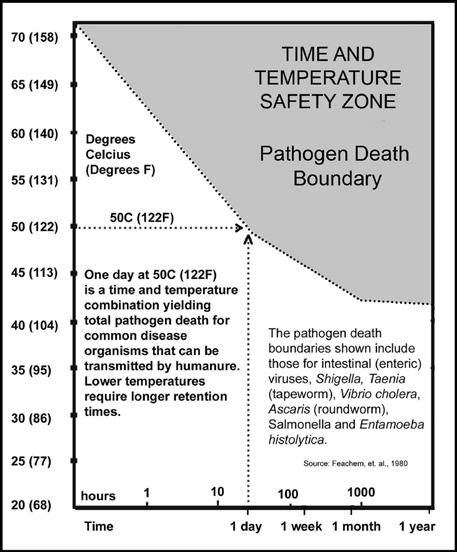
The Humanure Handbook, Shit in a Nutshell by Joseph C. Jenkins, the needed time for killing pathogens can be read. I followed Arne’s advice and got all the things I needed.
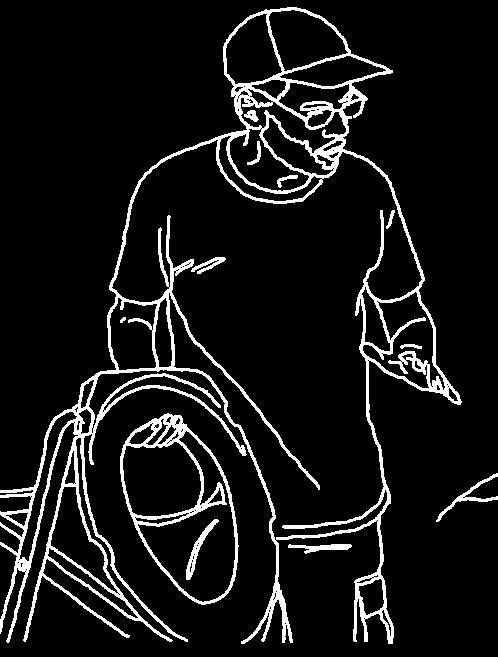
Picture of Thermophiles: National Park Service. (2021). Thermophiles. Retrieved from National Park Service: https://www.nps.gov/hosp/learn/thermophiles.htm
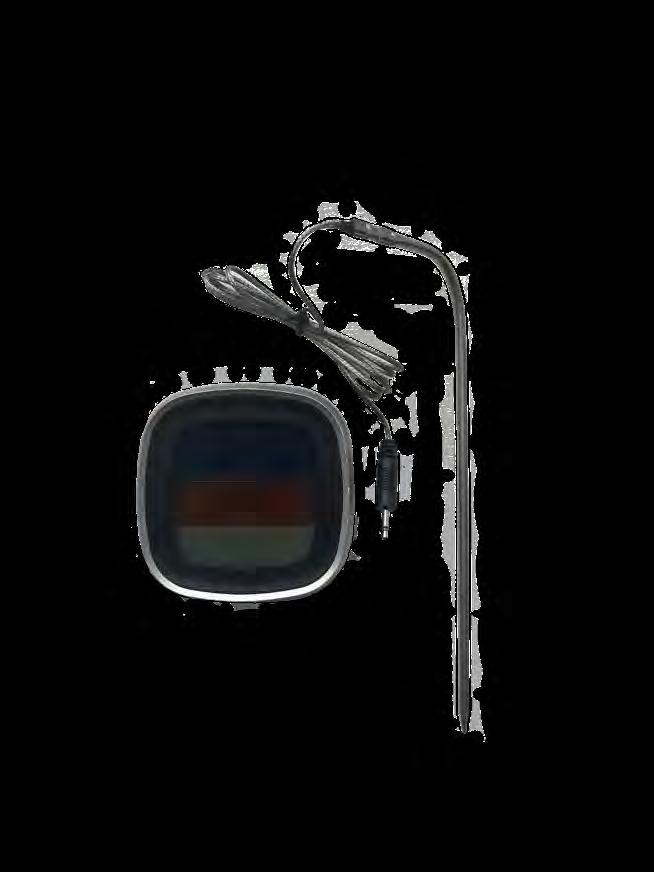
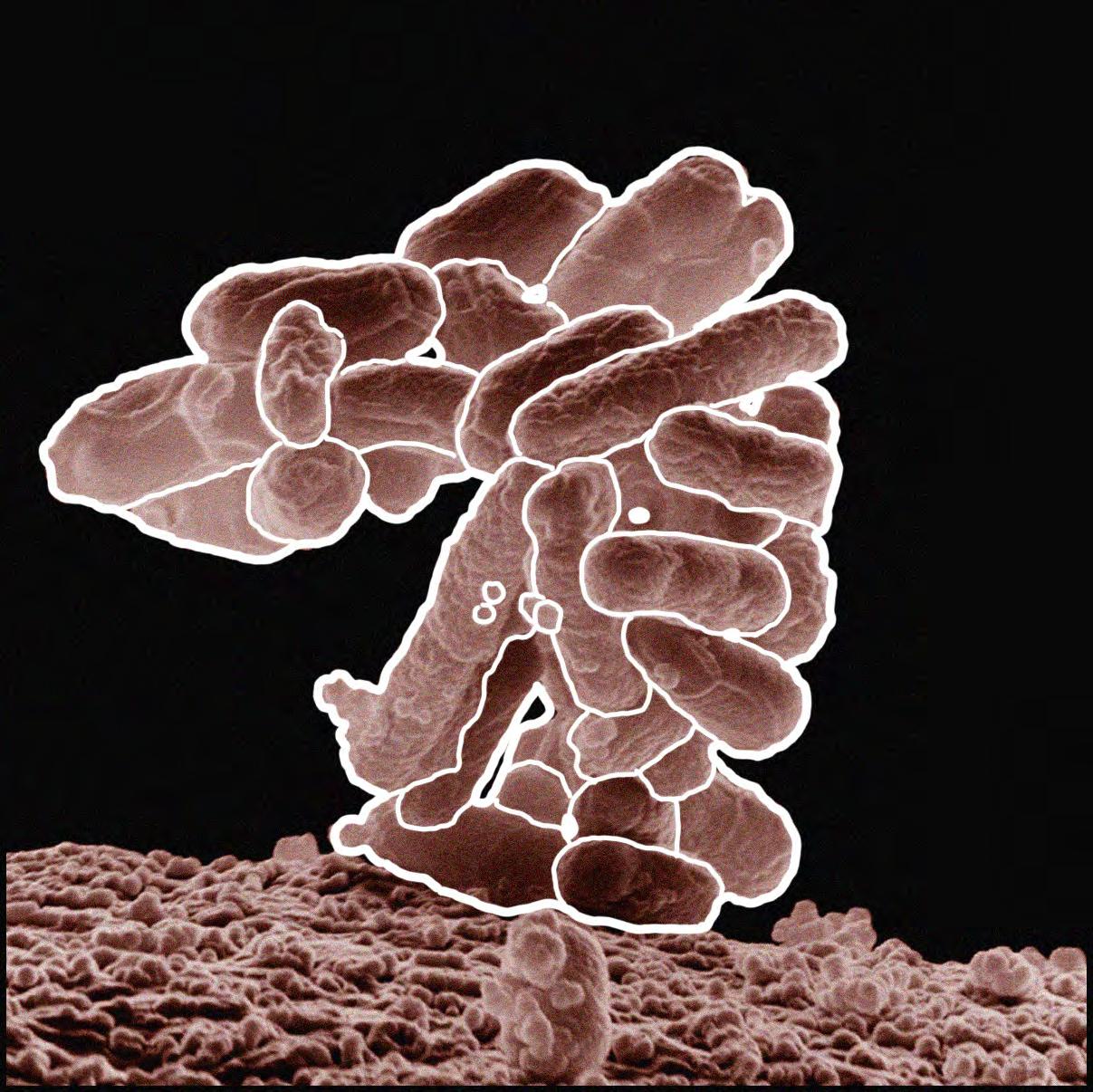
Jenkins, J. C. (2019). The Humanure Handbook, Fourth Edition Shit in a Nutshell. 143 Forest Lane, Grove City, PA 16127 USA: Joseph Jenkins, Inc.
Link to Arne Backlunds Homepage: https://backlund.dk/ Link to Arne Backlunds Linkedin: https://www.linkedin.com/posts/arnebacklund_indonesia-lunark-architecture-activity-6991117908953161728-b7YO?utm_source=share&utm_medium=member_desktop
Jenkins, J. C. (2019). The Humanure Handbook, Fourth Edition Shit in a Nutshell. 143 Forest Lane, Grove City, PA 16127 USA: Joseph Jenkins, Inc.
ALMA KOBER SØRENSEN KADK 15 ARCHITECTURE AND EXTREME ENVIRONMENTS
Meeting a Toilet Expert: Arne Backlund
Thermophiles
THE PROTOTYPE

DESIGNING | THE FIRST LATRINE

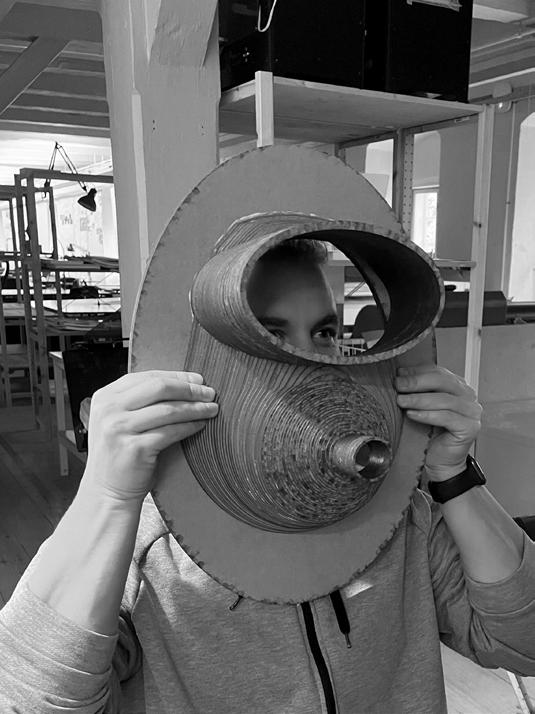

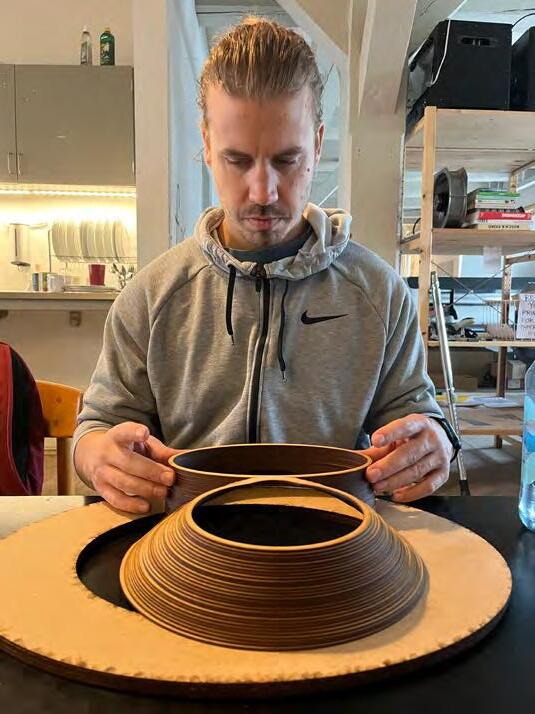

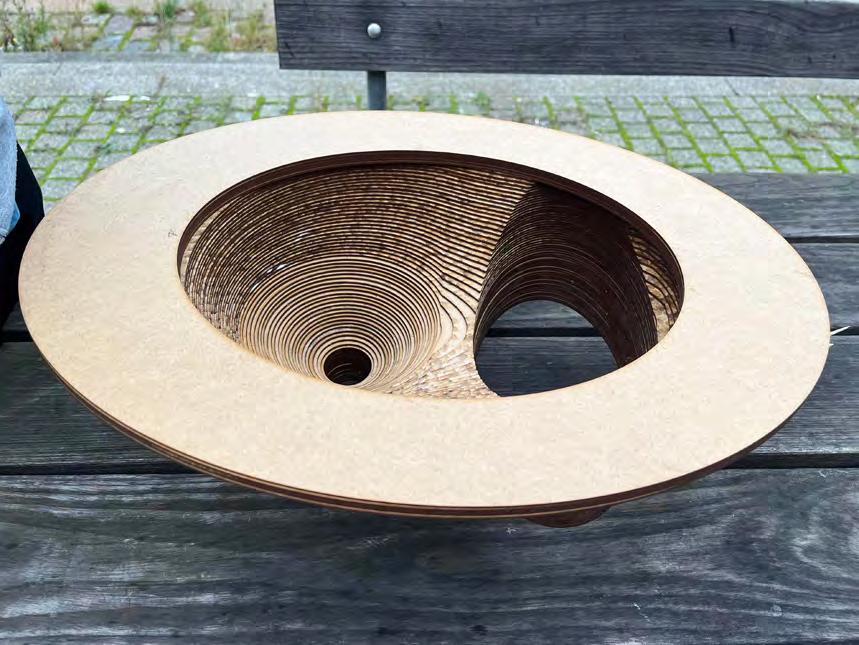
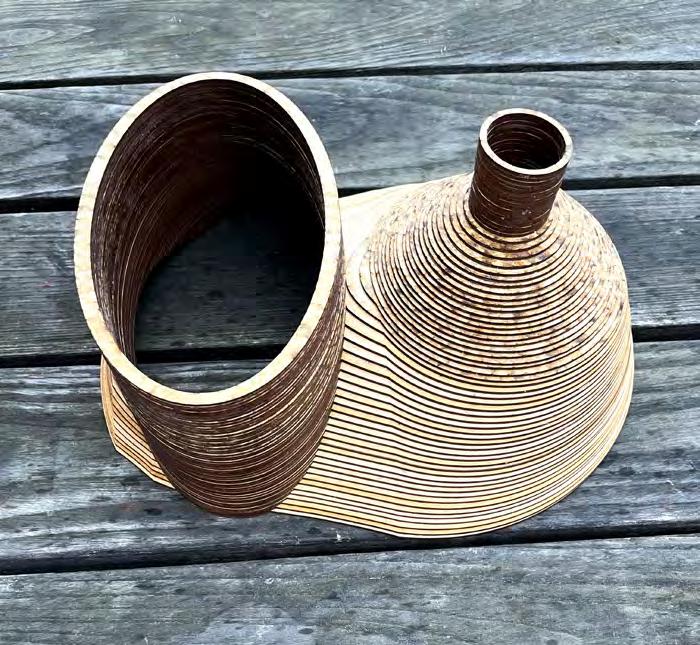
Laser cutting the first Diverting Latrine
A good compost needs to be aerated. The more oxygen the better. Therefore, the compost can also not have too much moisture. A diverting latrine is therefore needed to divide the urine and the feces. It was in this process that Benjamin and I decided to divide our testing. Benjamin wanted to test urine and I wanted to test the composting process and the elimination of pathogens.
The first diverting latrine was drawn as a 3D model in Rhino and laser cut in layers. We collected the puzzle to see if the design would work.

ALMA KOBER SØRENSEN KADK 17 ARCHITECTURE AND EXTREME ENVIRONMENTS
29 59 26 58 57 25 24 56 18 1 2 4 3 5 19 6 7 8 9 10 20 11 12 14 13 15 21 16 17 22 23 40 38 36 55 50 54 53 52 51 49 41 48 47 46 37 37 46 39
Laser cut layers
3D model of latrine
DESIGNING | TESTING THE DIVERTING LATRINE

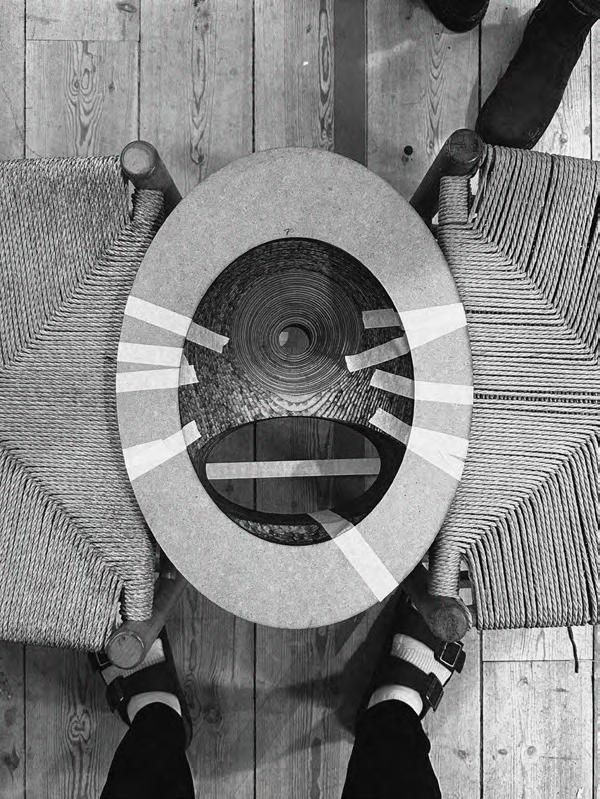
Testing the Proportions and Size of the Latrine
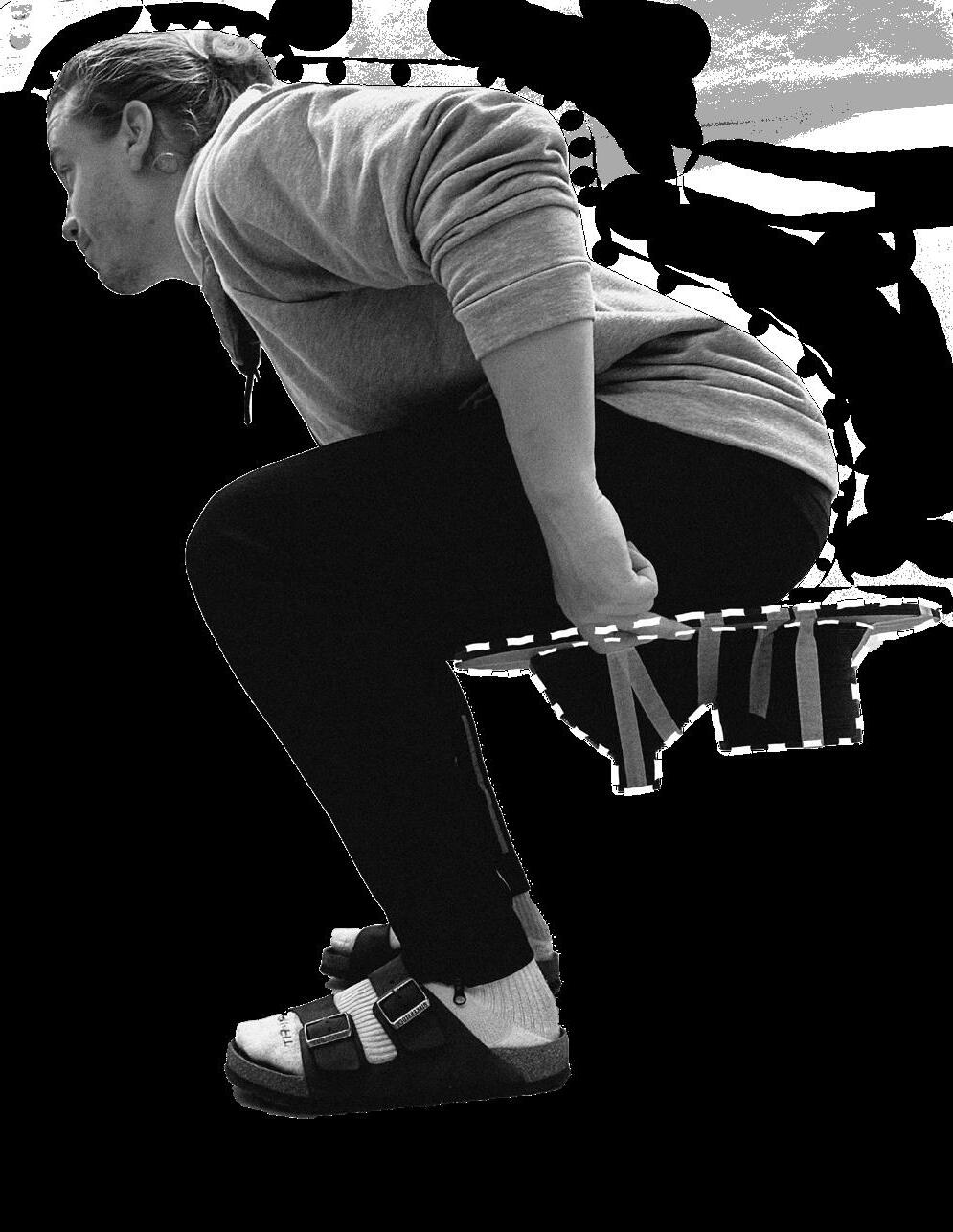
The diverting latrine was put to multiple tests. Laurits and his brother Joakim kindly offered to test the latrine between two chairs, making sure that everything would fit properly. Benjamin and I also did some squat tests. And the latrine was approved. To be extra sure that the design was write we got Arne Backlund’s approval of the size and shape. He said that he had never had a problem with anything missing the container.
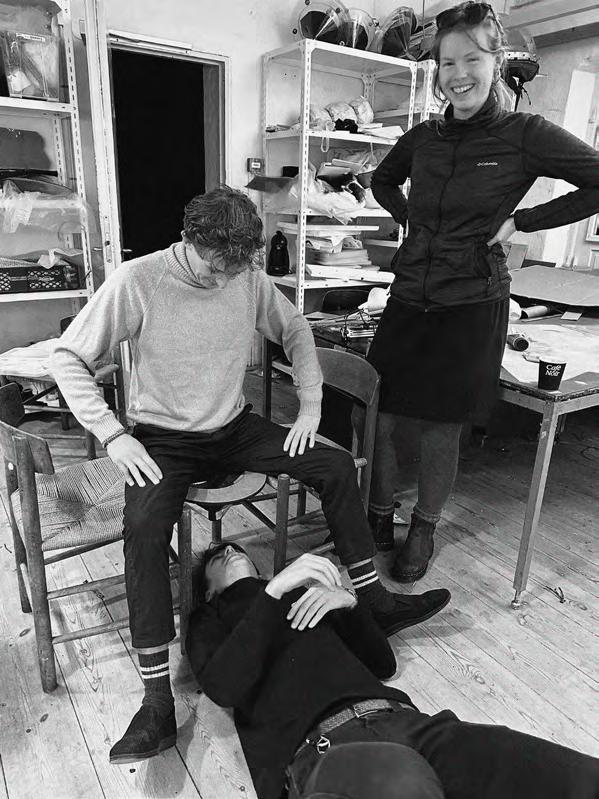
ALMA KOBER SØRENSEN KADK 18 ARCHITECTURE AND EXTREME ENVIRONMENTS
TEST WAS CONFIRMED LATRINE FITS
Laurits and Joakim testing the latrine
Latrine between two chairs
DESIGNING | REFINING THE LATRINE
Cleaning up the 3D model
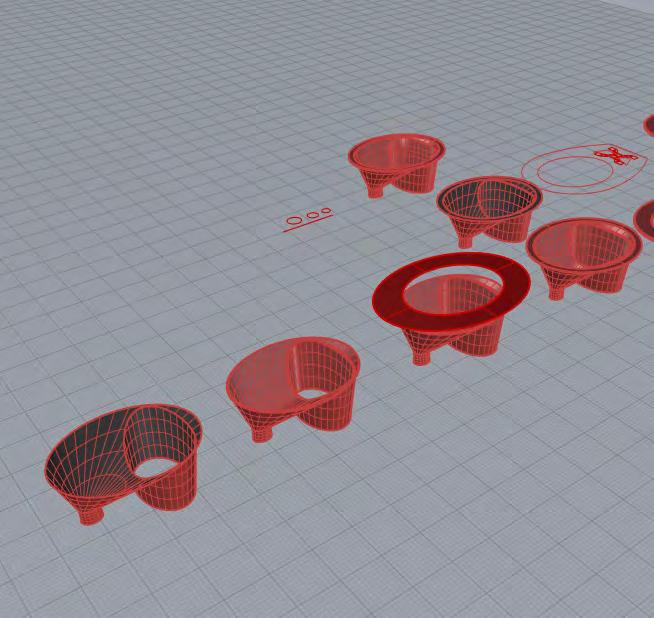
The 3D model for the diverting latrine was refined in Rhino. We strived to get a clean and simple also allowing it to be cleaned easily. We wanted to cast the latrine in aluminum. This process also had an influence on the design. The shape must be tilting inward, allowing the model to slip the model. The final 3D model can be seen beneath.
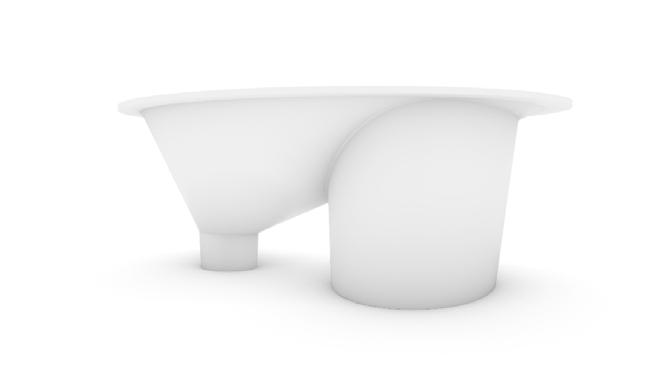

ALMA KOBER SØRENSEN KADK 19 ARCHITECTURE AND EXTREME ENVIRONMENTS
BUILDING | LATRINE
Preparing the Aluminum casted latrine
Mads Johnsen from the school’s metal workshop was very enthusiastic about making the latrine in aluminum, he however also told us that its risky work and a long process. A process we were willing to risk.

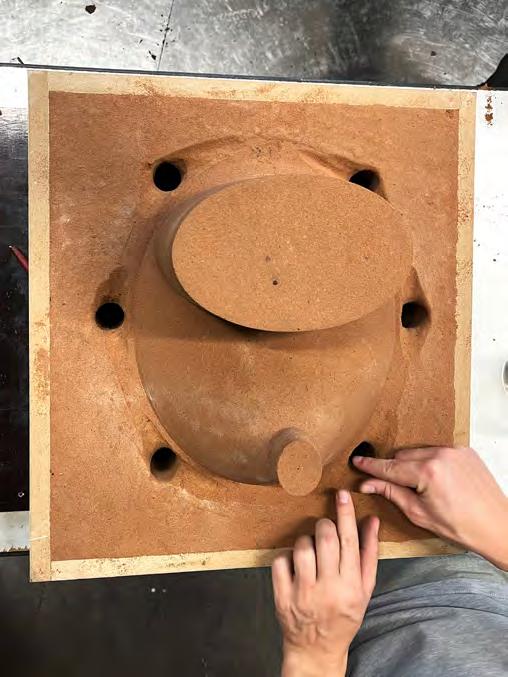


First, we 3D printed the latrine in plastic. Since the model is quite big, we had to print it in 4 parts, gluing them together and covering the seams with a filler. This model was placed in a wooden frame and then covered with a special sand mixed with oil. All the sand was pressed firmly with a stamp, making sure the sand was held in place. Since the latrine is hollow, we had to do the same with the sand mold, which was very complicated. The top negative sand mold had to hover in the air over the bottom mold with a gap of 5mm. Any small movements could break the shape.
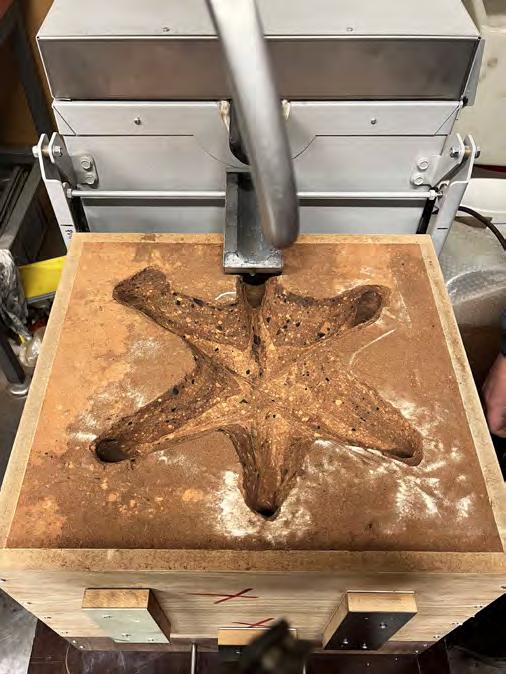
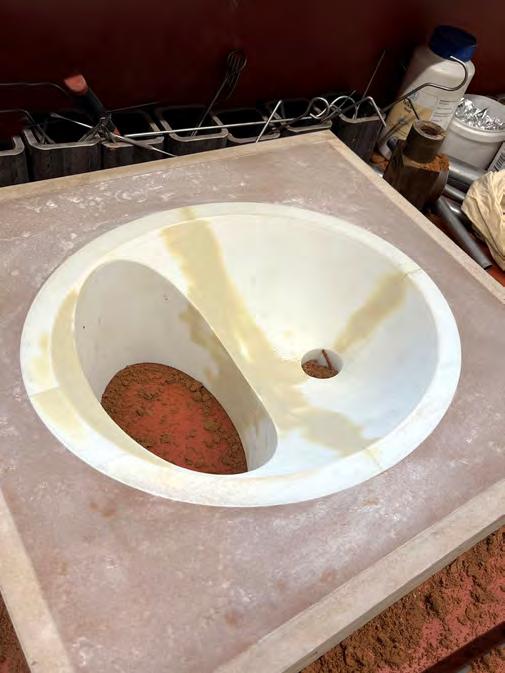
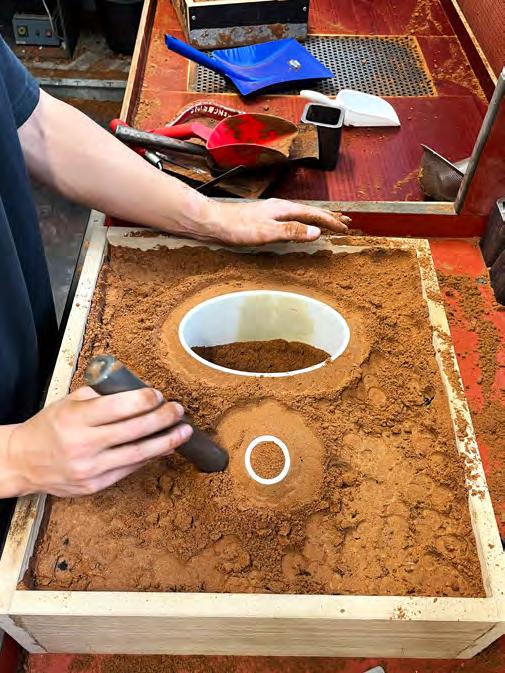

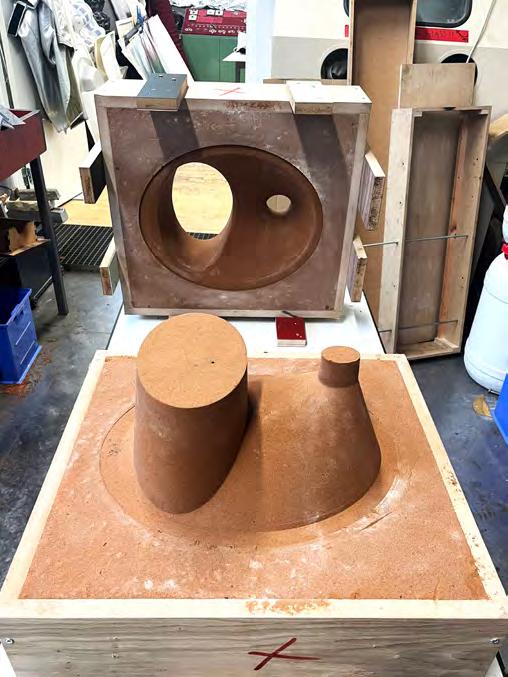
Everything went surprisingly well, so Benjamin and I started digging the tube system the molded aluminum should run into. Mads has been a great help in this process, showing us how it is done and motivating us to continue all the way through.

ALMA KOBER SØRENSEN KADK 20 ARCHITECTURE AND EXTREME ENVIRONMENTS
3D printing
Preparing the sand mold
Digging the tube system for the aluminum
Mads Johnsen inspecting the process

ALMA KOBER SØRENSEN
BUILDING | LATRINE

Casting the Aluminum Latrine
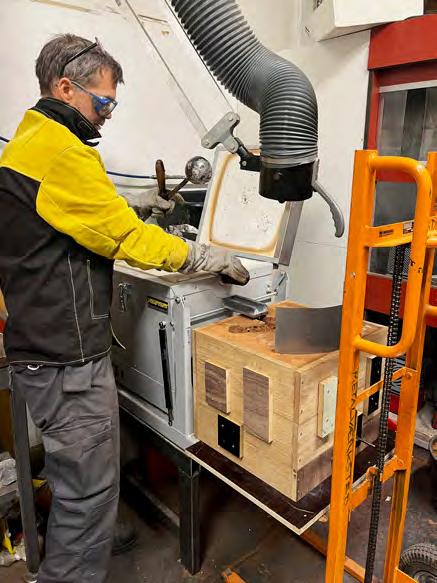
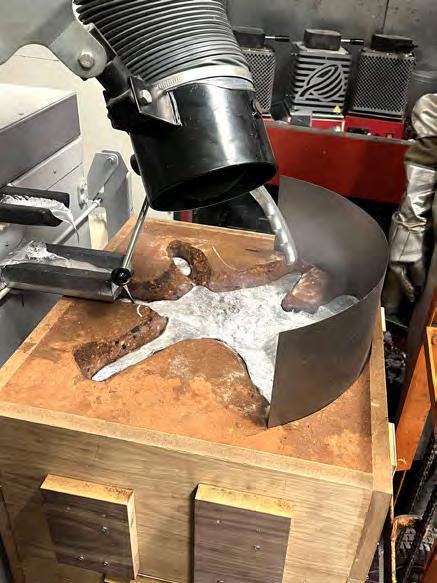
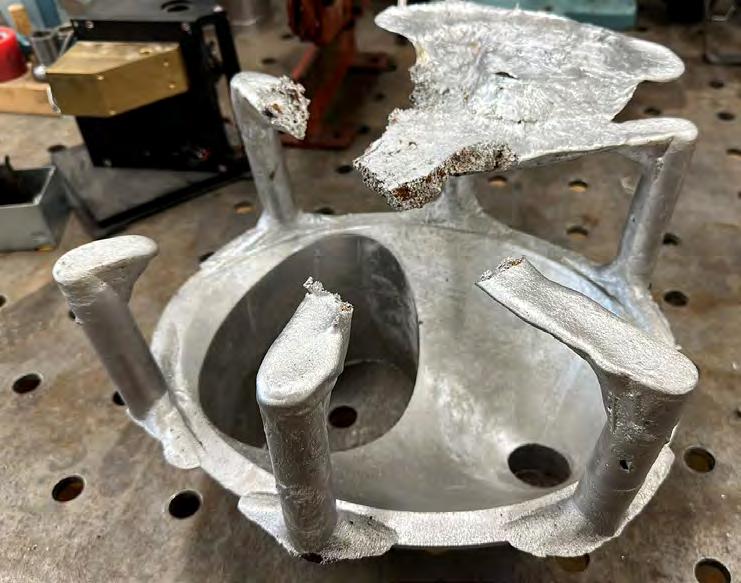
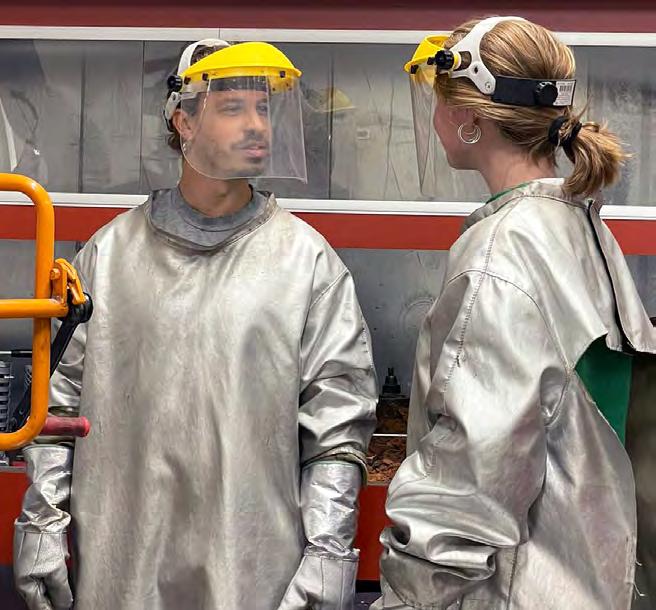
The sand mold took multiple days to prepare. The latrine was ready to be filled with moldy aluminum, which requires protective gear. We did not expect it to work, since a lot of the molded aluminum missed the entry of the mold, when pouring it into. But luckily the mold was filled perfectly. The only thing left to do was to cut the pouring tubes of and polish the latrine.
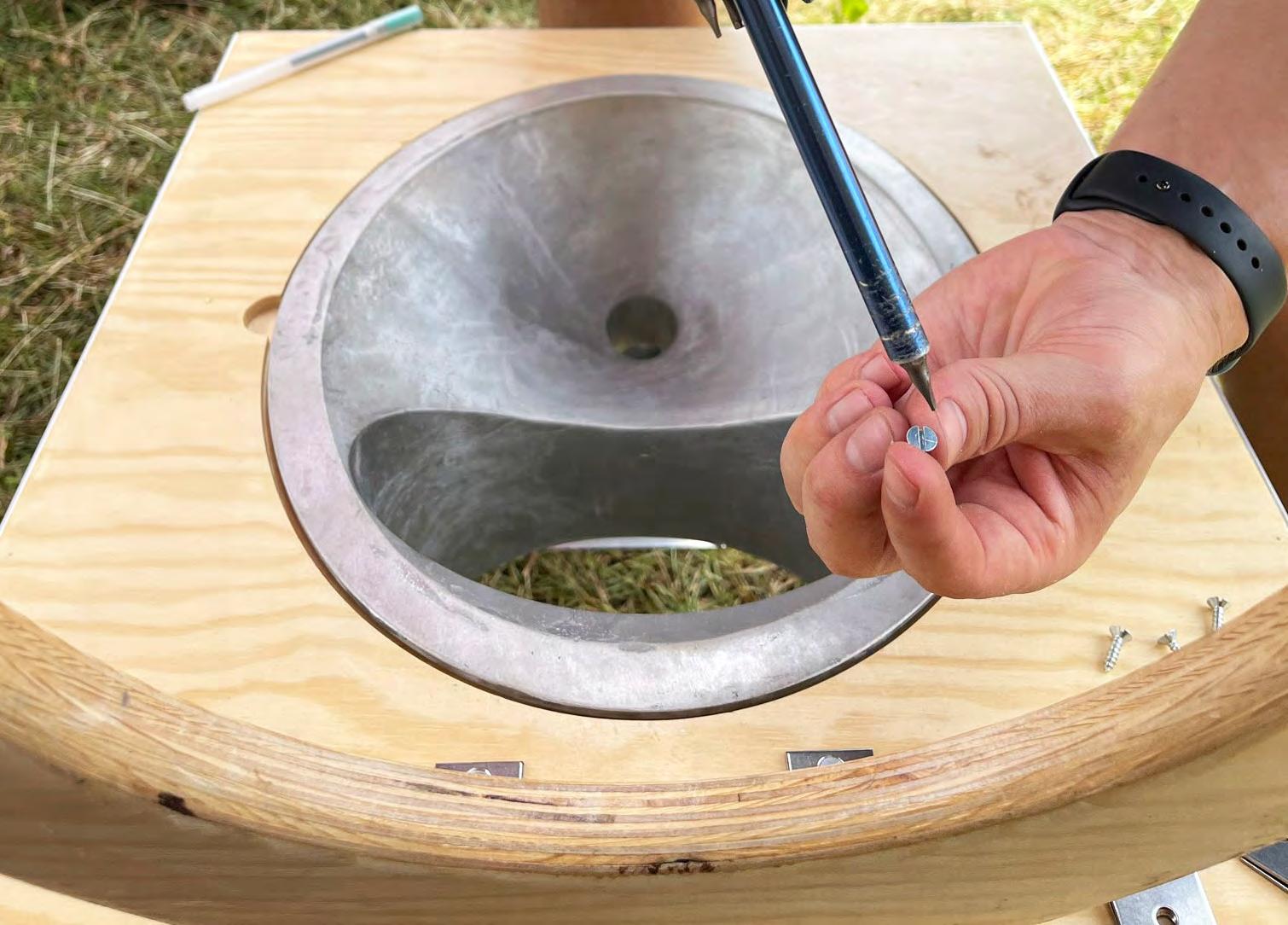
ALMA KOBER SØRENSEN KADK 22 ARCHITECTURE AND EXTREME ENVIRONMENTS
Protective clothes for casting aluminum
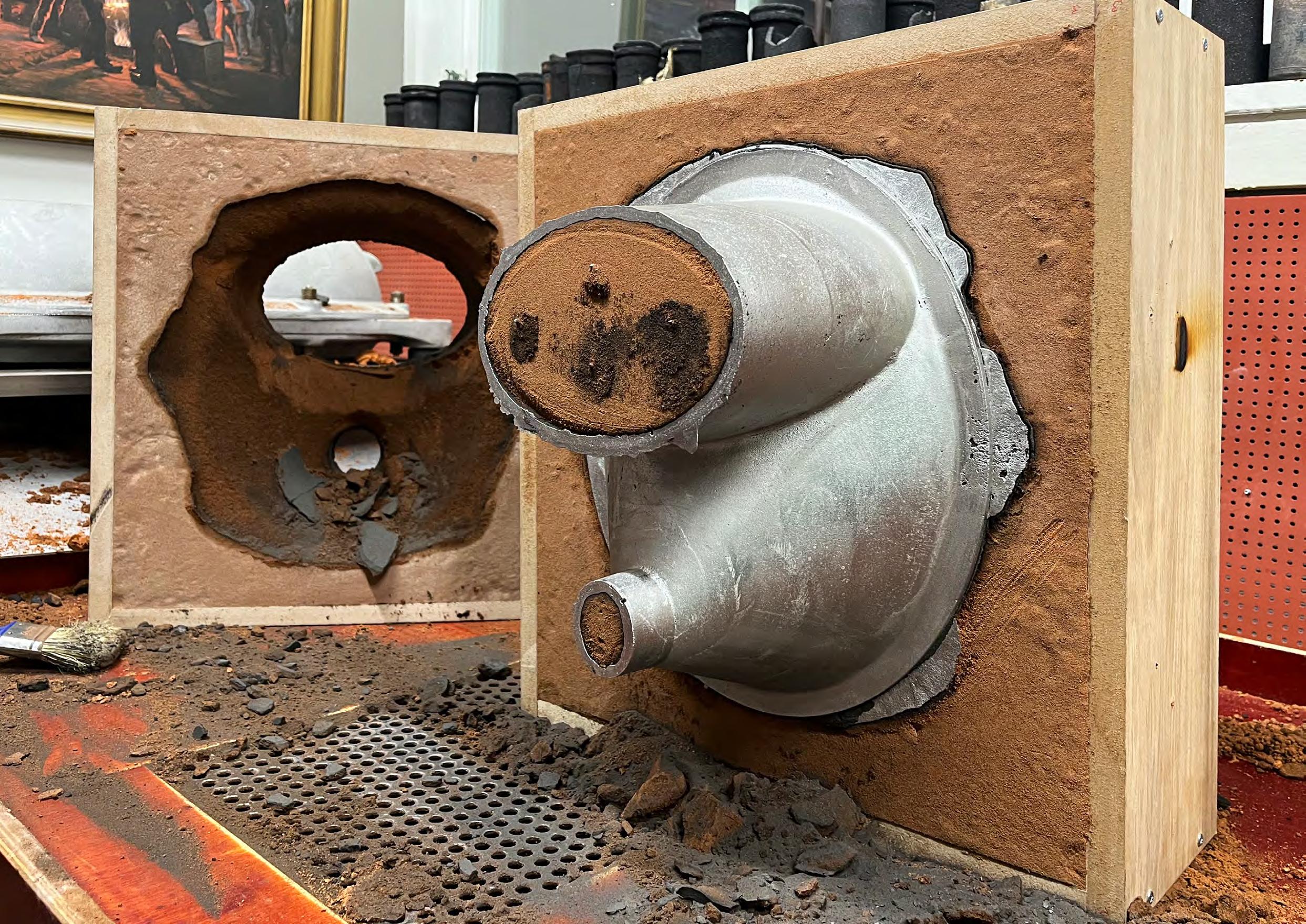
For the composting toilet a toilet seat and a lid are necessary. We were debating whether we should also cast the toilet seat out of aluminum, this idea was abandoned due to weight issues with transporting the prototype to Indonesia. The teachers in the metal and wood workshop recommended to build the seat in cross veneer, since it is both cheap and very strong. A waterproof wooden floor coating was added in 3 layers to make it waterproof. The frame for the latrine was designed so that the latrine easily can be taken out and clean in case the toilet will be moved. The frame, toilet seat and lid can be taken apart and stacked.
BUILDING | THE WOODEN TOILET SEAT Seperating Toilet Bowl Alluminium
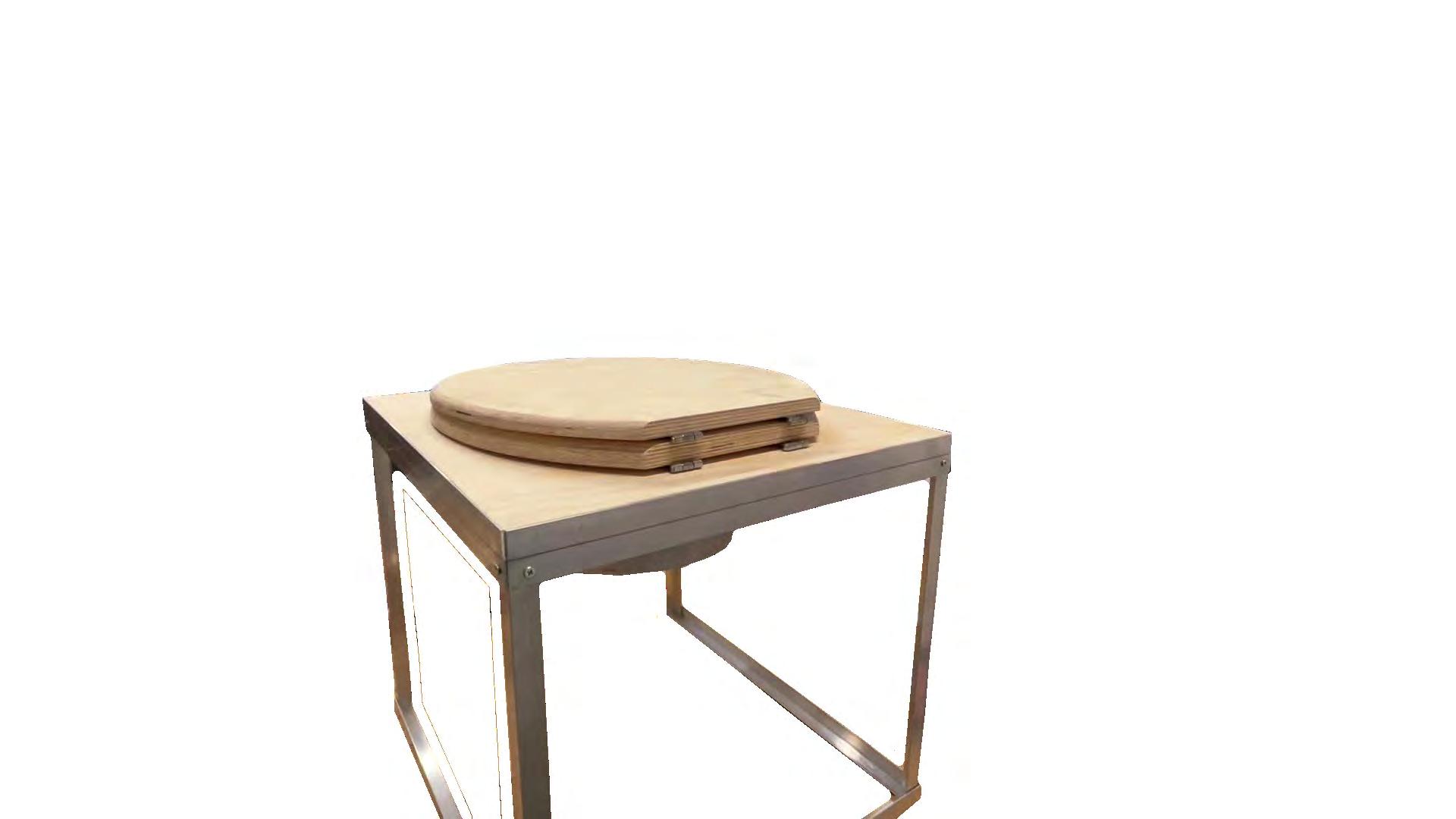


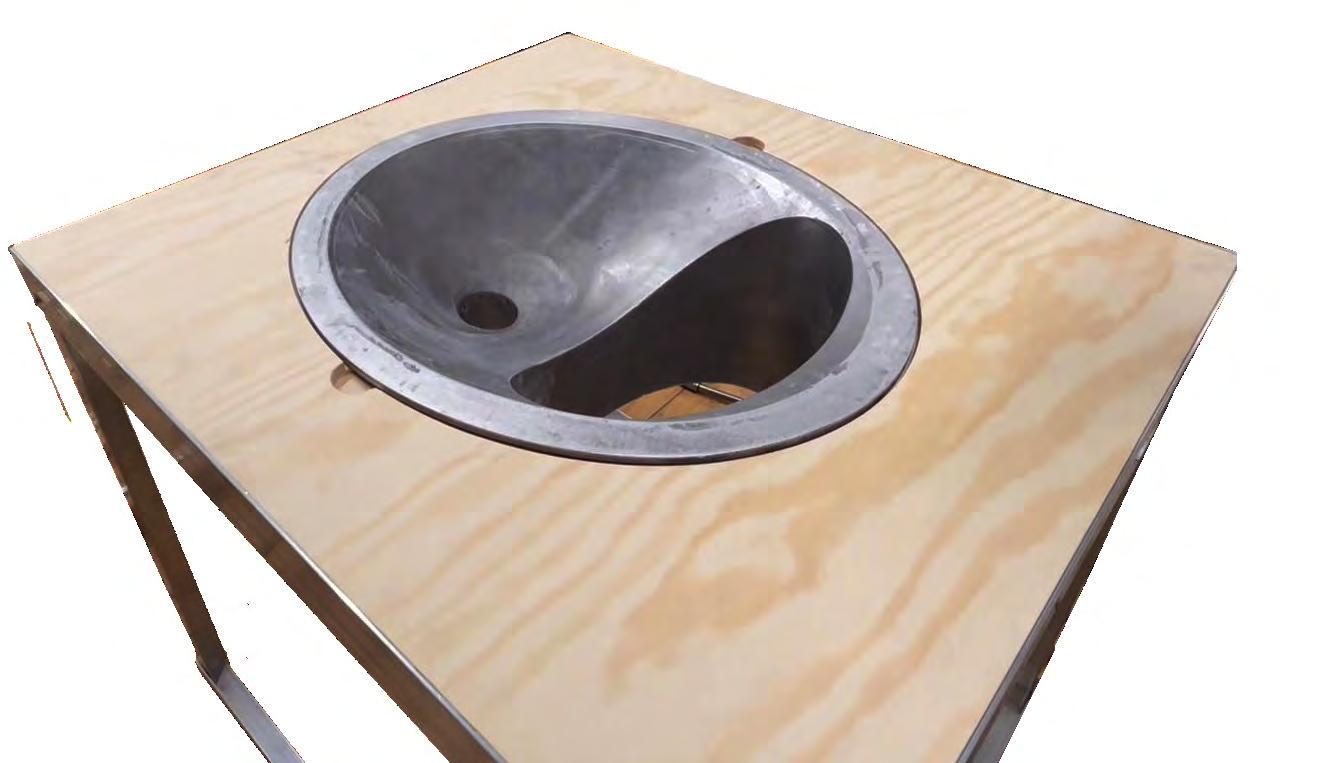
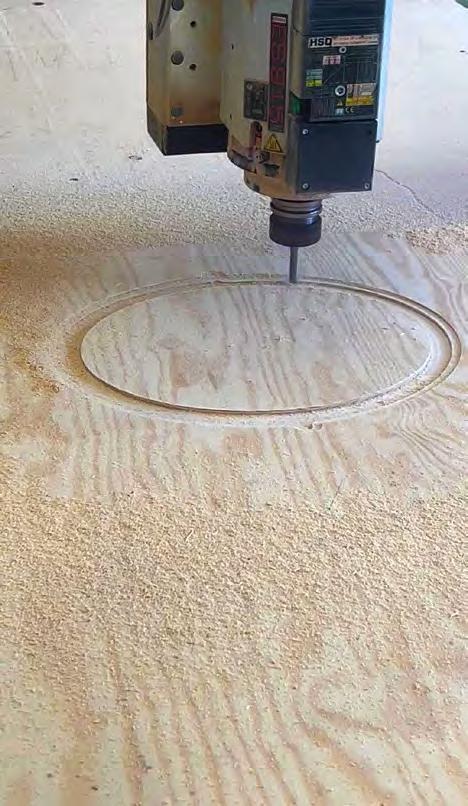
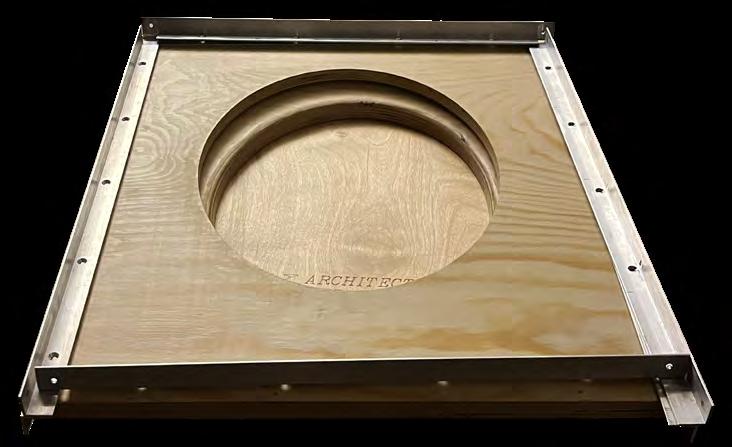
Sketch of the elements of the toilet
Toilet Seat wood milling Plastic containers Local Hardware store
Wooden frame stacked

Bow for containers Material?
3D model of the toilet
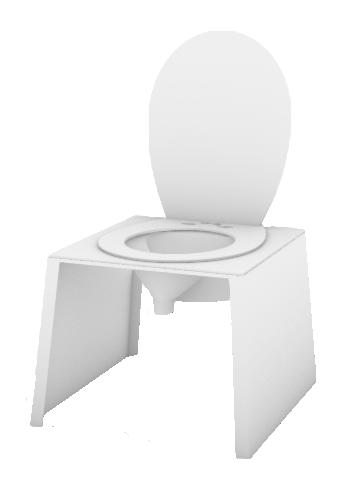
ALMA KOBER SØRENSEN ARCHITECTURE AND EXTREME ENVIRONMENTS
Laser cutting the Toilet Frame for Bowl Wood milling
Aluminumlatrineinwoodenframe
DESIGNING | THE TOILET HUT
Process ideas of the Toilet Hut
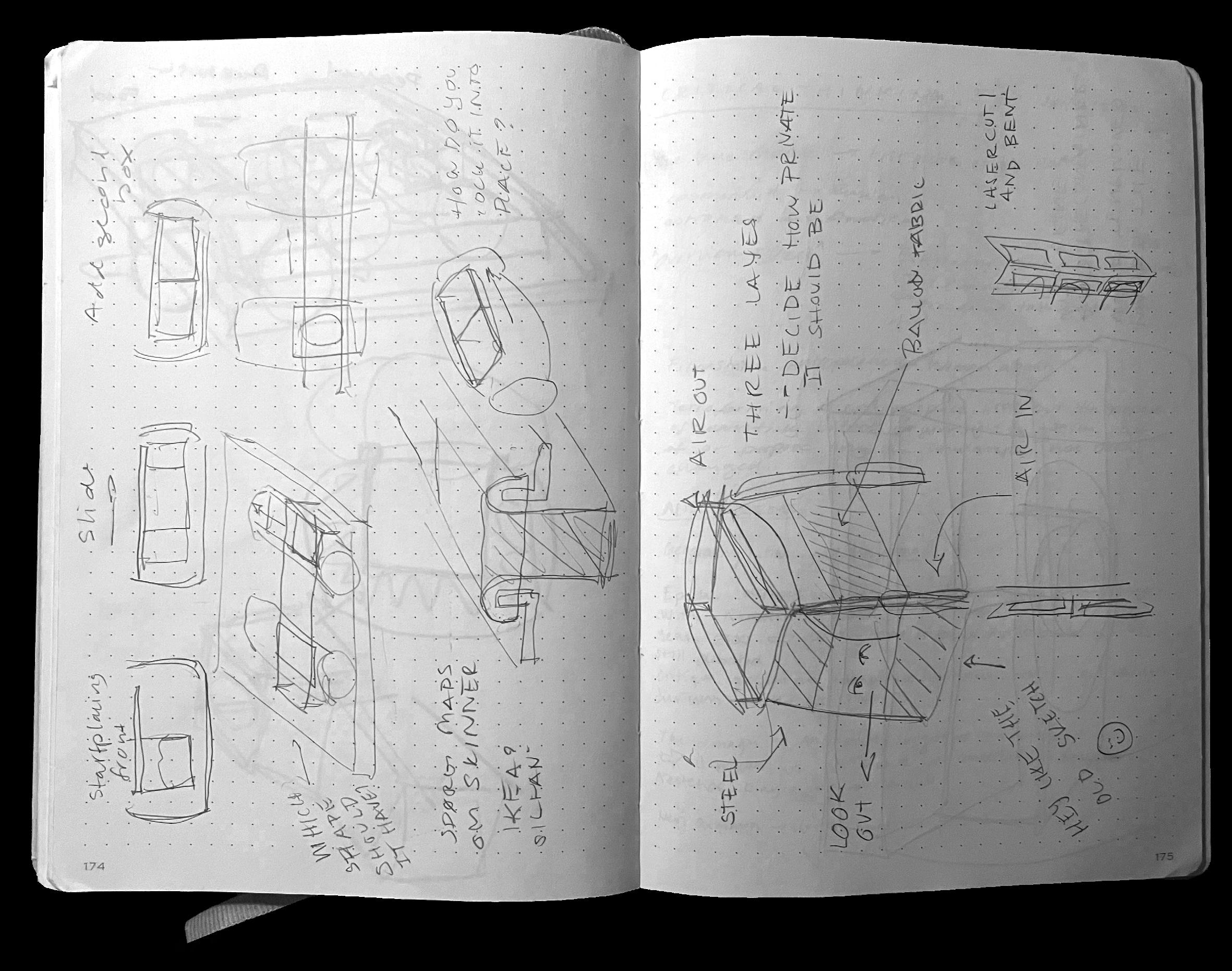
ALMA KOBER SØRENSEN KADK 25 ARCHITECTURE AND EXTREME ENVIRONMENTS
Sketchbook
THE FINAL DESING | TOILET HUT
A Waterproof Ventilated Toilet Hut Tent
The Toilet Hut was design to provide privacy while using the composting toilet. The Hut was supposed to be light and able to be deconstructed easily so that it could be transported in a suitcase to Jakarta. The intension was that it on one hand should provide shelter from weather and on the other hand it should be able to open for ventilation.
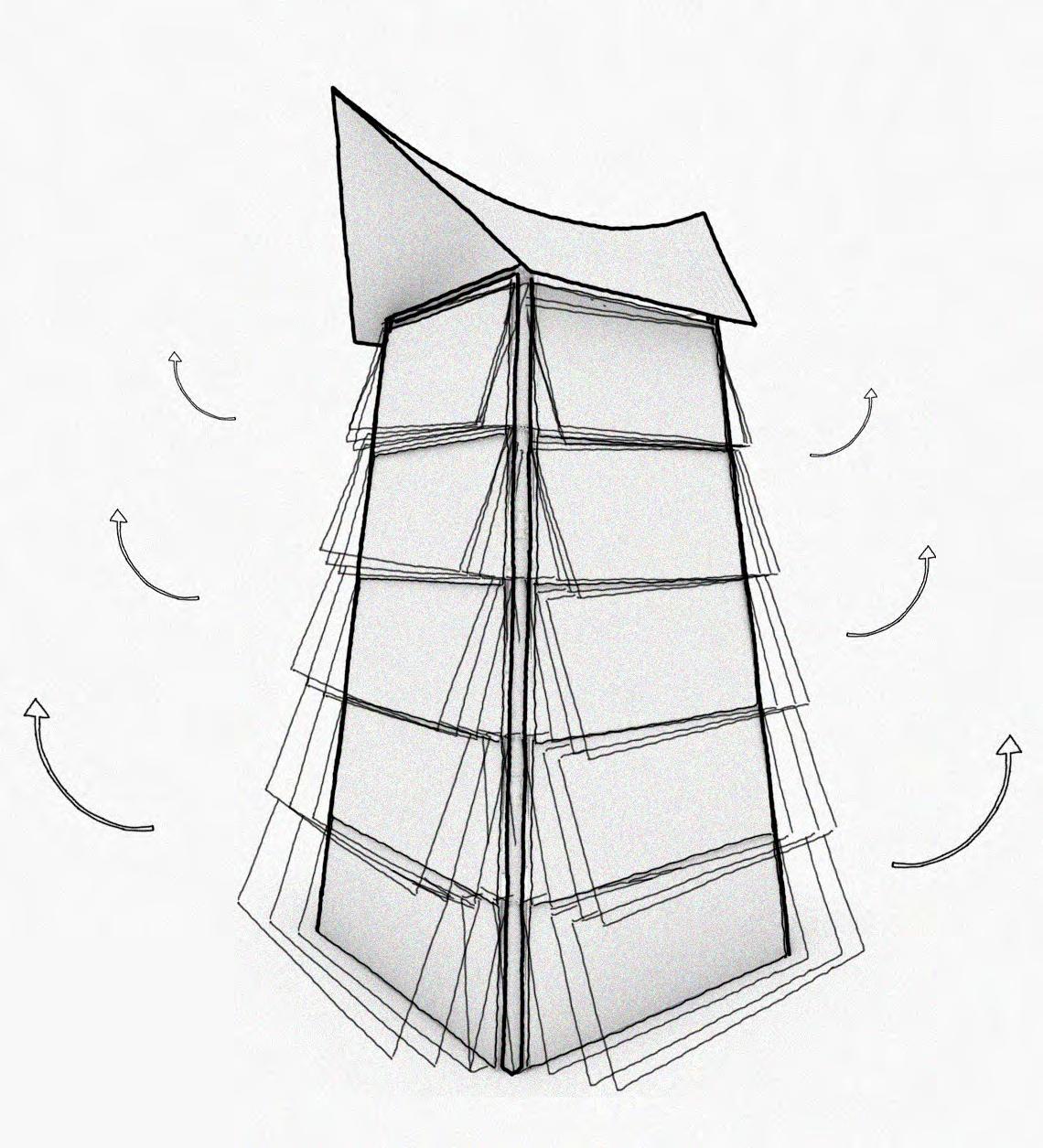
The artistic approach of the hut was inspired by Indonesian architecture from around the country. Going to the toilet is often seen as an awkward, simple everyday experience. In this project the intension was to praise the toilet. The toilet should be an aesthetic object so that the act of going to the toilet would be seen as a positive action and not something one should be ashamed of.
The Bolon House (top picture) can be found in the Toba Batak sub-tribe on Sumatra. The house consists of storage and a family home, where everybody sleeps together. Traditionally the house is built by all members of a society as a symbol for community. The house is believing to reflect the gods, though the roof, the humans, through the core of the house and the dead, through the basement.

The Pura Taman Ayun temple can be found on Bali, it is located north of Denpasar. The name of the temple means “Garden temple in the water” and dates to 1632.

Tanahlot Bali. (n.d.). Pura Taman Ayun. Retrieved from Tanahlot Bali: https:// www.tanahlotbali.com/blog/bali-taman-ayun-temple.html
Bali Cheapest Tours. (n.d.). Taman Ayun Temple. Retrieved from Bali cheapest tours: https://balicheapesttours.com/taman-ayun-temple.html
Lake Toba. (n.d.). Batak Traditional Houses on Lake Toba. Retrieved from Lake Toba: https://www.laketoba.com/batak-traditional-houses/

ALMA KOBER SØRENSEN KADK 26 ARCHITECTURE AND EXTREME ENVIRONMENTS
Elevations and sections of the final design
Bolon House
Roof seen in Jakarta
Pura Taman Ayun
Final Hut design, Panels open for ventilation
BUILDING | PANELS
Sewing the waterproof panels


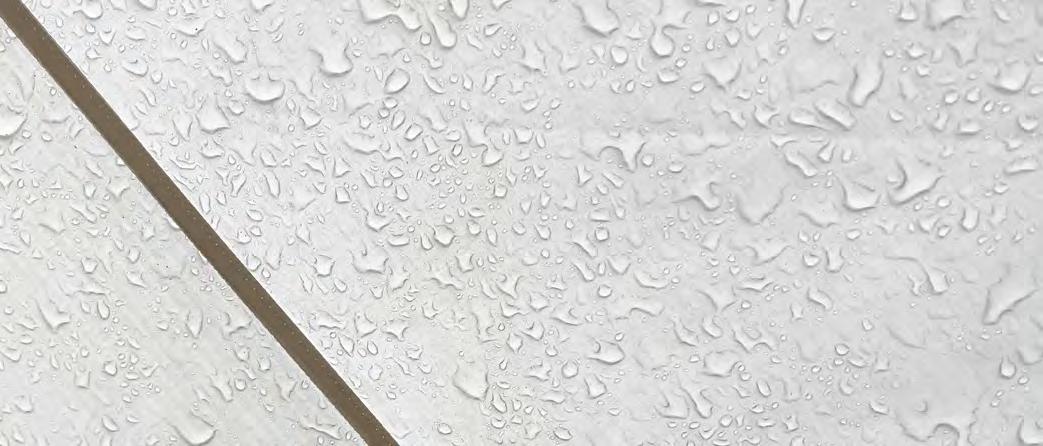

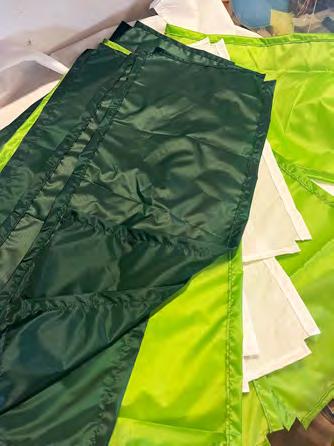
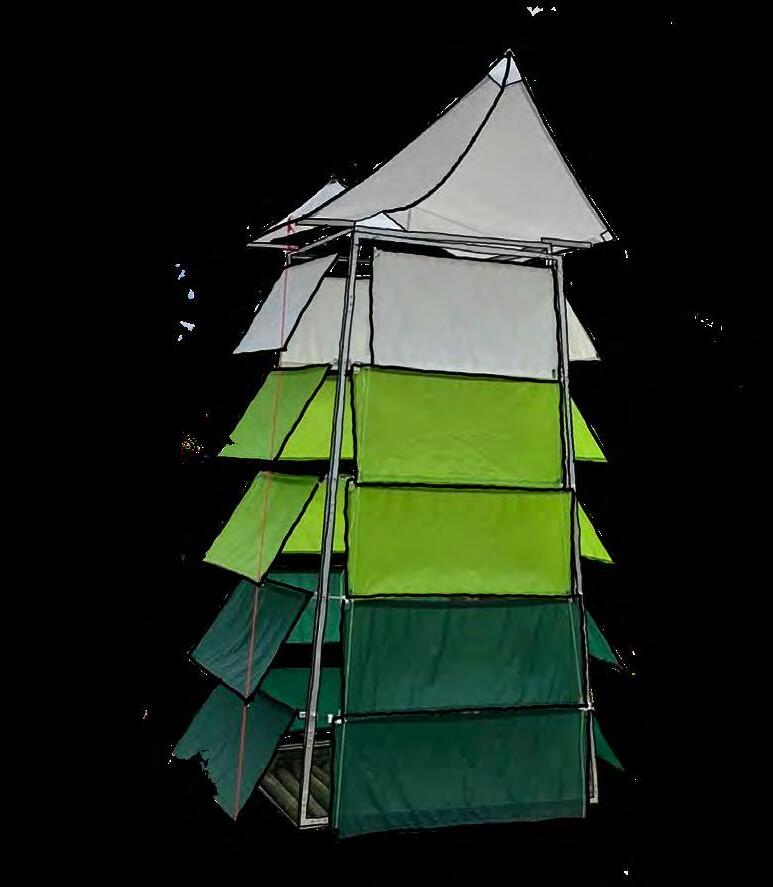
The envelope of the Hot-Air-Balloon is made of ripstop nylon fabric. A Hot-Air-Balloons has a lifespan of around 300 hours. The coating on the fabric breaks down over time making the Hot-Air-Balloon leaking, causing a higher usage of gas. The old Hot-Air-Balloons in Denmark get repaired by the balloon pilot Christoffer Mundt, who has won the Danish championship multiple times. Christoffer was very kind and donate old and new pieces of balloon fabric to the project. The fabric was used to sew the panels for the hut structure of the toilets. The panels are waterproof and allow the toilet to be ventilated. 40 panels were sewn in three different colors, as well as a roof.
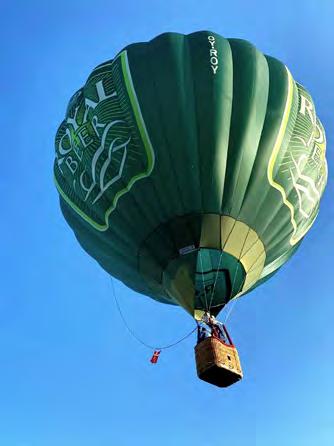

ALMA KOBER SØRENSEN KADK 27 ARCHITECTURE AND EXTREME ENVIRONMENTS
Information about fabric from a facebookchat with Eskild Paamand, Balloon Pilot
Picture by Michale Hesselvig
Christoffer Mundt, Balloon Pilot
Picture by David Garcia
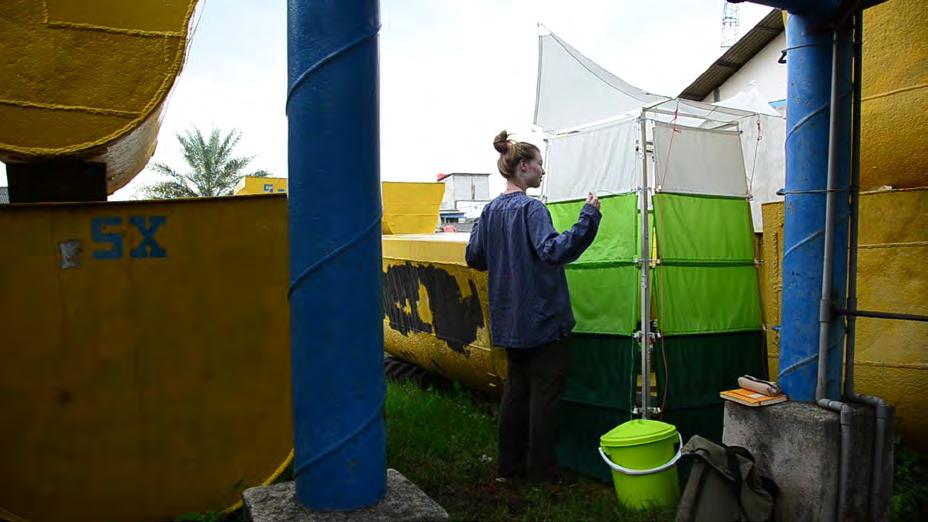
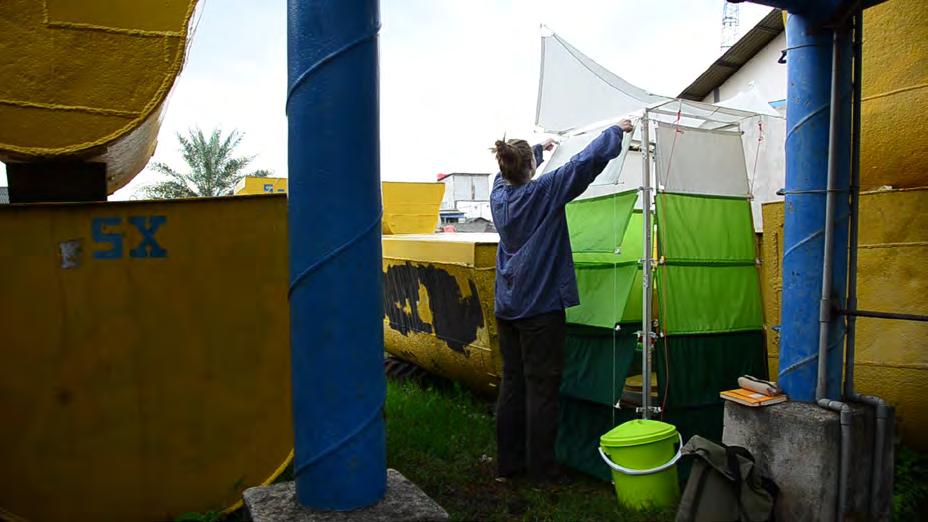

ALMA KOBER SØRENSEN KADK 28 ARCHITECTURE AND EXTREME ENVIRONMENTS
Opening the panels
THE FINAL DESIGN | TOILET
Composting toilet with Rice Husk

29
DESIGNING | FIRST IDEAS FOR FLOODPROOFING THE TOILET
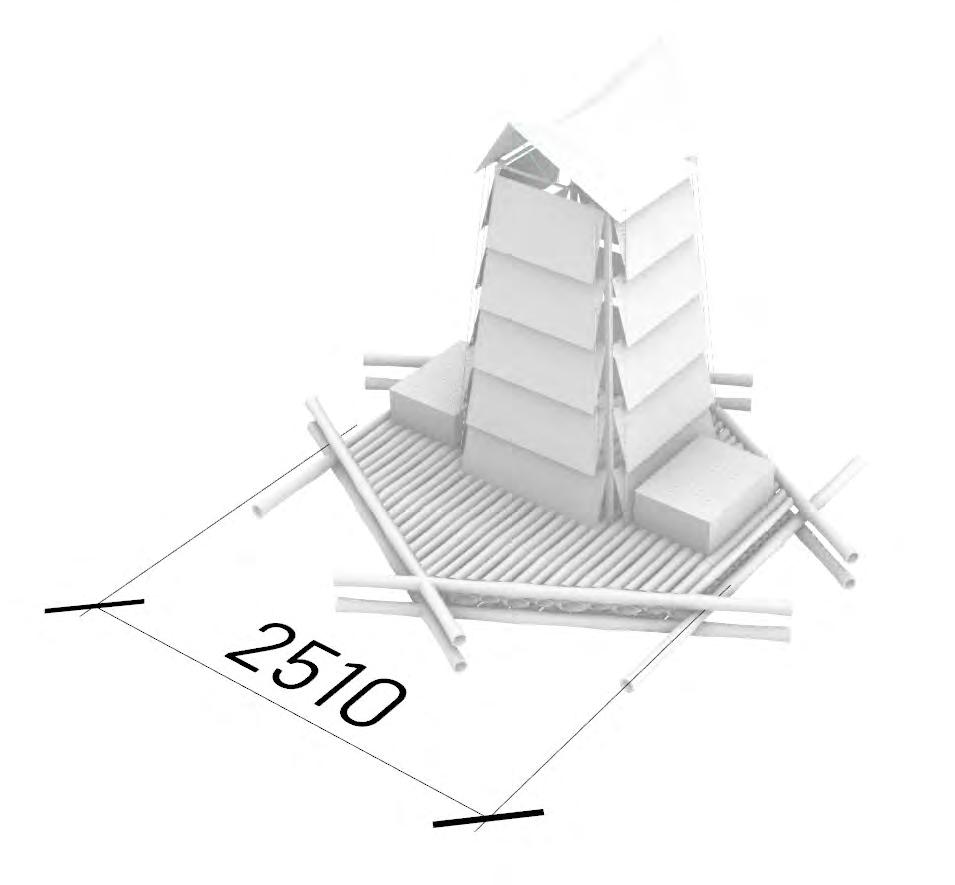
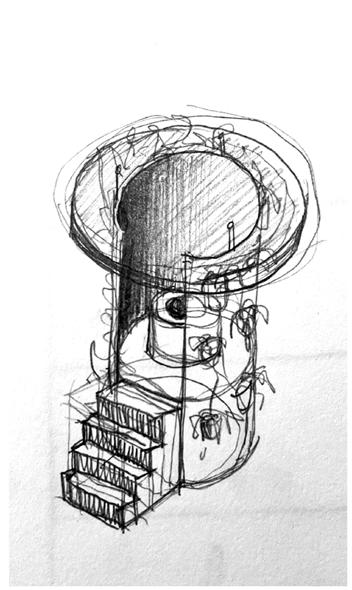
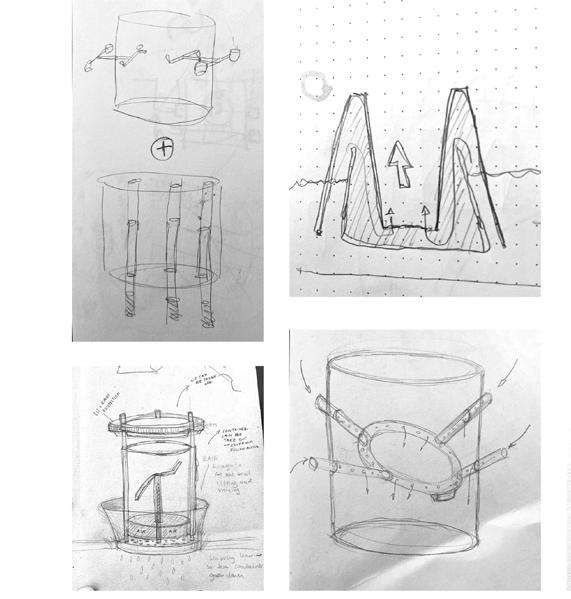
Floodproofing
the Toilet
For flood proofing a toilet you have different options. You can create a container that does not allow water ind. Or you can make a container that seals itself by being pushed up against a lid by incoming water. We had may ideas for flood proofing the toilet. The difficult part was that the compost must be ventilated, the more air the better. The combination of water proofing and ventilation was very difficult to find a good solution for that would not be too complex. A simpler solution is to raise the toilet, so that flooding water does not touch it. We decided that a flood proof toilet should work both before, during and after flooding. The best way to create that is a toilet that moves with the flood, on a floating raft made of bamboo.
ALMA KOBER SØRENSEN KADK 30 ARCHITECTURE AND EXTREME ENVIRONMENTS
FIELDWORK
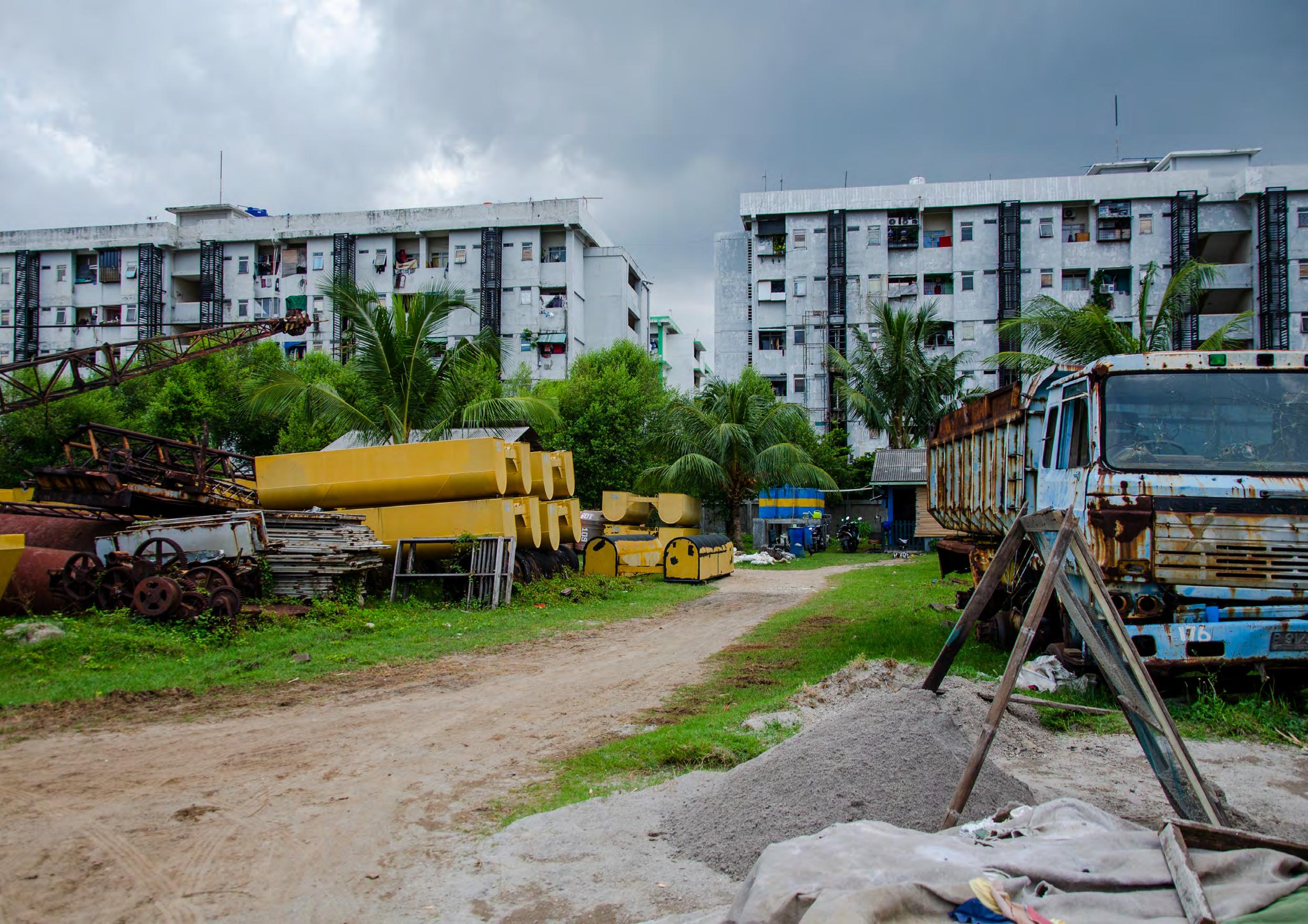
Which Toilets do the Locals use and why?
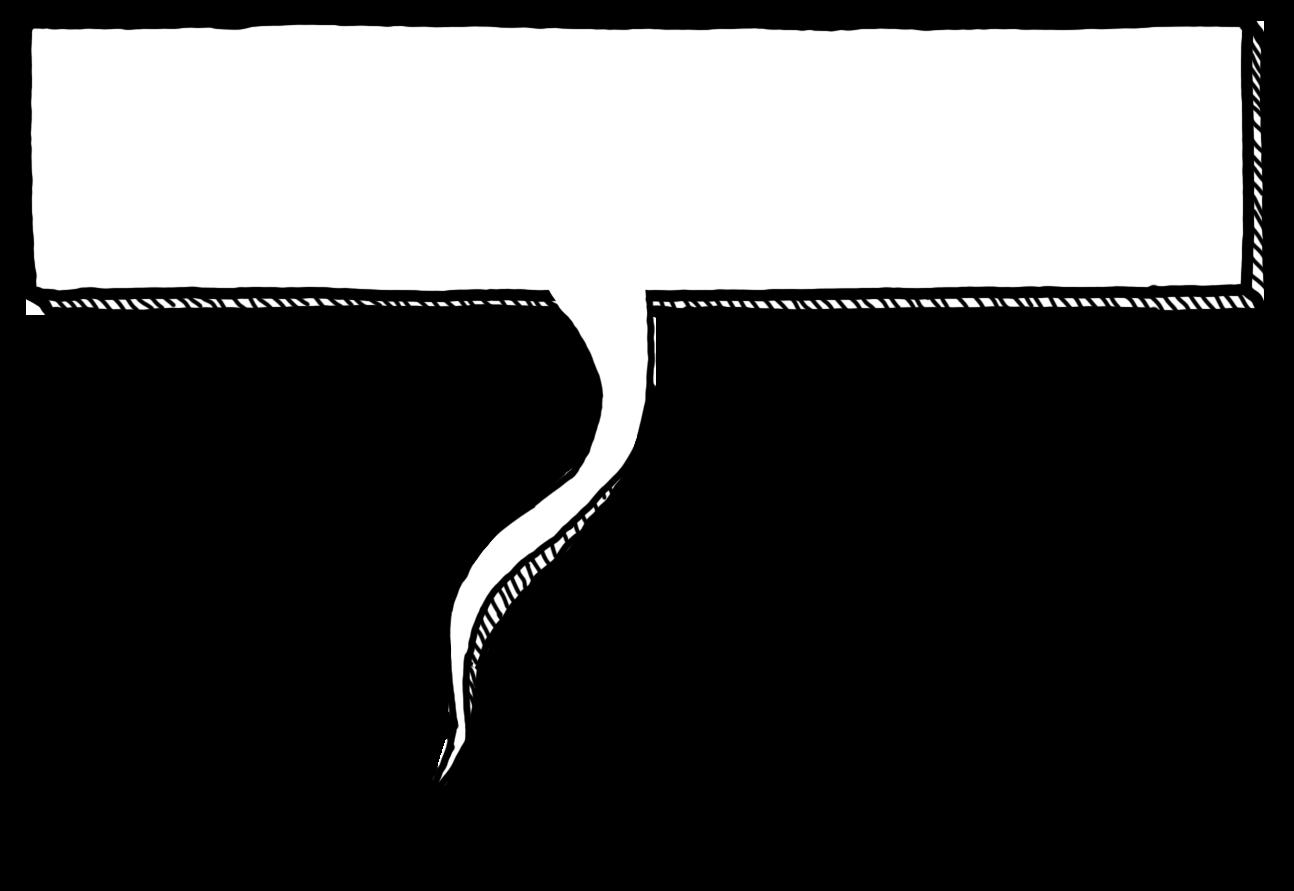

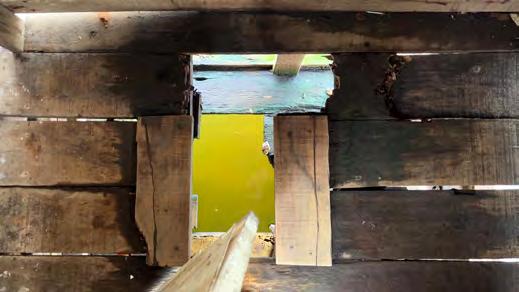
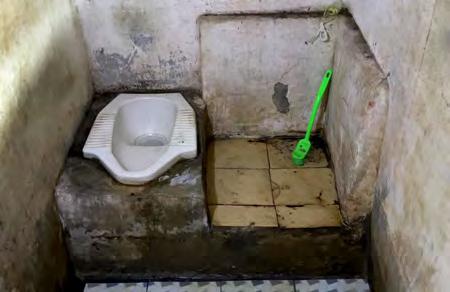

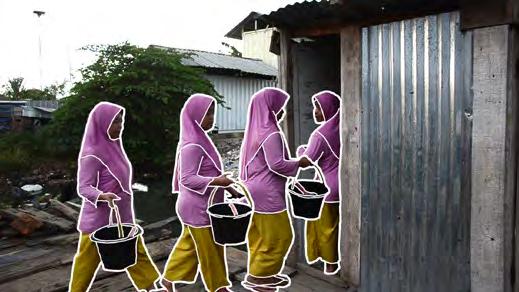
While working in Gedung Pomp we talked to a lot of people about their toilet use. Almost everybody used a Jamban, whether that is the public one on the sea wall or a private one shared amongst families. In the researching phase back home, it seemed very illogical to let the feces run into the water, but after spending time in Gedung Pompa, it made more and more sense why so many people prefer that. Without a public sewage system, you must take care of the matter yourself. Many people prefer the water since it does not smell, and it removes the problem very quickly. Of course, other problems arise, but these problems are invisible.
All the interviews we made would not have been able to happen without the help of Tria Anggra Yani and s.Wulandari who translated the conversations and spend a lot of their time helping us. So, a very big thank you to Tria and Wulan, well as all the amazing people who wanted to be interviewed.
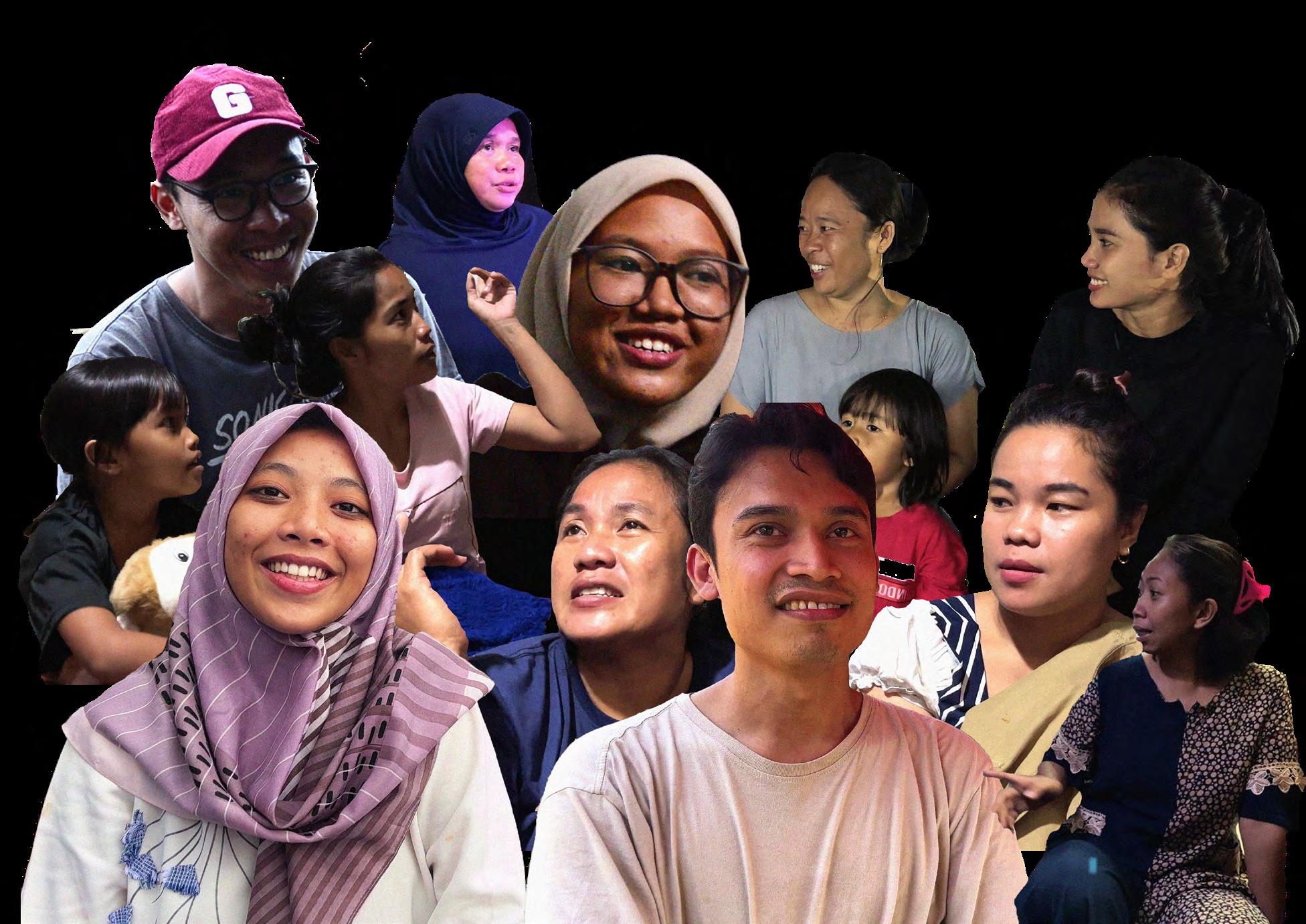
ALMA KOBER SØRENSEN KADK ARCHITECTURE AND EXTREME ENVIRONMENTS
INTERVIEWING
FIELDWORK |
LOCALS
Tria Anggra Yani (bottom) and s.Wulandari (top) Citizen of Gedung Pompa
“I’VE BEEN USING THIS JAMBAN FOR A LONG TIME, BECAUSE IT’S GOOD TO CHAT AND IT DOESN’T STINK AND IT FALLS STRAIGHT TO THE BOTTOM.”
GEVER ARMA WULAN ALAN RATNA TRIA
- RATNASARI (20 YEARS)
Arma using the Jamban Bucket of water for the toilet Jamban leading to water Private toilet in Indris House, 1st floor
MATERIALS | RICE HUSK
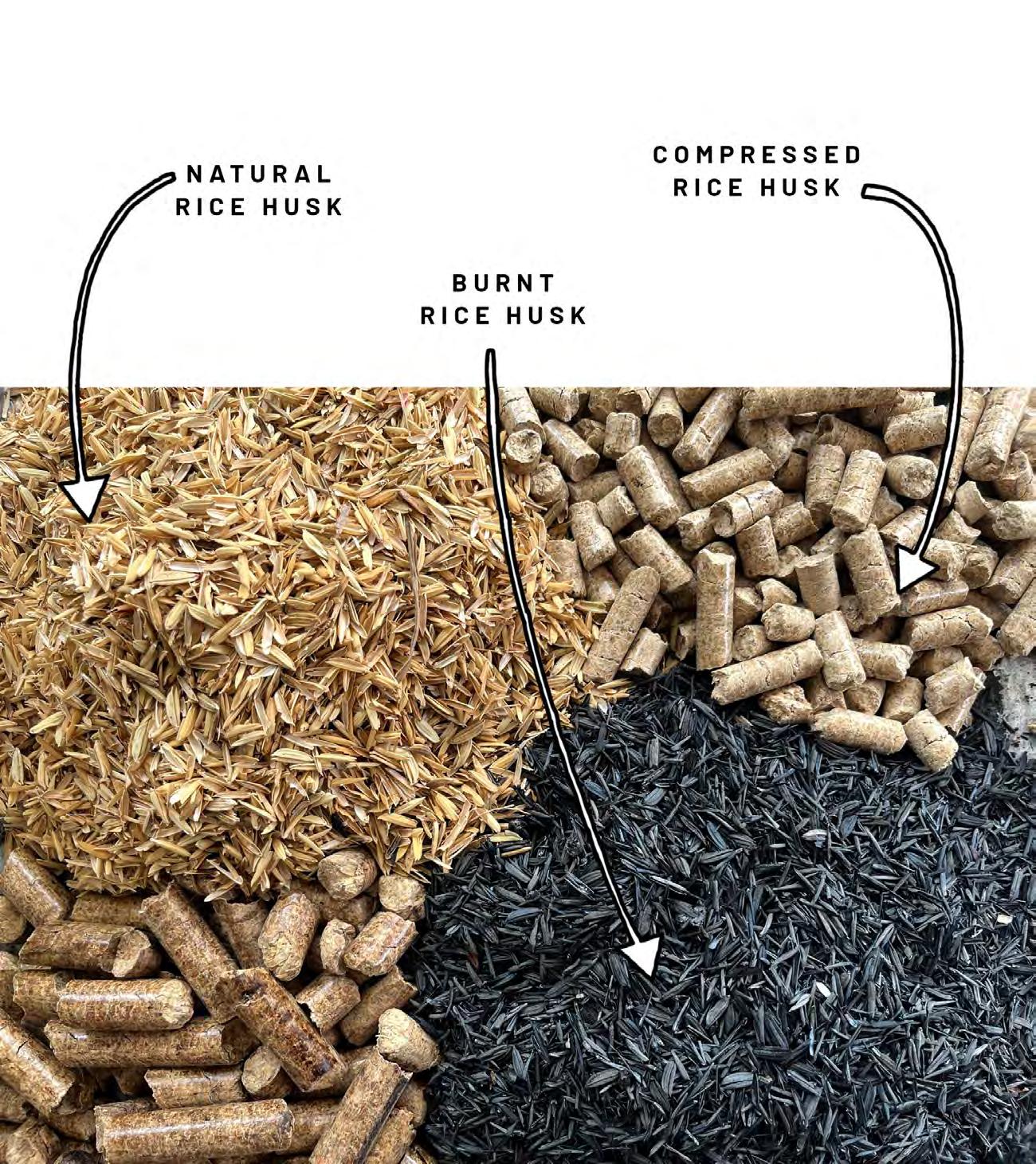
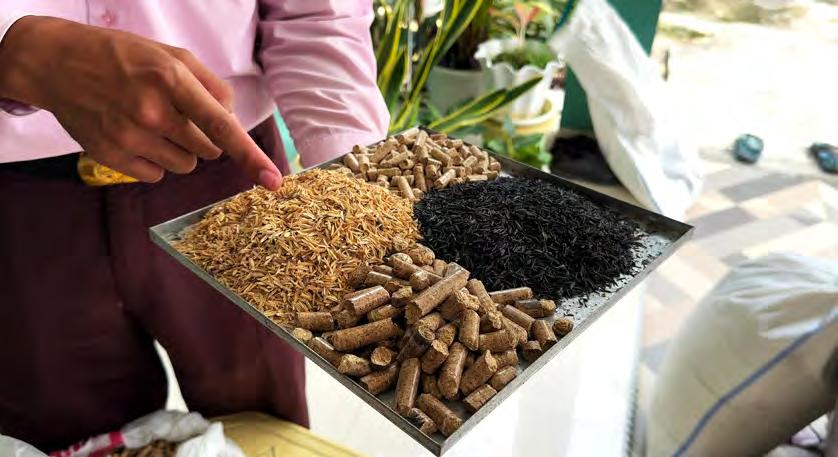

Adlan Fakhri
Adlan had prepared a banner for us, showcasing the collaboration
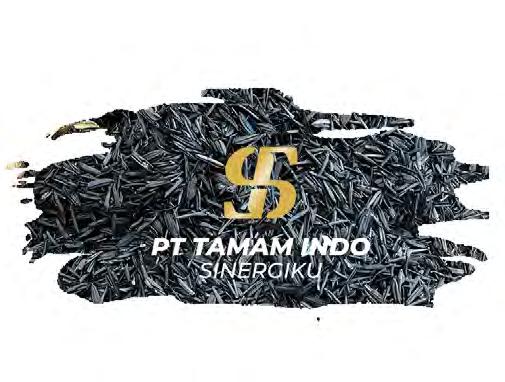
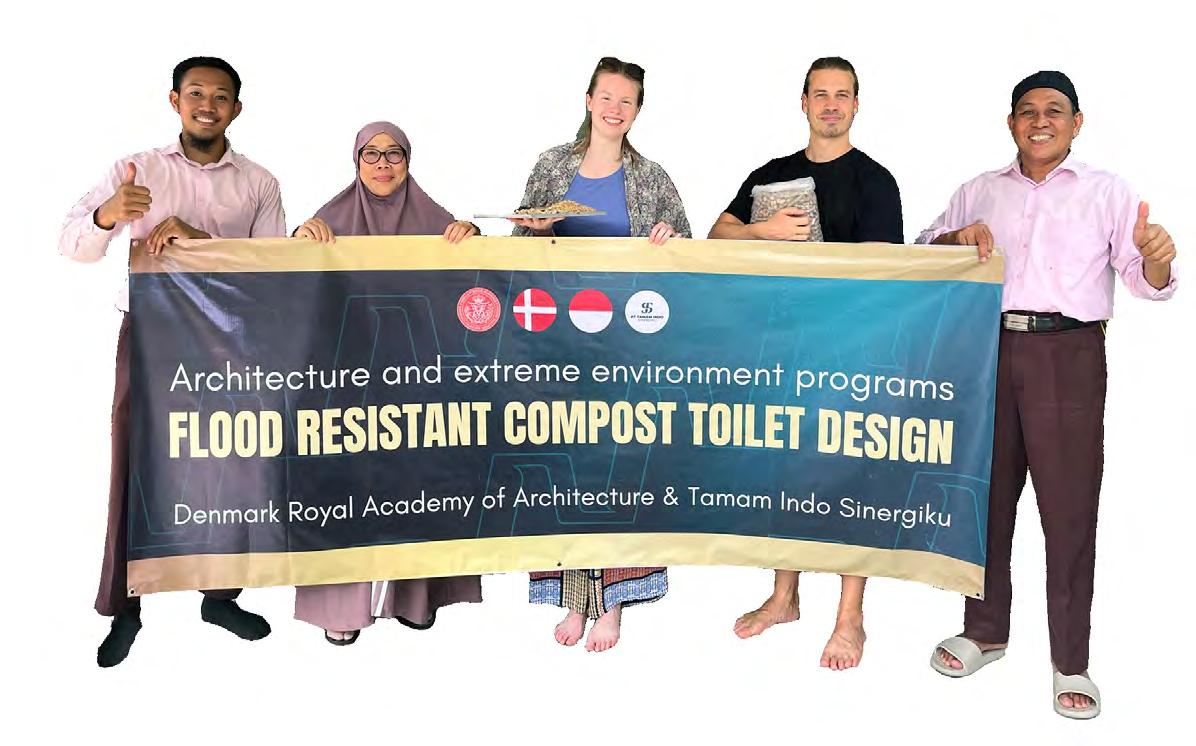
Adlan Fakhri and I were in contact before we went on the field trip. I had contacted him because I was looking for a rice husk supplier. Adlan’s company PT. Tamam Indo Sinergiku saw a potential in selling the waste product of the rice production on Java, which can be used as building materials, fertilizer, fuel, etc.
Rice husk is the shell of rice that is left when the rice is harvested. PT. Tamam Indo Sinergiku provides three different kinds of rice husk: natural, charcoal and in pallets. Adlan Fakhri was very interested in our project and therefore wanted to be our rice husk sponsor. We met with him and his family, who could translate for us. And he gifted us five big bags of the different kinds of rice husk to test in the composting toilet.
ALMA KOBER SØRENSEN KADK 33 ARCHITECTURE AND EXTREME ENVIRONMENTS
Meeting
Adlan Fakhri Mother
Alma Benjamin Father
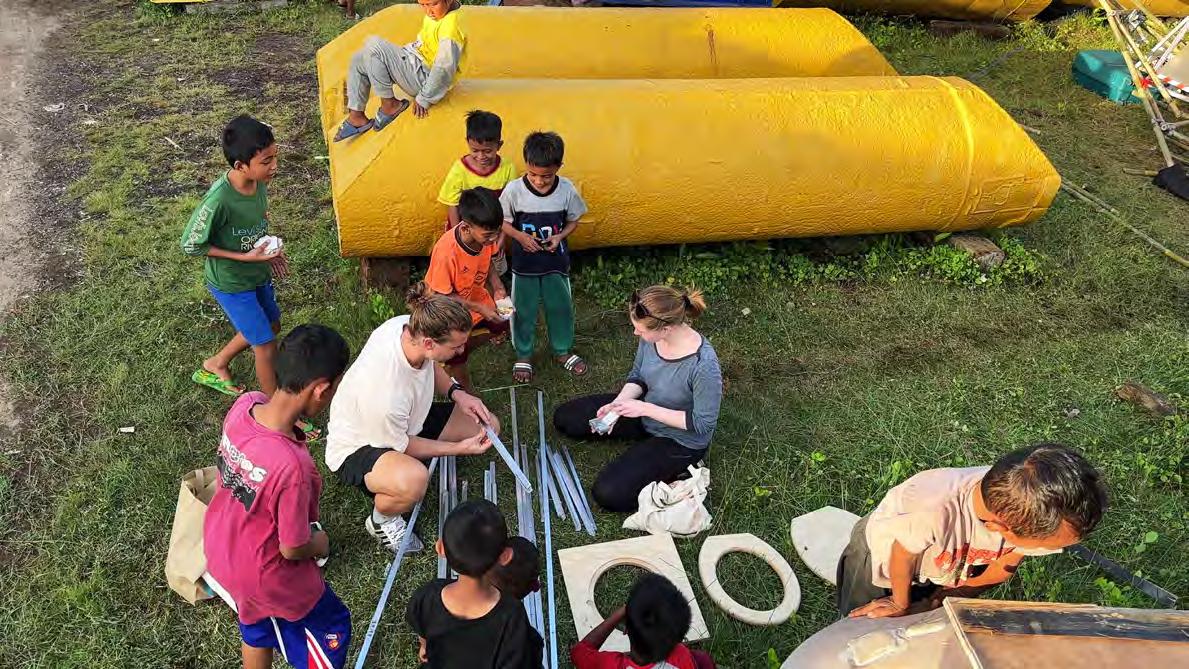
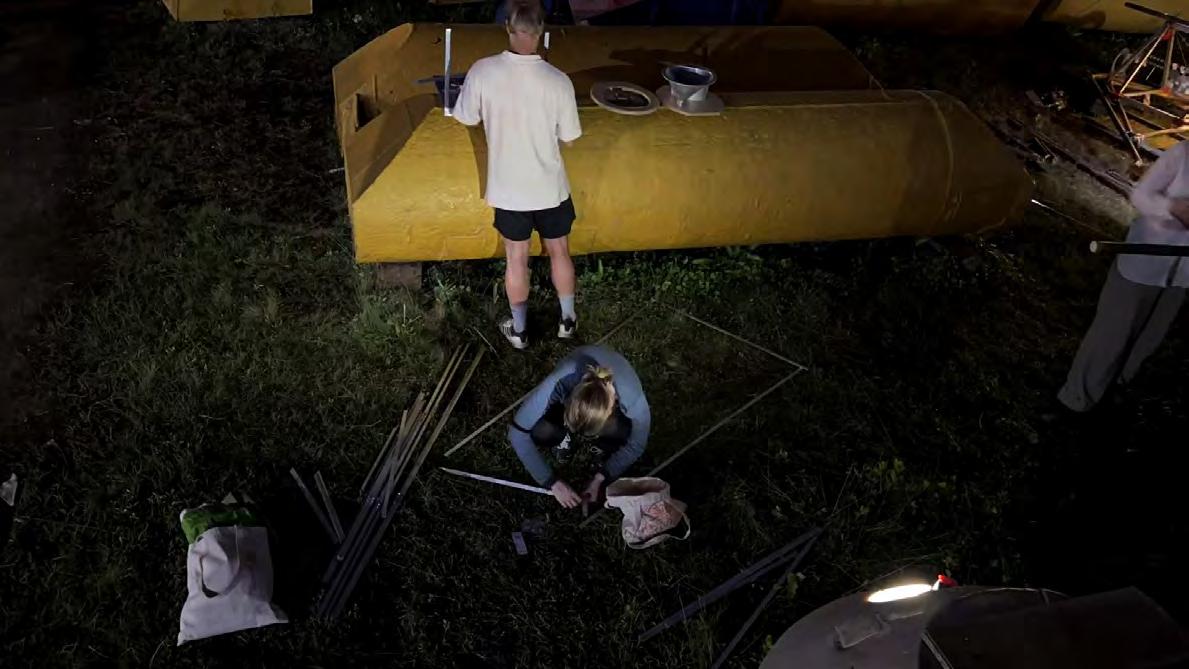
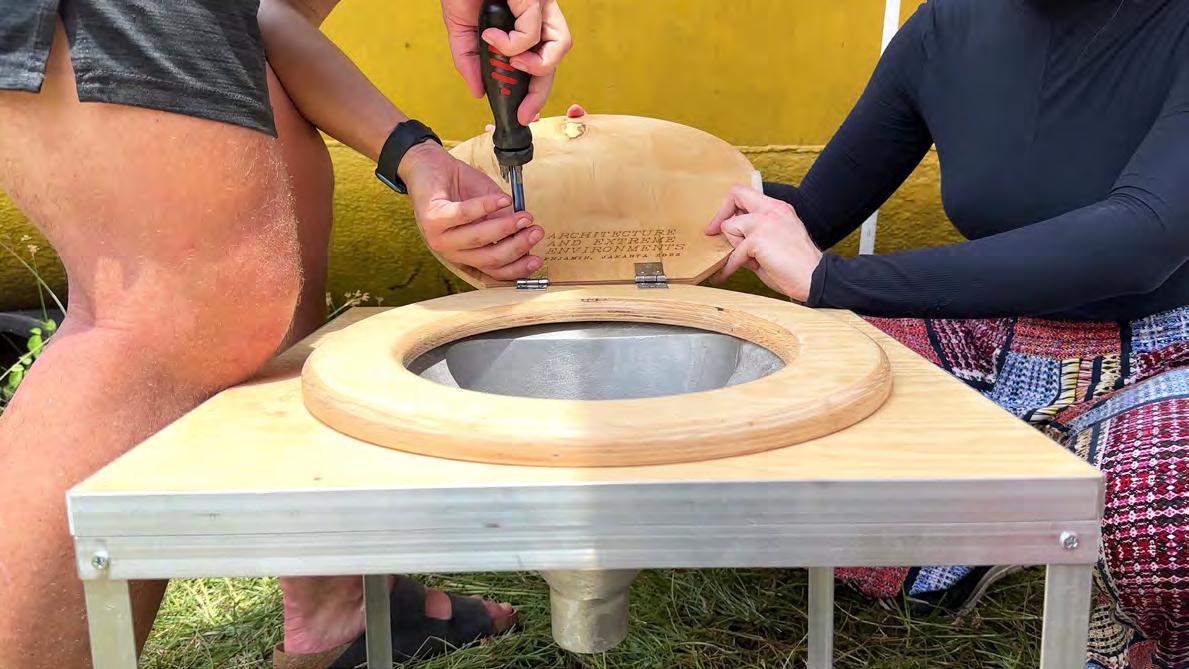
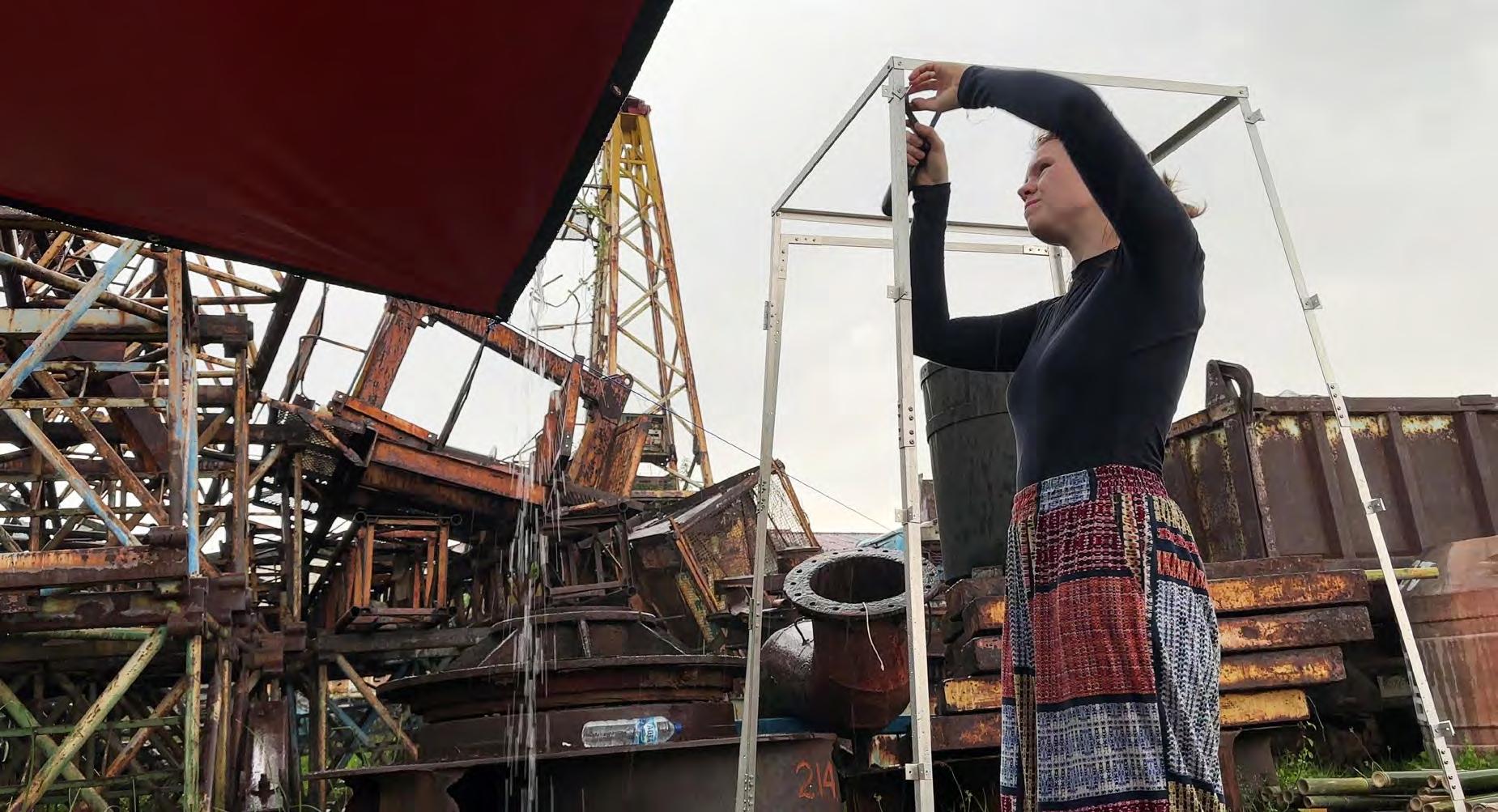
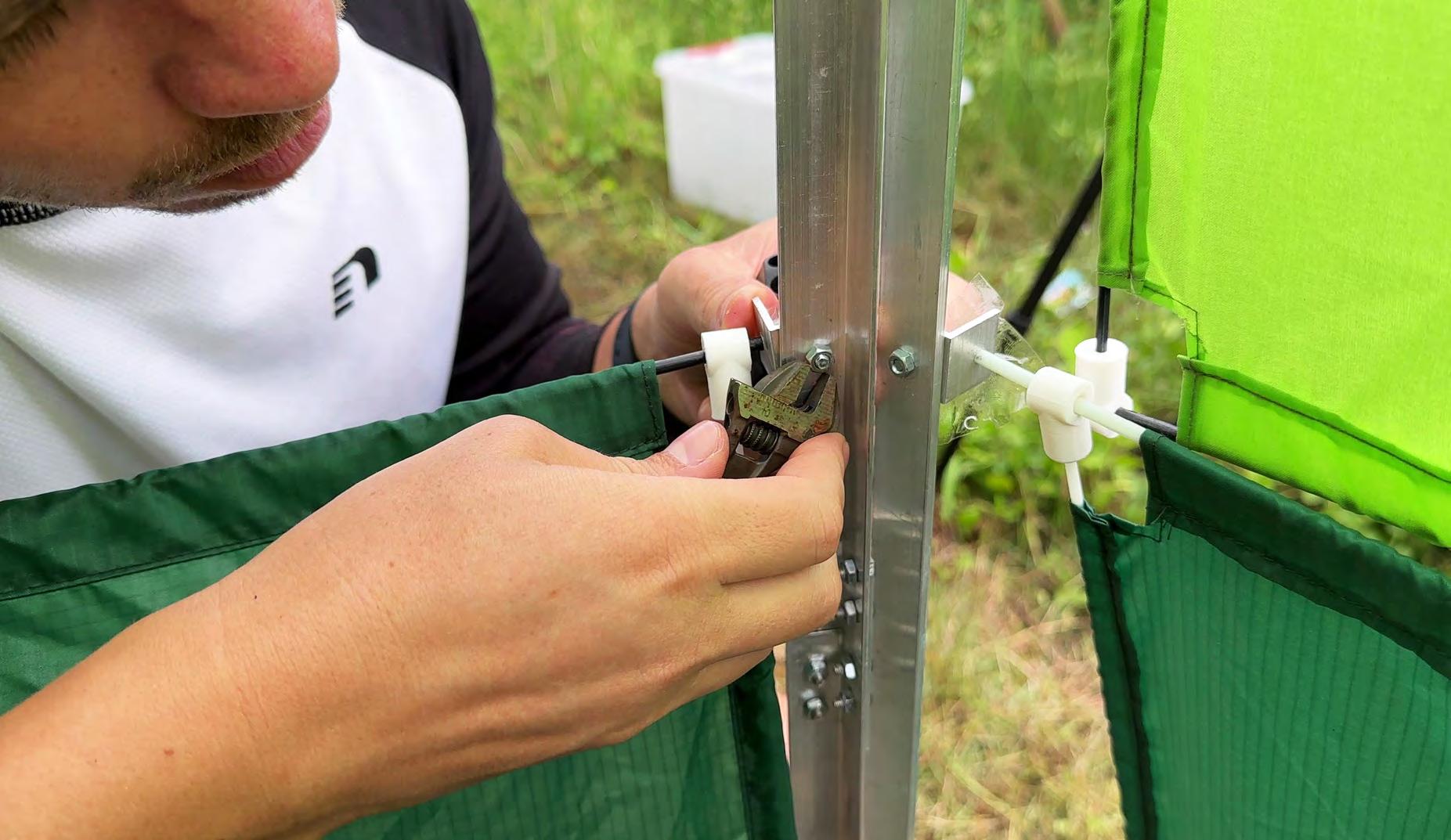
ALMA KOBER SØRENSEN KADK 34 ARCHITECTURE AND EXTREME ENVIRONMENTS Collecting the toilet on site
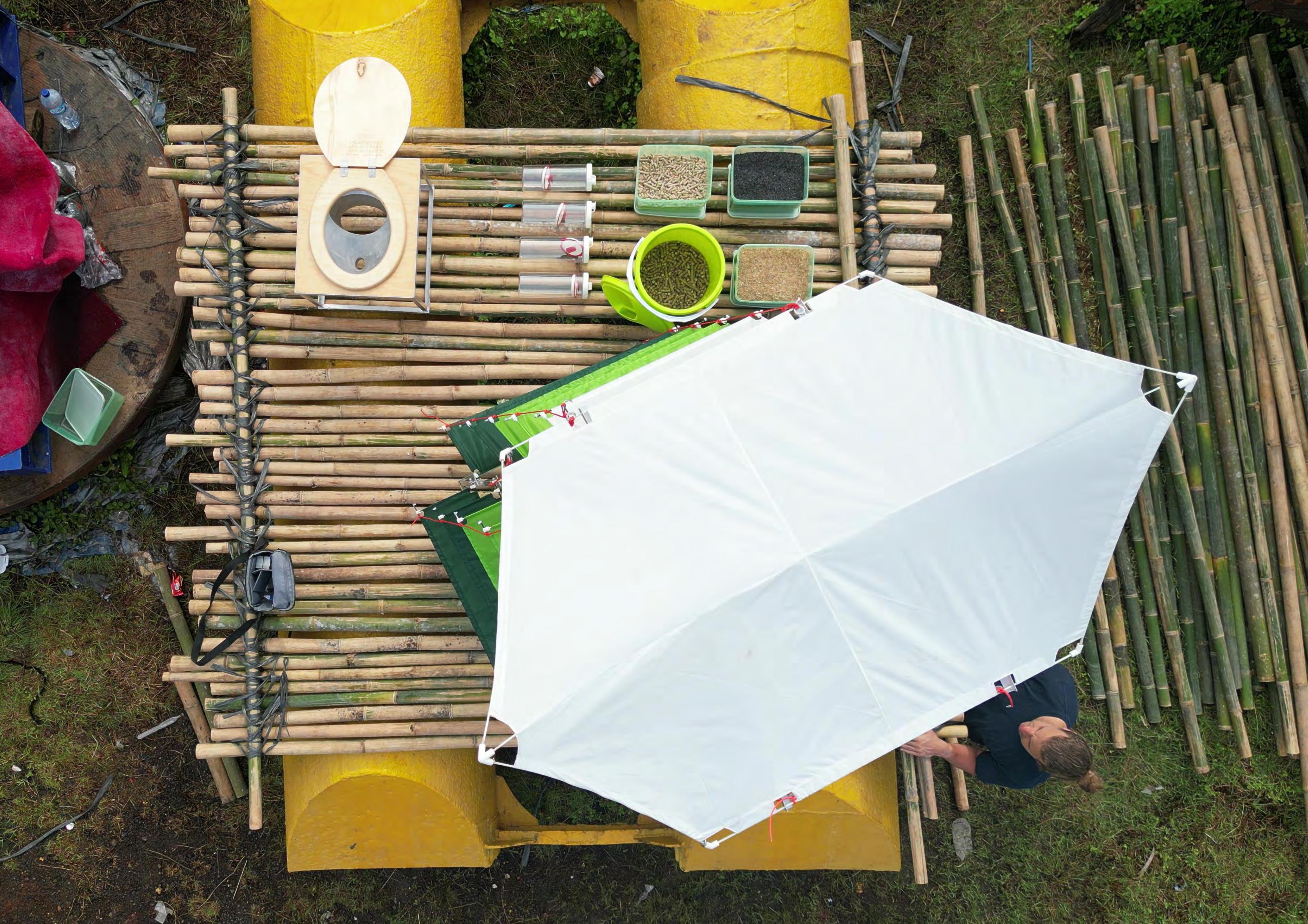
BUILDING | RAFT

Building the Flood Proof Bamboo Raft

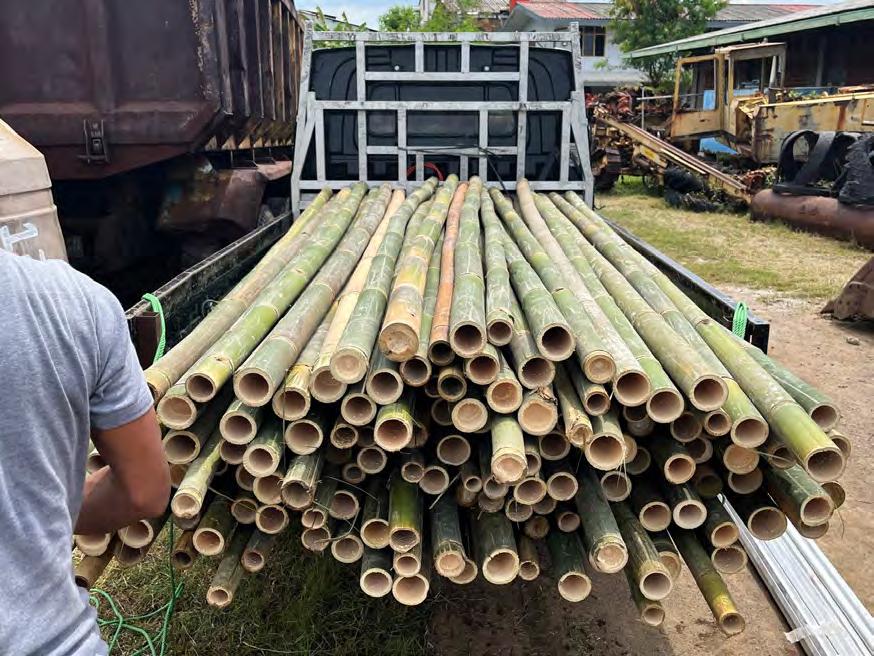

The raft was built on the site with local bamboo bought from a local supplier. The initial idea was the composting containers should also work as floating elements since both require air. After talking to the school’s engineer Daniel Lee had advised us to layer three squares of bamboo on top of each other, which would be enough to keep the toilet floating. His calculations turned out to be correct. We constructed the three layers. With the help of local kids, we transported the raft elements over the sea wall individually due to their heaviness. On the water, 2 meters above ground, they were stacked and tied together. Before the toilet was finished the kids use the raft to play on. After the fieldwork was done, the bamboo was given to a local man who had building plans with bamboo.
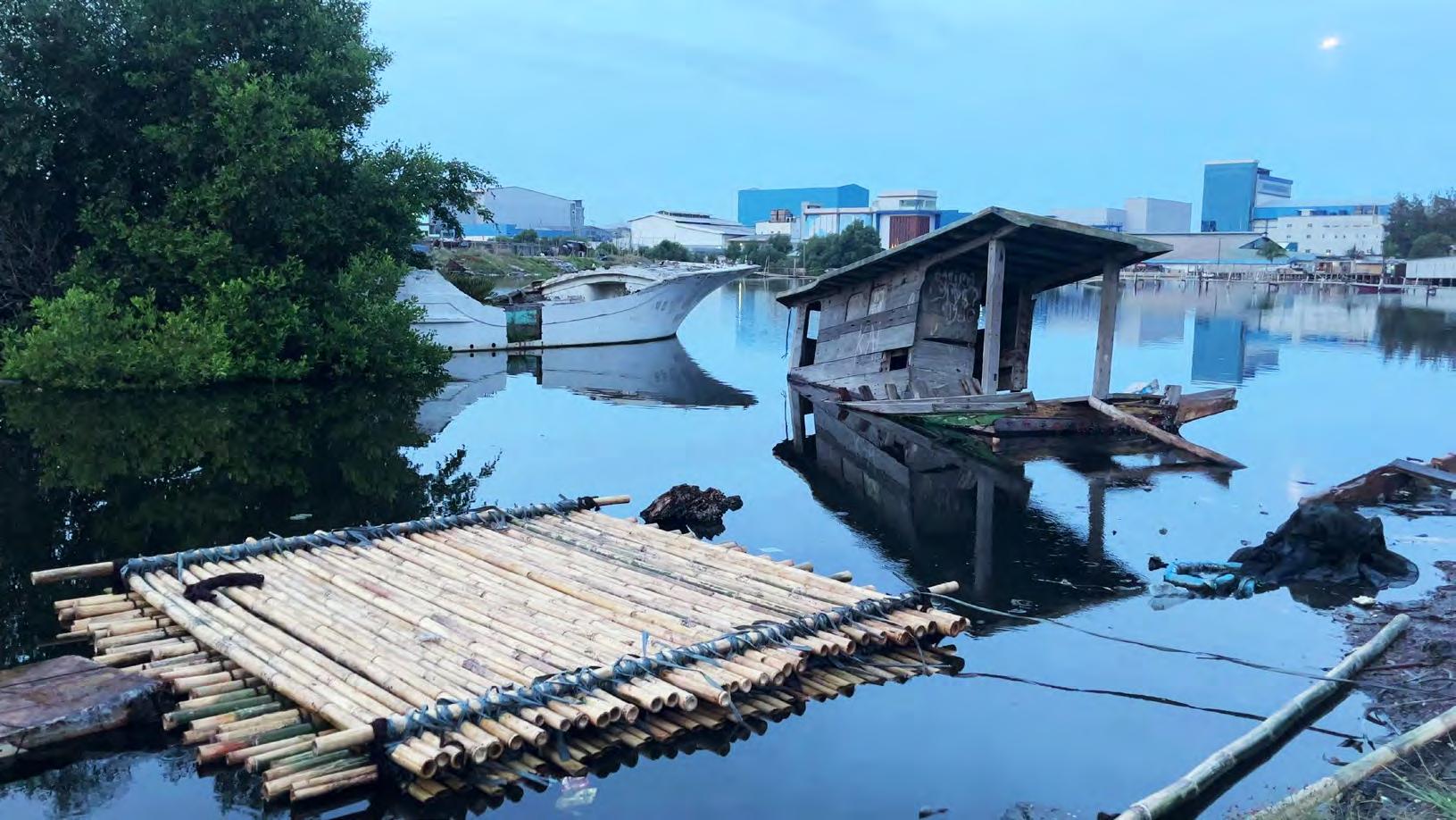
ALMA KOBER SØRENSEN KADK 36 ARCHITECTURE AND EXTREME ENVIRONMENTS
Sketch of floating raft with composting elements
Raft elements ready to be transported to the sea wall
Raft being sailed next to the existing toilets
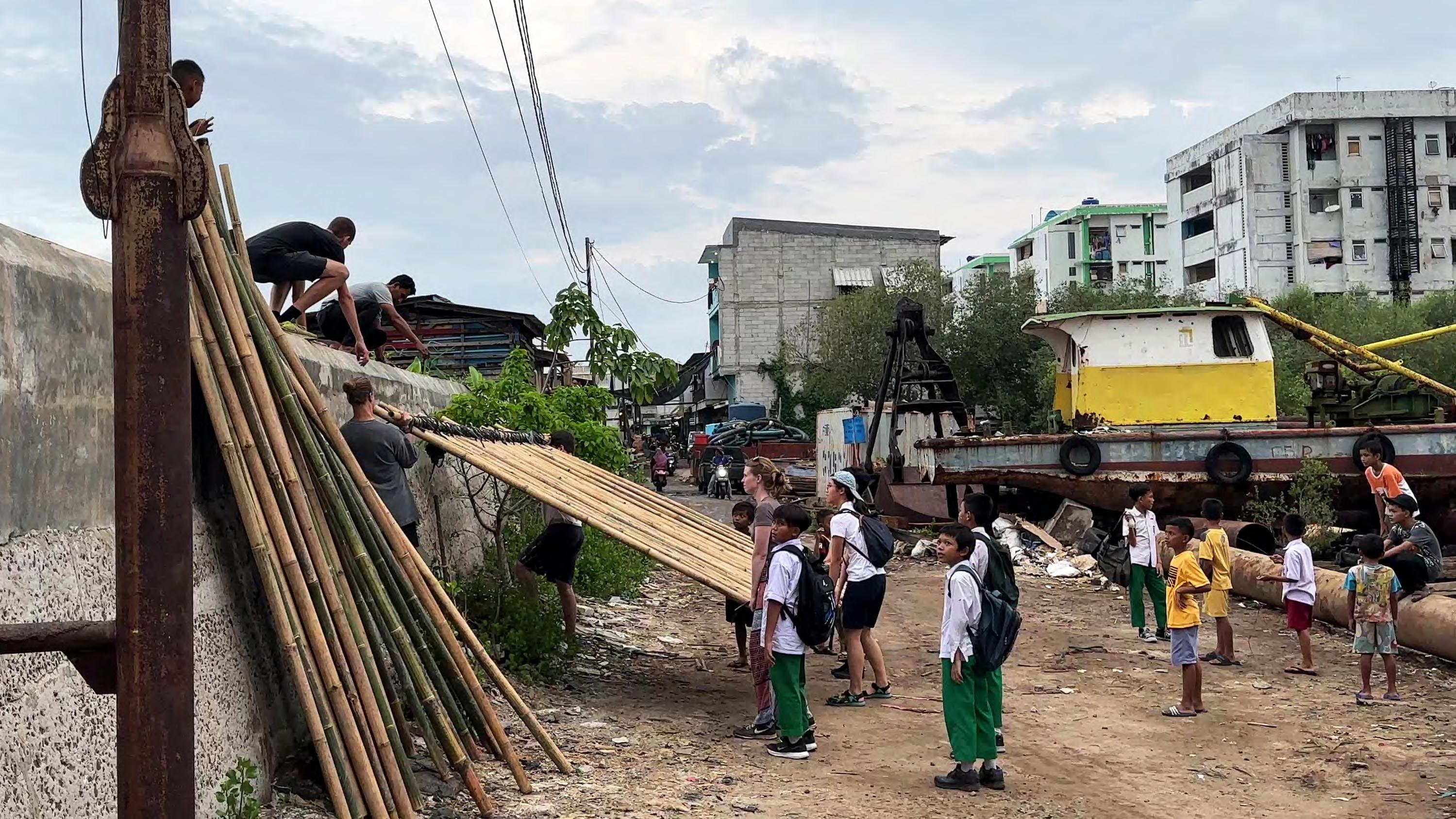
ALMA KOBER SØRENSEN KADK 37 ARCHITECTURE AND EXTREME ENVIRONMENTS
Raft elements being lifted over the sea wall

ALMA KOBER SØRENSEN KADK 38 ARCHITECTURE AND EXTREME ENVIRONMENTS
TEST RESULTS
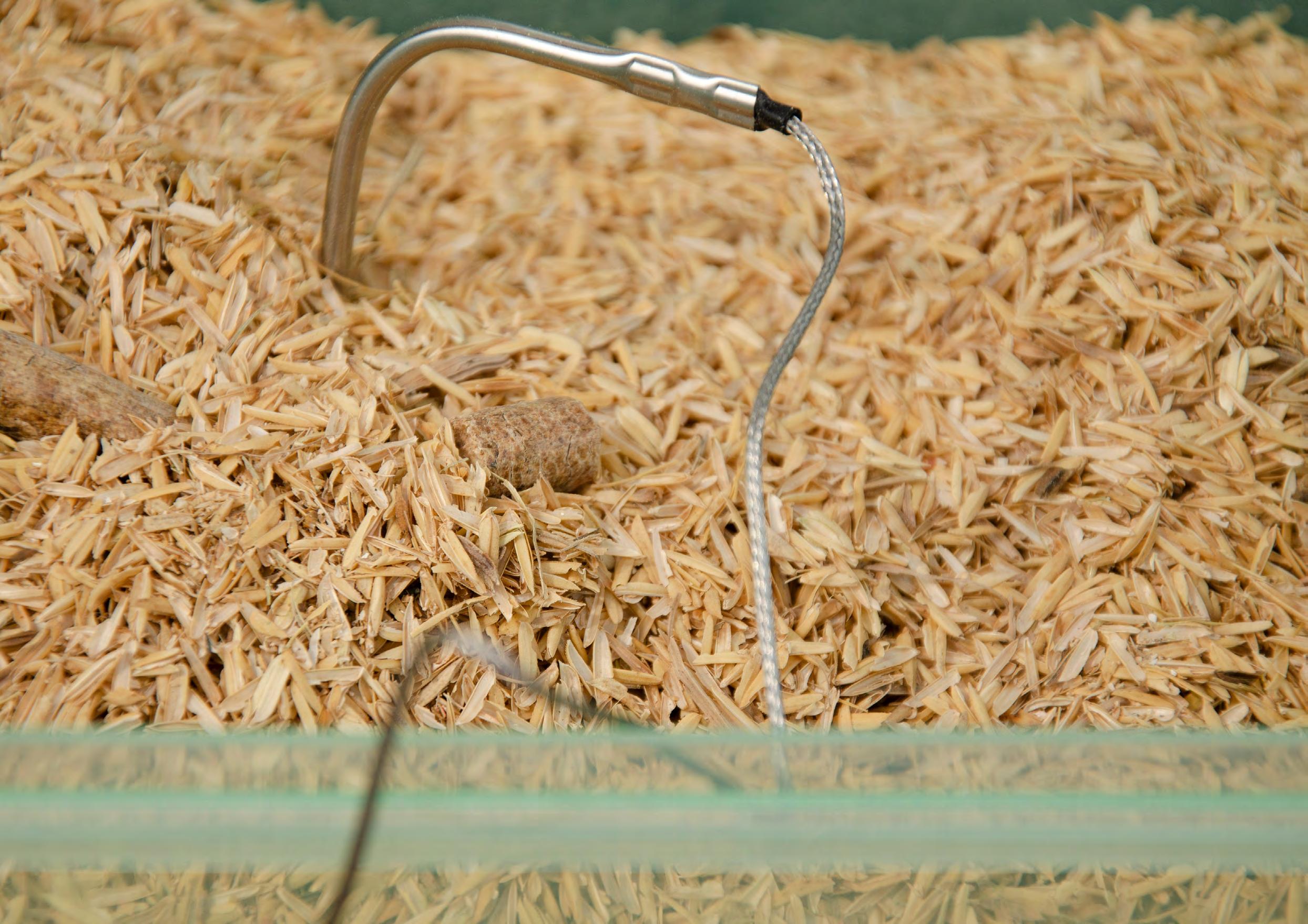


ALMA KOBER SØRENSEN KADK 40 ARCHITECTURE AND EXTREME ENVIRONMENTS
Urine Feces
RESULTS | TEST RESULTS
A Comparison between the different Rice Husks
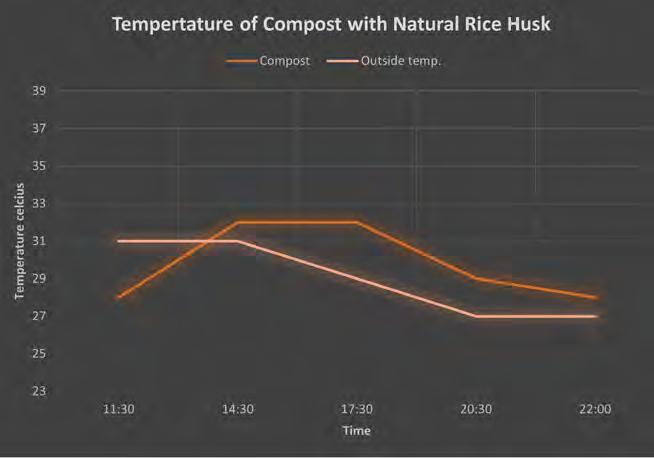
The result from the experiment do suggest the beginning of the elimination of pathogens in the compost with rice husk in Gedung Pompa in North Jakarta. A small temperature rise, in all the samples, suggest the presence of mesophiles bacteria, which is a good indicator that thermophilic bacteria will follow. The best result was seen in the composting sample with compressed rice husk on day 2, with an increase of 6°C to 37°C. This is not a high enough temperature rise to have killed the pathogens, according to the graph by Jenkins, however it is a good start.
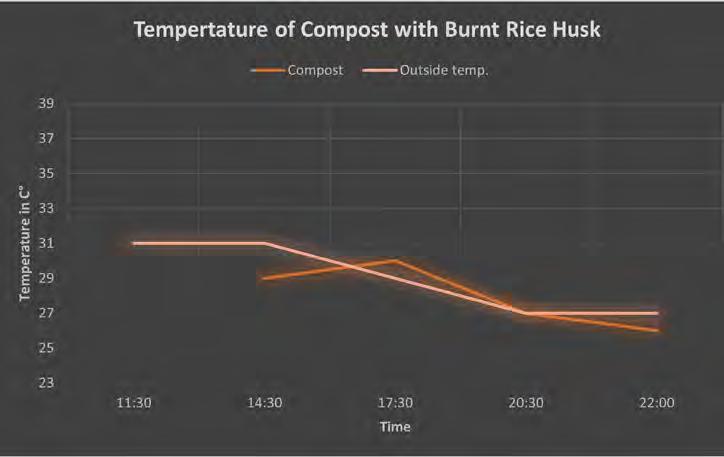
It indicates that a longer timespan would have allowed a bigger temperature rise. A bigger sample would also have improved the results. The bigger the sample/pile the more heat can be generated at the core. The short length of the trip and the limitations in size of the prototype did not allow for this in the experiment. Composting toilets have the potential of creating a healthier and safer sanitation option for the locals of Gedung Pompa, as well as creating a valuable resource in form of soil in the long run.
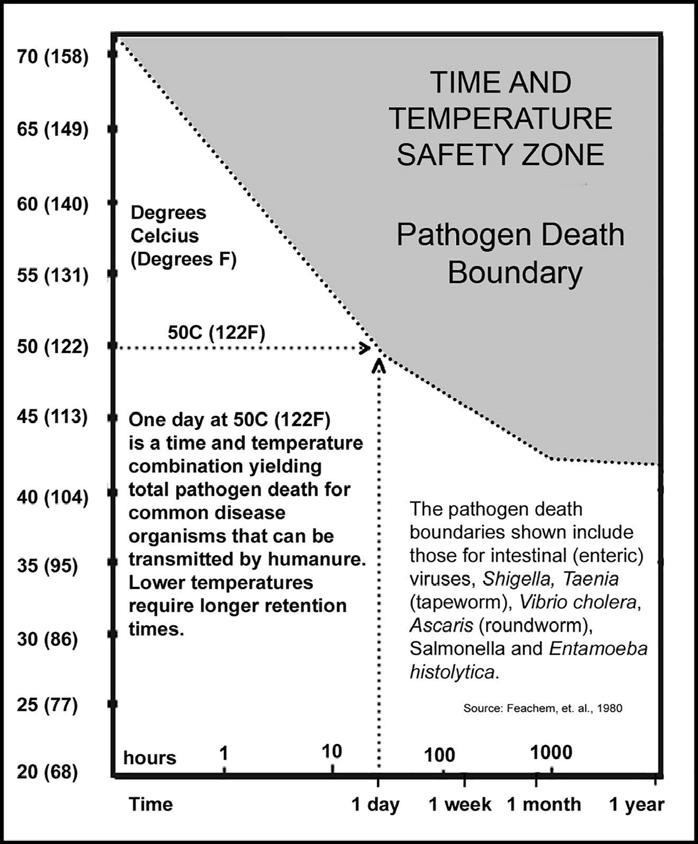
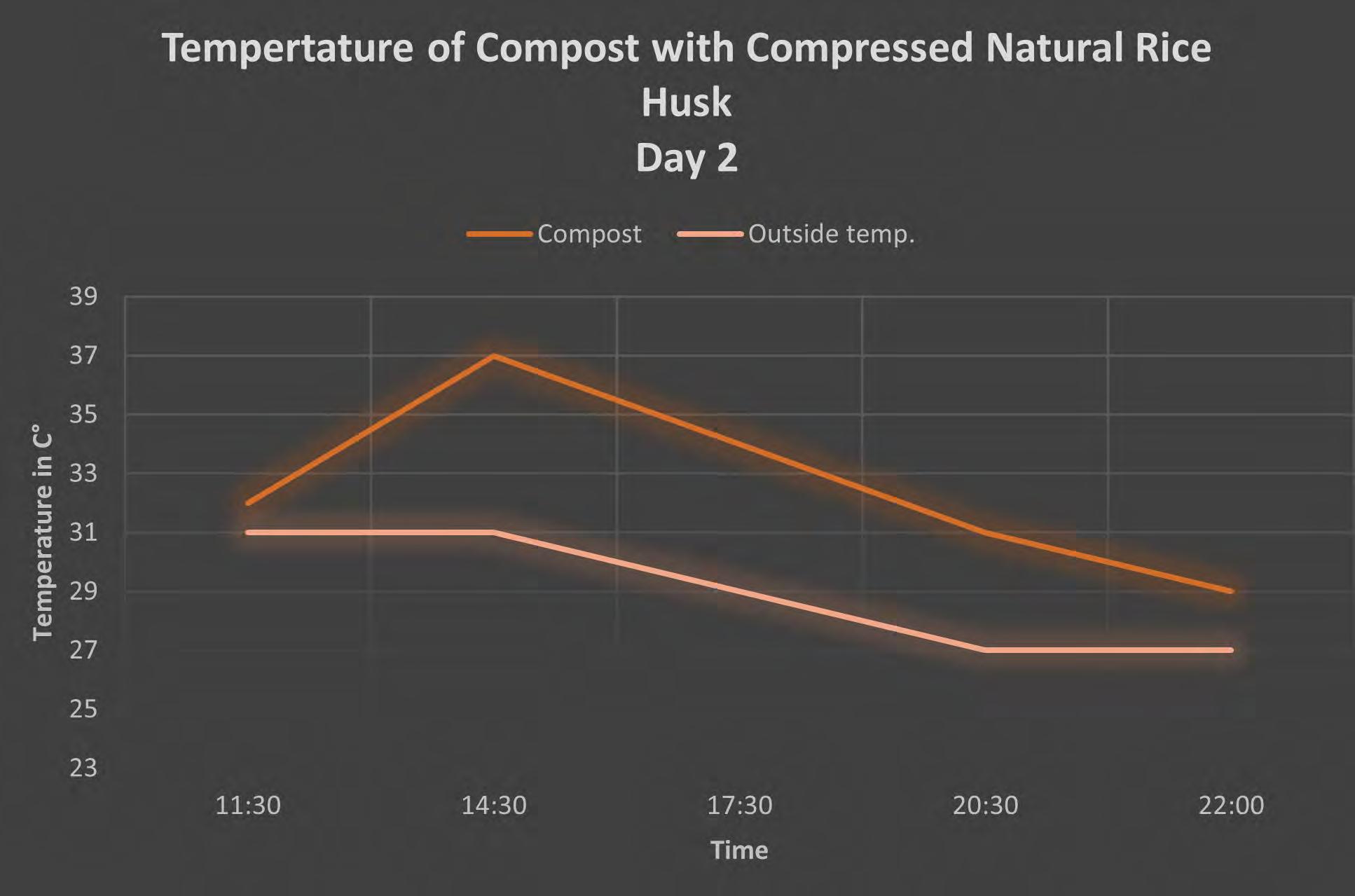

ALMA KOBER SØRENSEN KADK 41 ARCHITECTURE AND EXTREME ENVIRONMENTS
Jenkins, J. C. (2019). The Humanure Handbook, Fourth Edition Shit in a Nutshell. 143 Forest Lane, Grove City, PA 16127 USA: Joseph Jenkins, Inc.
Comparison of temperature with different Rice Husk
Outside temperature
Natural Rice Husk
Compressed Rice Husk (Day 2)
Rice Husk Charcoal
ALMA KOBER SØRENSEN KADK 42 ARCHITECTURE AND EXTREME ENVIRONMENTS 37 °C 33 °C 29 °C 25 °C 11:30 14:30 17:30 20:30 22:00
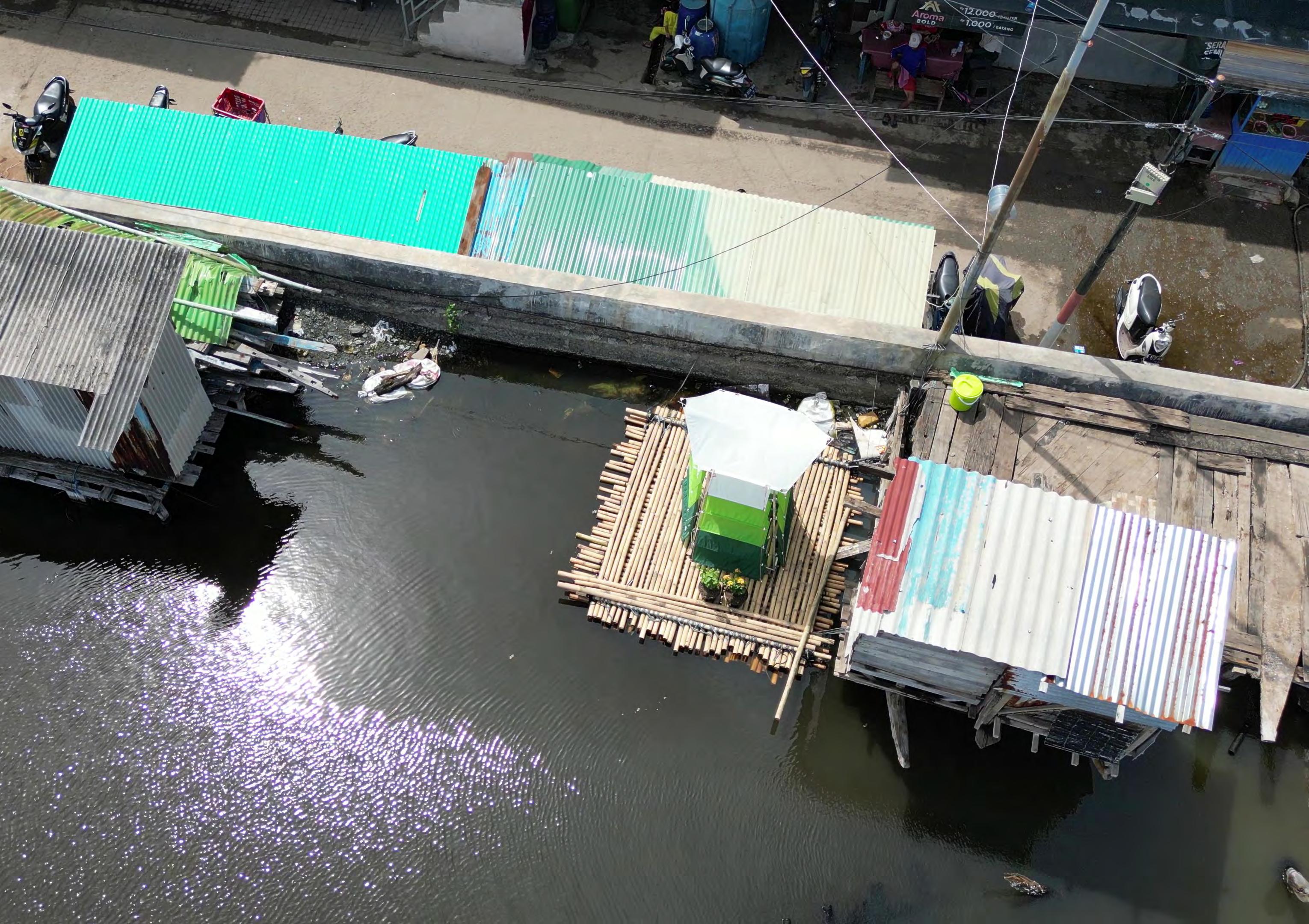
REFLECTIONS AND POTENTIALS
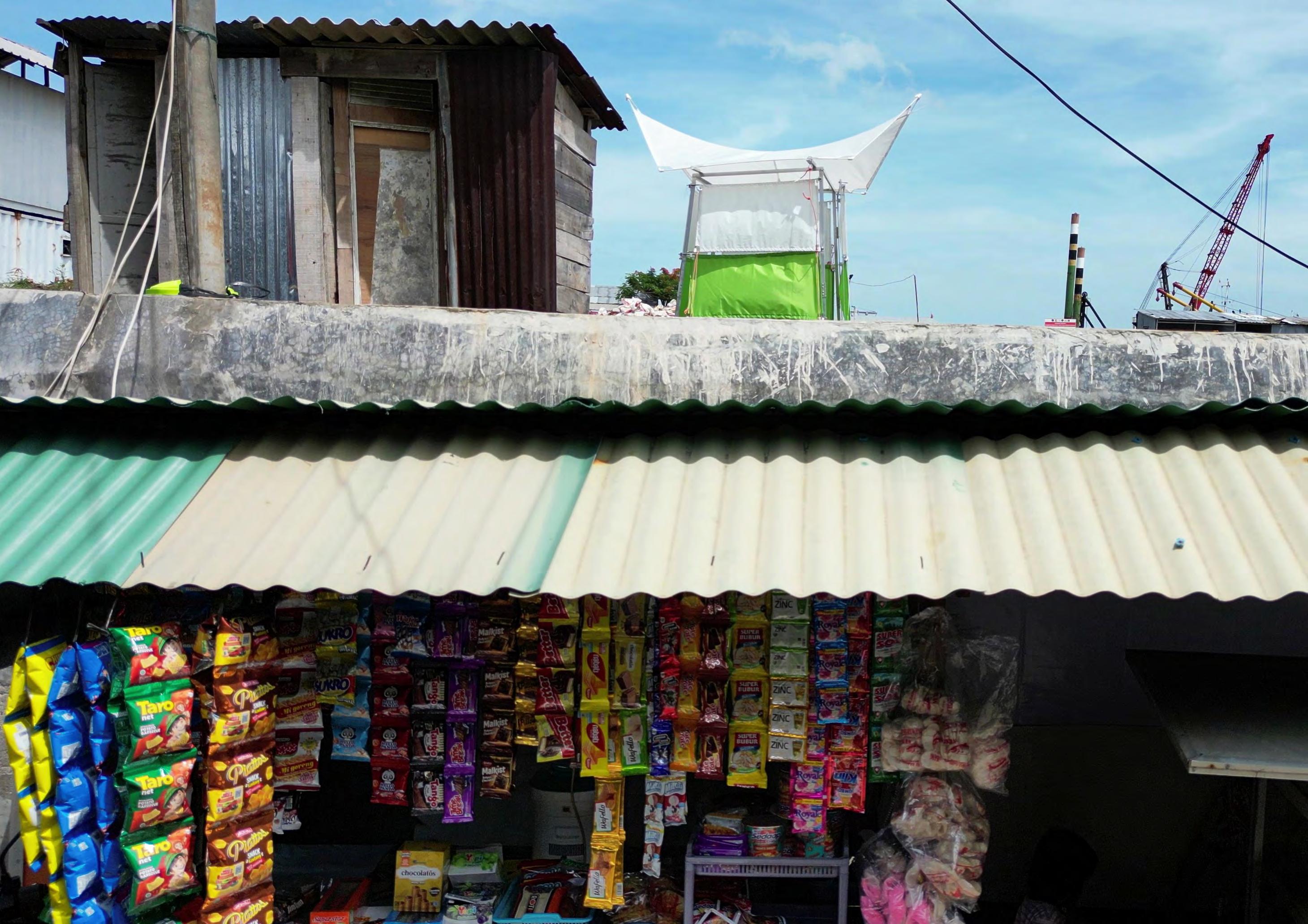
REFLECTION | CULTURAL DIFFERENCES
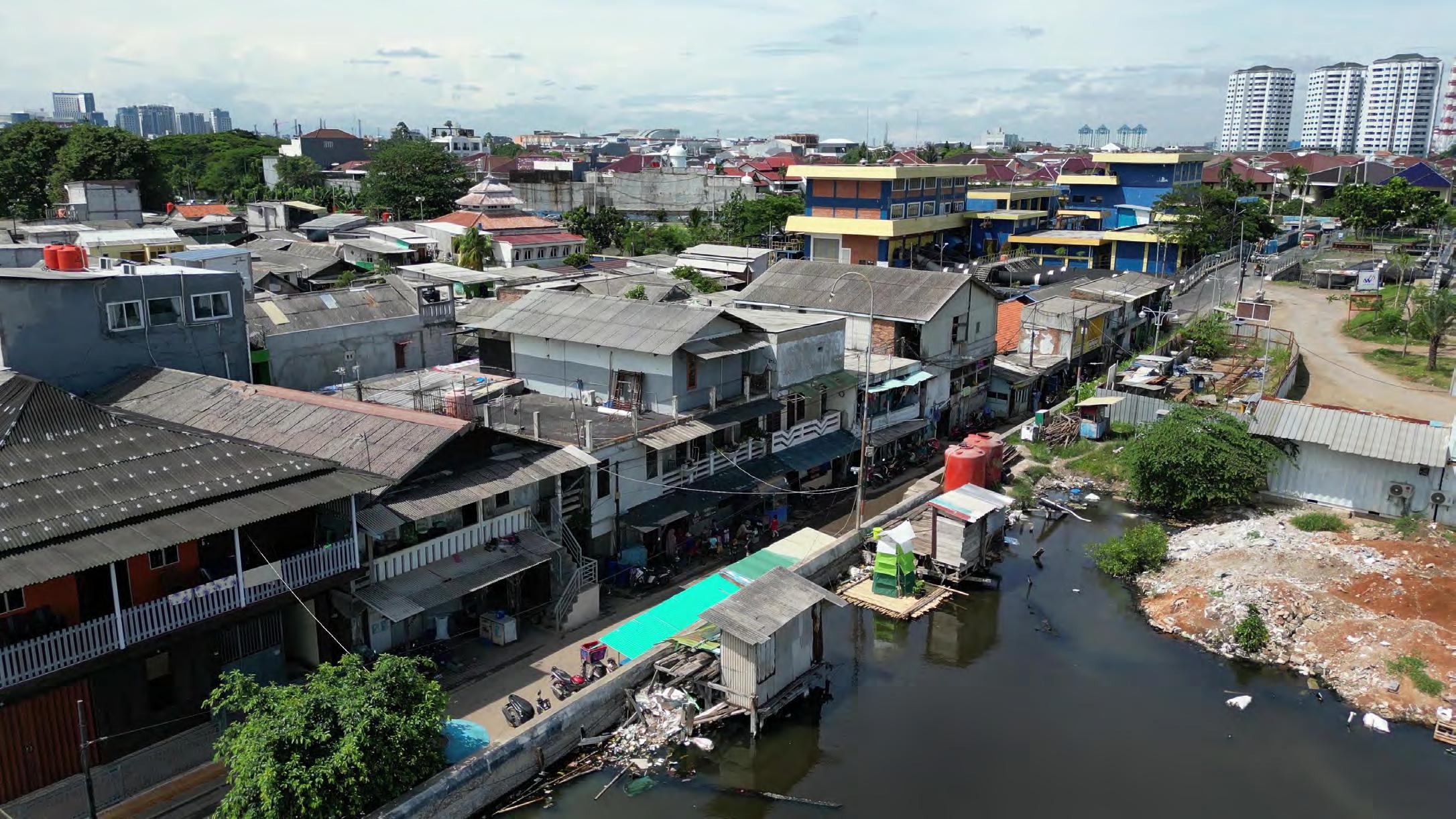
The use of Water
The cultural difference in toilet uses turned out to have a greater impact on the experiment than expected. The use of water to clean oneself was not designed into the prototype, resulting in a skepticism from the locals, since that is their preferred method. After explaining how the toilet works more and more where willing to test the toilet. For future work water must be a part of the composting toilet. Potentially the water is absorbed into the compost and runs off as wastewater. This water could be used as fertilizer. There are possibilities.
ALMA KOBER SØRENSEN KADK 45 ARCHITECTURE AND EXTREME ENVIRONMENTS
REFLECTION | PRELIMINARY ARCHITECURAL PROGRAM
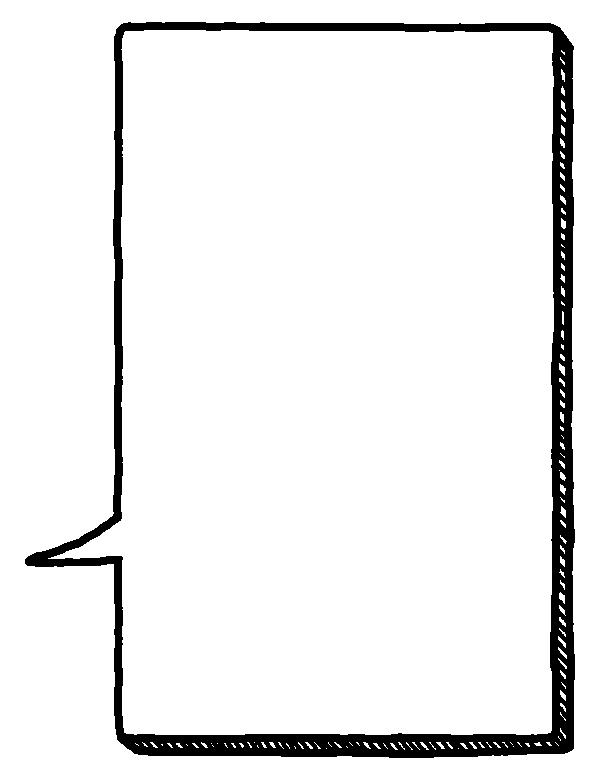
Permaculture: From Waste to Income

Gedung Pompa needs better sanitation facilities. The potentials of composting toilets with Rice Husk are very promising. Two waste materials can be combined to create a resource for the community. There is a big economic different between the kampungs (communities/villages of Jakarta) and the modern parts of Indonesia’s capital. For the preliminary architectural program, I would like to explore this economical difference further. Is it possible to turn one of the most health threatening waste materials into an income for the kampungs?
IS IT POSSIBLE TO TURN WASTE INTO AN INCOME ?
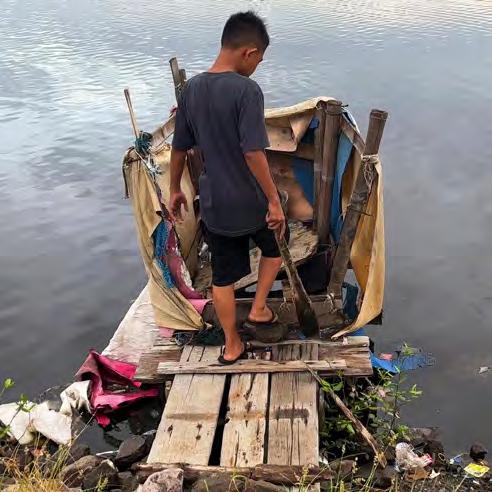

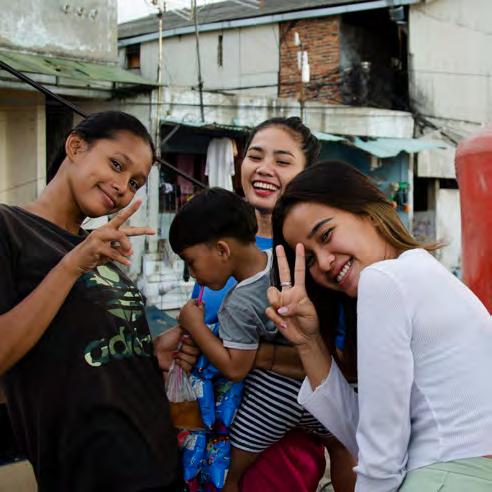
VEGETABLES WISHES FROM LOCALS:
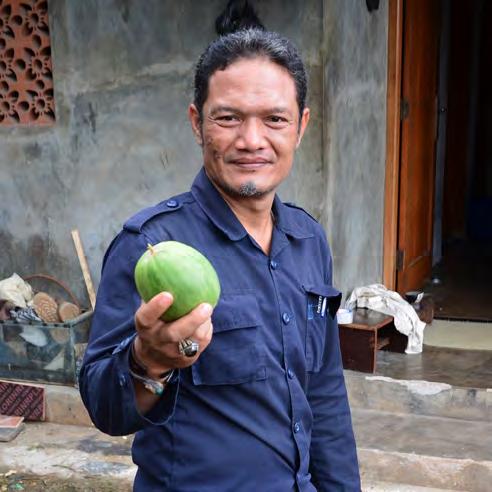
- KANG KUNG
- PARE
- CUCUMBER
- PAREK
- JASMIN
- BANANA LEAVES FOR PACKAGING
ALMA KOBER SØRENSEN KADK 46 ARCHITECTURE AND EXTREME ENVIRONMENTS
LACK SANITATION ECONOMICAL DIFFERENCE IN/OUSIDE OF KAMPUNG STRONG COMMUNITY LOCAL SKILLS
- CORN - TOMATO - CHILI - LEMON - GINGER - KEMANGI - JAMBU
Jiwan Toro SS grows his own vegetables in Gedung Pompa
REFLECTION | PRELIMINARY ARCHITECURAL PROGRAM
Parmaculture: From Waste to Income
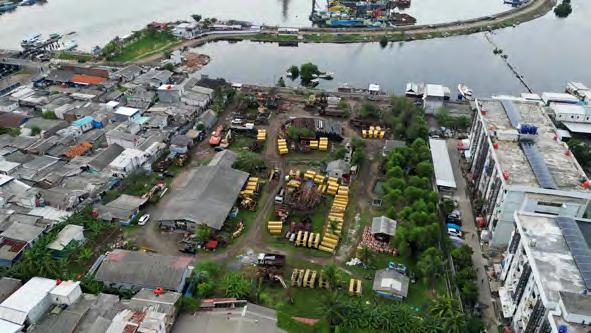

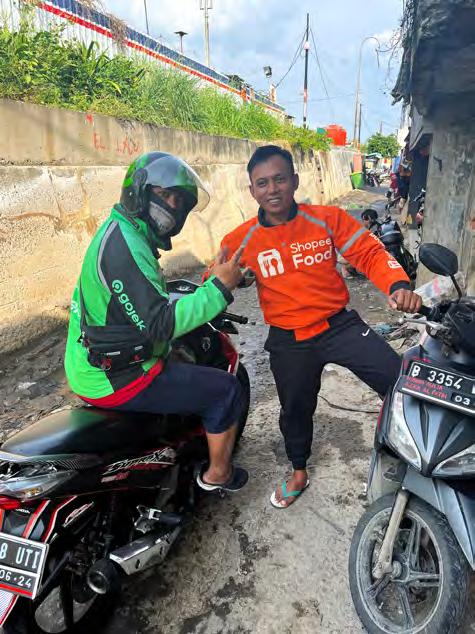
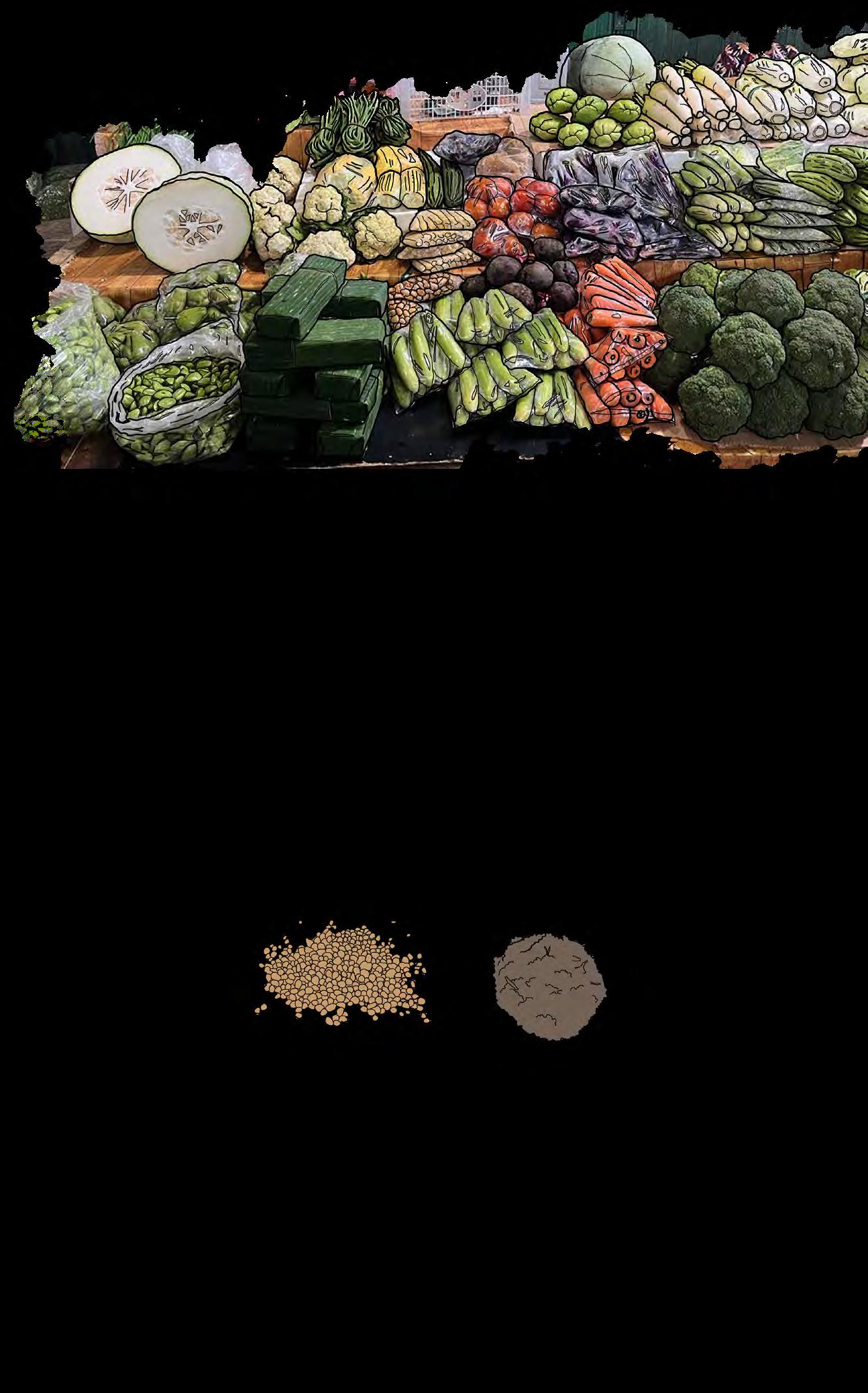
Permaculture work as a closed system seen in the natural environment. It engages the nature, the people, and the resources.
Gedung Pompa has a lot of land, which is used for storage of old rusty cranes and as a workshop for restoring boats. The space can be rearranged to fit both the old functions as well as a permaculture growing on a sanitation system of compost. The program develops over multiple years, starting with the implementation of the sanitation system. After a year when the first compost is done, fruits and vegetable will be planted. These will also need a year for being ripe. Slowly over a couple of years a whole market with vegetables and fruits is developed. In Gedung Pompa there are multiple food delivery drivers on scooters working for various companies. The harvest will be delivered to various restaurants around the city. Now the local vegetable sellers get their vegetable from 3 hours away for Jakarta. These can now be grown locally and sold within the city. This creates an economical connection between the impoverished and the richer parts of Jakarta, hopefully acquiring more income to the kampung. Not only is this a great resource for the locals, the green garden and the fresh soil allows for more water being absorbed into the ground during flooding.
2 YEARS


1.5 YEARS

ALMA KOBER SØRENSEN KADK 47 ARCHITECTURE AND EXTREME ENVIRONMENTS FERTILIZER PLANTS VEGETABLES FOR MARKET SOIL COMPOSTING TOILETS SANITATION FACILITIES
DAY
1
1 YEAR
This woman from the local market gets her vegetables 3 hours away from Jakarta
This woman from the local market gets her vegetables 3 hours away from Jakarta
The Indonesian rice terraces are very biodiverse. The terrace system allows nutrients to be spread and works as a water buffer during heavy rain seasons. The permaculture will take inspiration in this system of vertical plantation. In the long run the sanitation permaculture could spread around the city creating green hills, which could be used as an elevated protection area during flooding.
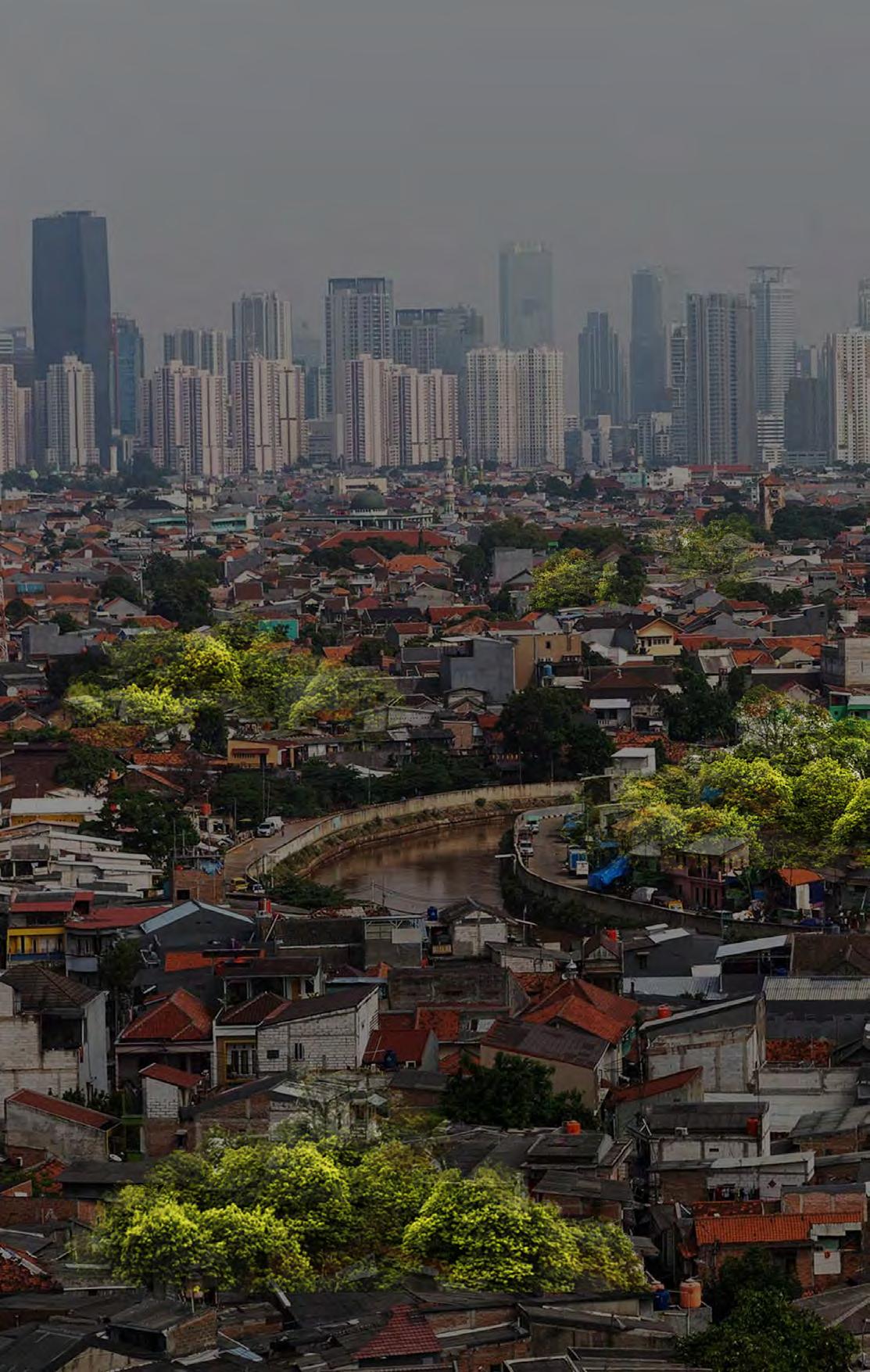
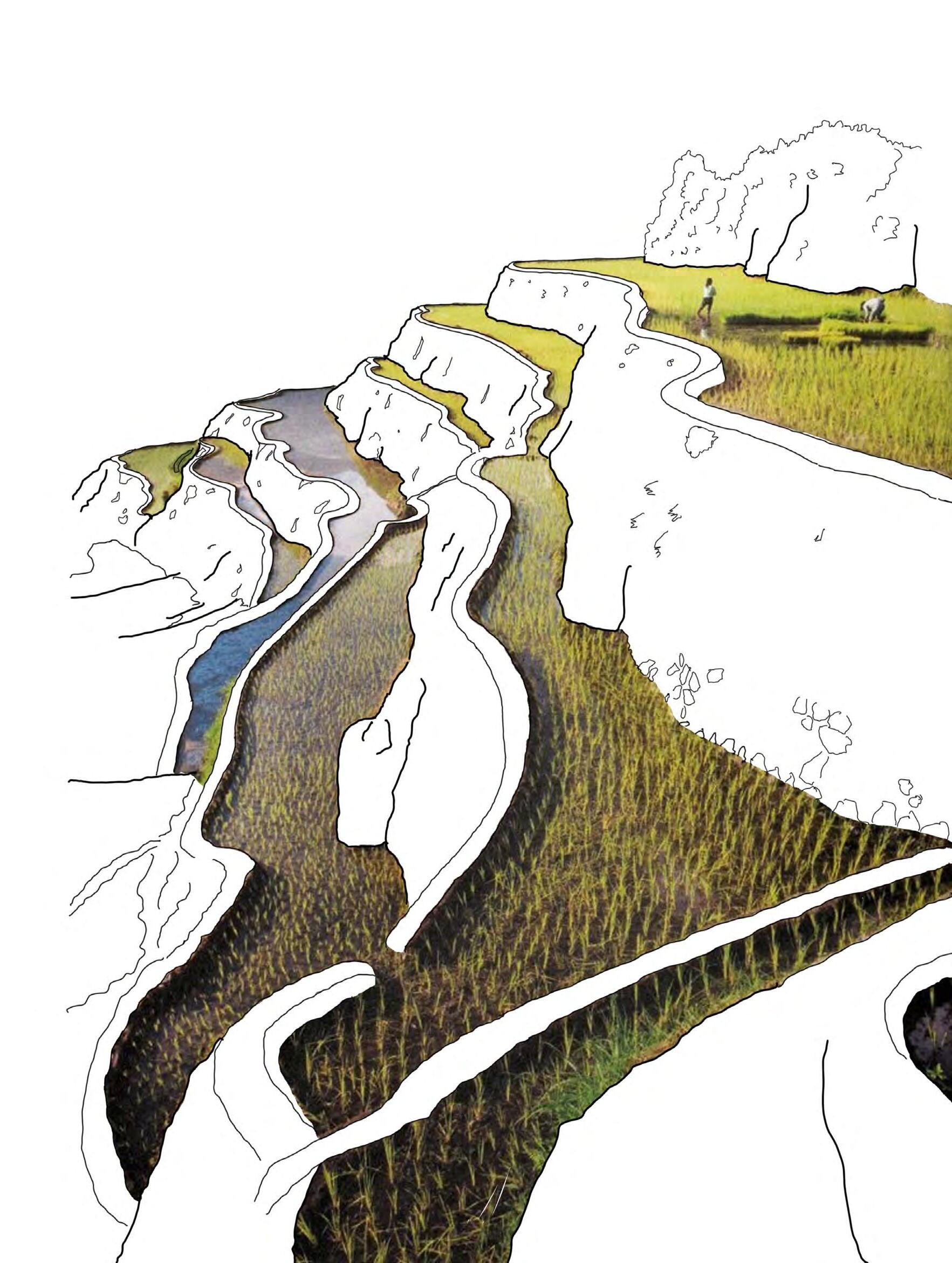 Permaculture and Rice Terraces
Permaculture and Rice Terraces
PRODUCTION | MOVIE
Making a 3-minute movie of the prototype in Jakarta
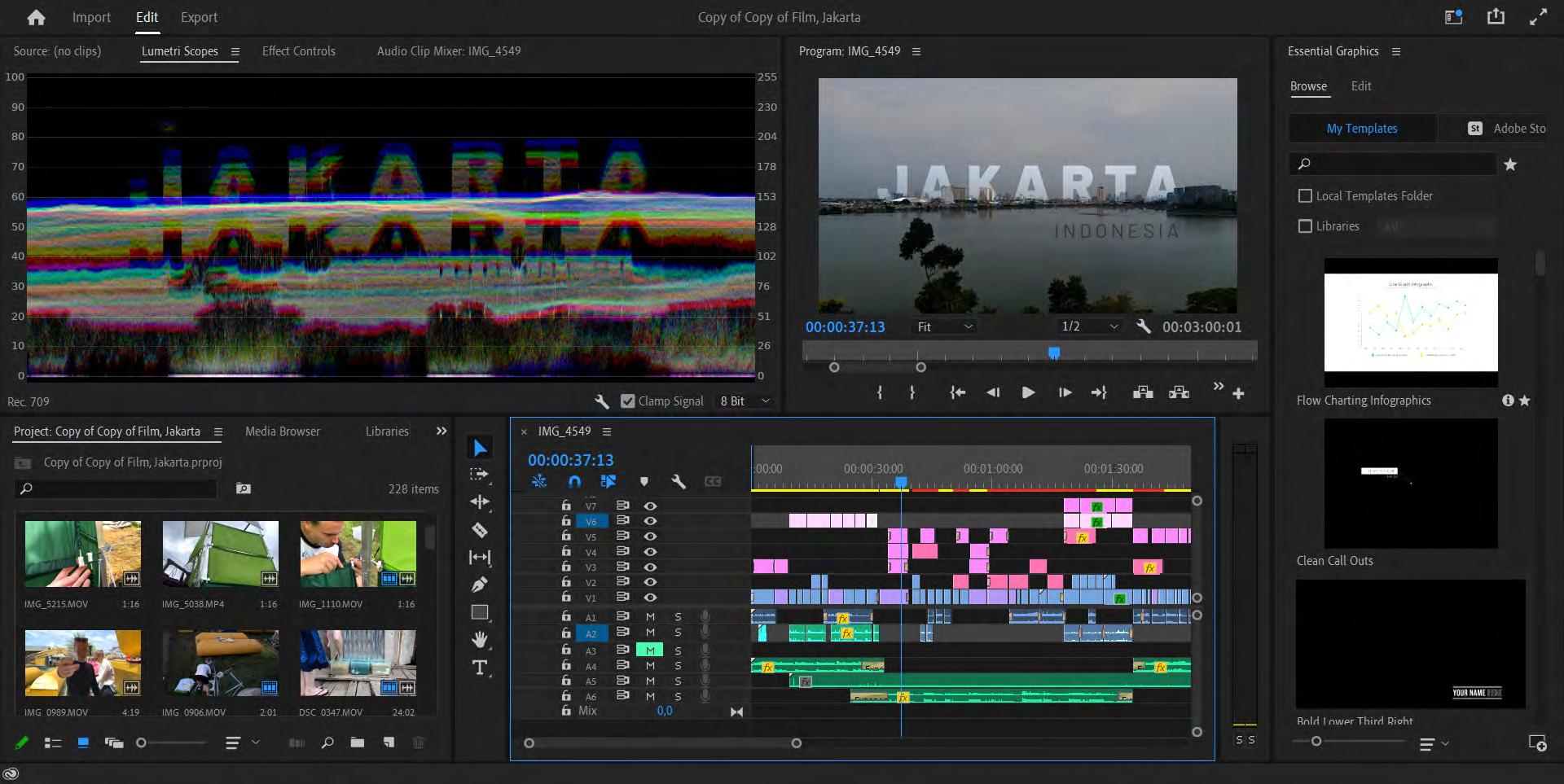
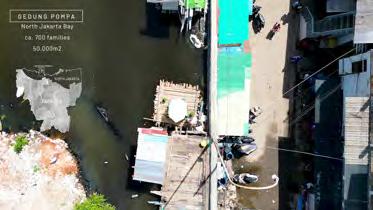

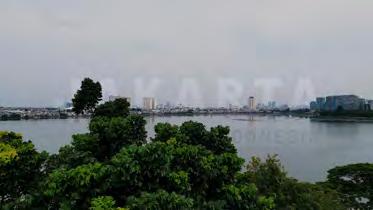
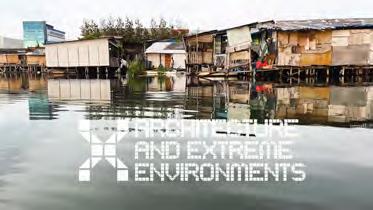
As a finalization of the 1st semester, every student makes a 3-minute video of the prototype. The movie includes the problem the prototypes try to create a solution for as well as building process and interviews.
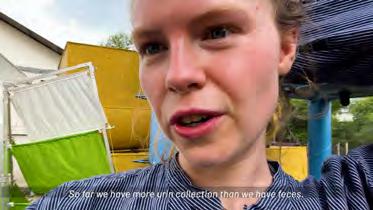
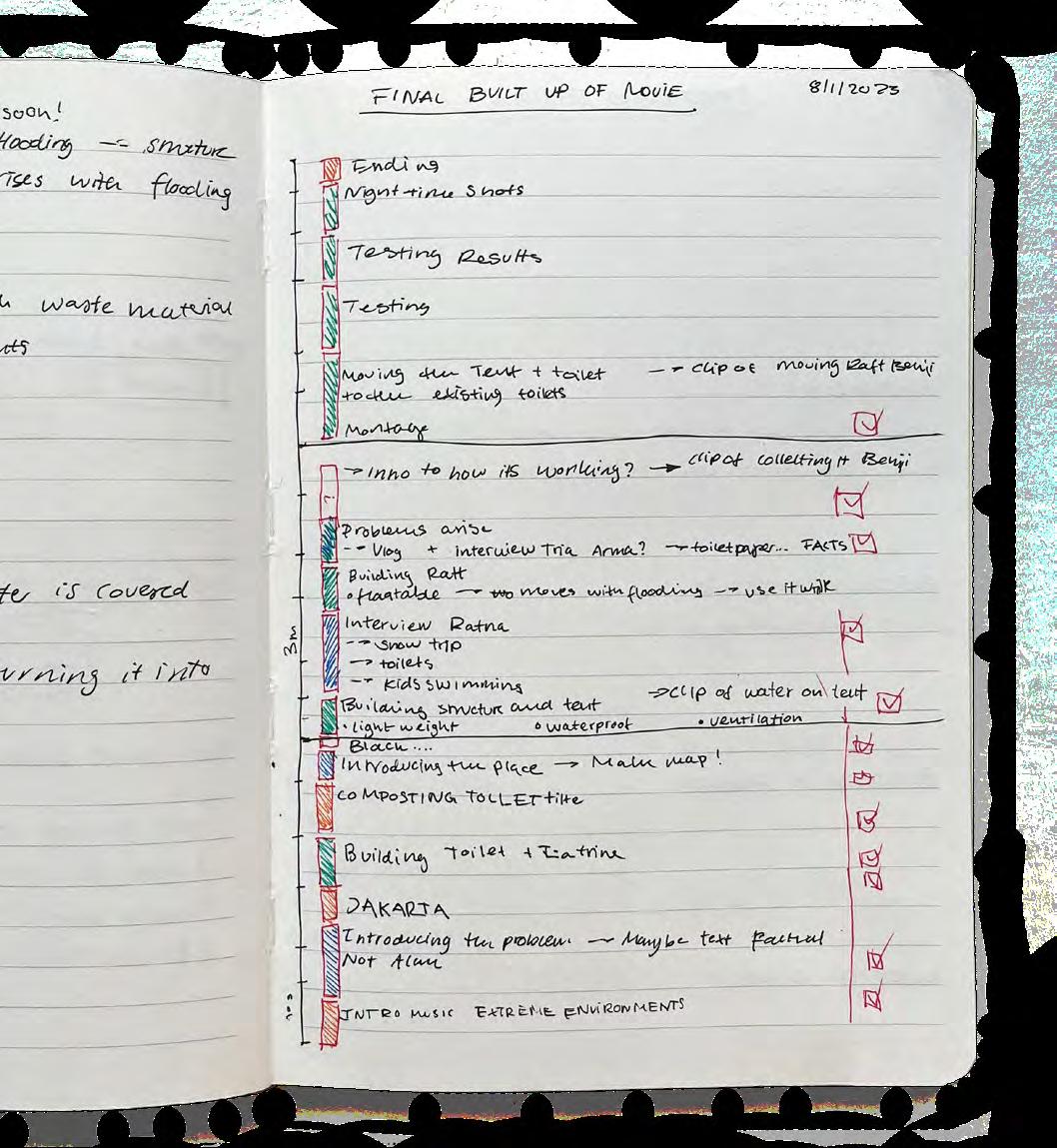
- Voice over in movie
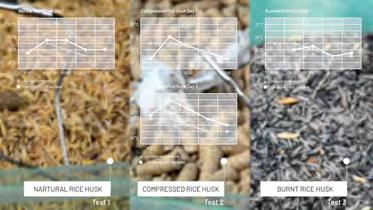
ALMA KOBER SØRENSEN KADK 49 ARCHITECTURE AND EXTREME ENVIRONMENTS
“(The Jambans) ...however pollute the water with pathogens. Local children use the water for swimming, putting their health at risk”




















































































































































































































































































 Permaculture and Rice Terraces
Permaculture and Rice Terraces








